














































Who changed business for the better this year? We picked 20 leaders across industries—from smaller brands to multibillion-dollar valuations—to show you what they’re doing right, and what you can do next.
→ PIERCING PROS Rowan is changing the ear-piercing industry.
Founder Louisa Serene Schneider pivoted her way there.

8 How to Recover When It All Goes Wrong
Here’s a surefire strategy that I learned the hard way. by
JASON FEIFER
13 The CEO Helps the MVP
NBA champion Jaylen Brown has launched a shoe and athleisure brand. Kickstarter
CEO Everette Taylor had some key advice for him. Listen in.
18 Working With Gen Z
Your youngest employees can also be your best. Six leaders explain how they’ve succeeded with a multigenerational workforce.
20 I’m in PR. Don’t Hire Me!
You probably shouldn’t hire PR right now. Here’s what to do instead. by JON
BIER
26 Become Your Client
I am a designer who helps alcohol brands. I launched one myself, and now I understand my clients in a whole new way. by
DAVID PALMER
28 Buy Local Businesses!
It’s an overlooked strategy for growth and wealth: Buy small businesses. Here’s why it works. by
CODIE SANCHEZ
34 Add Time to Your Day
Five new tech products that’ll make you more productive and efficient. by
MARIO ARMSTRONG
57 The 100 Top Schools for Entrepreneurs
Our annual ranking, produced in partnership with The Princeton Review.



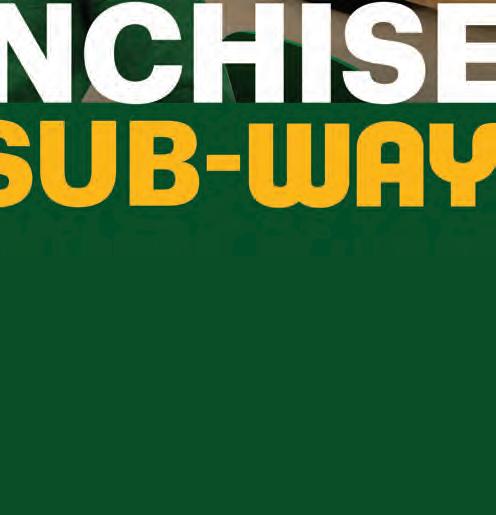




89 Top Franchises for Veterans
PLANET SAVER Allison Wolff’s company Vibrant Planet works t o prevent wildfires. P.52
Our list of the most welcoming brands. by
TRACY STAPP HEROLD
104 How to Know if a Restaurant Will Succeed
This franchisee knows. He grew up in the business. by KIM
KAVIN
106 She Went From Franchisee to CEO
And here’s how it happened: She learned to speak up. by CARL STOFFERS
108 How He Does $2.5 Million in Revenue
Secrets of a top franchisee by CARL STOFFERS
110 Build Your Money Machine
How to build a business that profits while you sleep. by MARK SIEBERT
122 10 Hottest Trends for 2025
Our list of 400-plus brands in trending categories. by TRACY
STAPP HEROLD
144 What Inspires Me
I was afraid to start a business— until I asked this question. by
CHRISTINA BARSI












EDITORIAL
MANAGING EDITOR Monica Im
SPECIAL PROJECTS EDITOR Tracy Stapp Herold
COPY CHIEF Jessica Levy
RESEARCH Andre Carter, Eric White
SPECIAL PROJECTS COORDINATOR Jordan Hall
CONTRIBUTING EDITOR Liz Brody
CONTRIBUTING WRITERS Mario Armstrong, Kristen Bayrakdarian, Jon Bier, Rachel Davies, Kim Kavin, David Palmer, Codie Sanchez, Mark Siebert, Chad Thomas, Sal Vaglica, Rachel Wallace
EXECUTIVE EDITOR Brittany Robins
DEPUTY DIGITAL EDITOR Melissa Malamut
SENIOR DIGITAL CONTENT DIRECTOR Jessica Thomas
ENTREPRENEUR STUDIO DIRECTOR Brad Gage
SENIOR BUSINESS EDITOR Carl Stoffers
EDITOR, CONTRIBUTOR NETWORK Maria Bailey
SUBSCRIPTIONS EDITOR Mark Klekas
SENIOR FEATURES WRITER Amanda Breen
NEWS REPORTER Sherin Shibu
ASSOCIATE EDITORS, CONTRIBUTOR NETWORK Chelsea Brown, Kara McIntyre, Micah Zimmerman
RESEARCH INTERNS Emma Bennett, Elina Natarajan, Karl Wang
PRODUCT TEAM
VP, DATA & OPERATIONS Michael Frazier
AD OPERATIONS COORDINATOR Daniel Belyaks
CHIEF TECHNOLOGY OFFICER Jake Hudson
VP, OPERATIONS Shannon Humphries
PROJECT MANAGERS June Munoz, Julianne Page
SENIOR ENGINEER Jace Poirier-Pinto
ENGINEERS Angel Cool Gongora, Michael Flach, Abel Trotter
FRONT-END ENGINEERS Lorena Brito, John Himmelman
QUALITY ASSURANCE TECHNICIAN Jesse Lopez
ART DIRECTOR Christian Zamorano
SENIOR DESIGNER Jayla Buie
GRAPHIC DESIGNER Andrew Chang
DIGITAL MEDIA DESIGNER Monica Dipres
DIGITAL PHOTO EDITOR Karis Doerner
EDITOR IN CHIEF Jason Feifer
CREATIVE DIRECTOR Paul Scirecalabrisotto
DEPUTY EDITOR Frances Dodds
PHOTO DIRECTOR Judith Puckett-Rinella
CEO Ryan Shea
PRESIDENT Bill Shaw
CHIEF OPERATING OFFICER Michael Le Du
ASSOCIATE PUBLISHER/MARKETING Lucy Gekchyan
VP, SPECIAL PROJECTS Dan Bova
PRODUCTION COORDINATOR Mackenzie Truman VP, NATIVE CONTENT Jason Fell
SENIOR INTEGRATED MARKETING MANAGER Wendy Narez
INTEGRATED MARKETING ASSOCIATE Ashleigh Dennis
SVP, INNOVATION Deepa Shah
PRODUCT MARKETING MANAGER Arnab Mitra
MARKETING COORDINATOR Chris Desrosiers
SENIOR MARKETING MANAGER Hilary Kelley
SENIOR DIGITAL ACCOUNT MANAGER Jillian Swisher
DIGITAL ACCOUNT MANAGER Michelle Gaudy
VP, BUSINESS DEVELOPMENT Charles Muselli
GM, CONTENT SYNDICATION Matt Goldstein
BUSINESS DEVELOPMENT ASSOCIATE Michelle Buzga
ENTREPRENEUR BOOKS
VP, ENTREPRENEUR BOOKS Sean Strain
DIRECTOR OFAUDIENCE DEVELOPMENT & MONETIZATION Anthony Del Conte
SOCIAL MEDIA SENIOR MANAGER Kennadi McCoy
CUSTOMER SERVICE entrepreneur.com/customerservice
SUBSCRIPTIONS subscribe@entrepreneur.com
REPRINTS
PARS International Corp. (212) 221-9595, EntrepreneurReprints.com
ADVERTISING AND EDITORIAL Entrepreneur Media LLC 1651 East Fourth Street, Suite 125, Santa Ana, CA 92701 (949) 261-2325, fax: (949) 752-1180
ENTREPRENEUR.COM
Printed in the USA GST File #r129677027
ENTREPRENEUR MEDIA NATIONAL
ADVERTISING SALES OFFICES
SVP, NATIONAL SALES Brian Speranzini
VP, NATIONAL PRINT SALES James Clauss
ACCOUNT DIRECTOR Krissy Cirello
CHICAGO
MIDWEST DIRECTOR, STRATEGIC PARTNERSHIPS
Steven Newman
DETROIT
MIDWEST DIRECTOR OF SALES Dave Woodruff
ATLANTA
SOUTHERN ADVERTISING DIRECTOR Kelly Hediger
LOS ANGELES
WEST COAST ADVERTISING DIRECTOR Mike Lindsay
GREEN ENTREPRENEUR & ENTREPRENEUR, NATIONAL ACCOUNT DIRECTOR Hilary Kelley
FRANCHISE AND BUSINESS OPPORTUNITIES
VP, FRANCHISE SALES Brent Davis
PRODUCTS AND SERVICES ADVERTISING Direct Action Media, Tom Emerson (800) 938-4660
ADVERTISING PRODUCTION MANAGER Mona Rifkin
EXECUTIVE STAFF
CFO Chris Damore
DIRECTOR OF FINANCE Tim Miller
FINANCE SUPPORT Jennifer Herbert
CORPORATE COUNSEL Ronald L. Young
ASSOCIATE COUNSEL Brittany Ortiz
LEGAL ASSISTANT Cheyenne Young
Vol. 52, No. 6. Entrepreneur (ISSN 0163-3341) is published bimonthly by Entrepreneur Media LLC, 1651 East Fourth Street, Suite 125, Santa Ana, CA 92701. Periodical postage paid at Irvine, CA, and at additional mailing offices.
POSTMASTER: Send address changes to Entrepreneur, P.O. Box 6136, Harlan, IA, 51593-1636. One-year subscription rates in U.S.: $19.97; in Canada: $39.97; all other countries: $49.97; payable in U.S. funds only. For customer service go to entrepreneur.com/customerservice or mail subscription orders and changes to Entrepreneur, Subscription Department, P.O. Box 6136, Harlan, IA, 51593-1636. For change of address, please give both old and new addresses and include most recent mailing label. Entrepreneur considers its sources reliable and verifies as much data as possible, although reporting inaccuracies can occur; consequently, readers using this information do so at their own risk. Each business opportunity and/or investment inherently contains certain risks, and it is suggested that the prospective investors consult their attorneys and/or financial professionals. Entrepreneur is sold with the understanding that the publisher is not rendering legal services or financial advice. Although persons and companies
nor
will be treated as unconditionally assigned for publication,copyright purposes and use in any publication or brochure,and are subject to Entrepreneur’s unrestricted right to edit and comment.
ENTREPRENEUR.COM / November-December 2024
Veterans























I screwed up. It was embarrassing. But then I learned what success really looks like.
I RECENTLY BOMBED for the first time in my professional career. Like, truly bombed It happened in August. I was speaking at a conference in Las Vegas, telling a story I’ve told hundreds of times. Then something went wrong. My mind scrambled. I lost the thread. I stammered and struggled as hundreds of people watched. It was excruciating and embarrassing.
But here’s the truly shocking part: It wasn’t a disaster. People were happy. Grateful, even. They thanked me.
Today, I want to tell you what I learned. Because I’m sure you’ve had moments like this too—when you’ve lost control, and everything fell apart. And I have really good news: Recovery isn’t as hard as you think.
→ Here’s what happened.
I’m in a Vegas conference room, about to keynote a conference for real estate appraisers called Valuation Expo. Then a guy introduces himself to me and says, “I’ll be your timekeeper—so I’ll flash you cards when you have 10 and then five minutes left.”
I say thanks. I’m not worried about the time. I do dozens of these a year; I speak about how people and organizations can thrive in times of change. In this case, I’ve been hired to give a 30-minute talk—and I know how to stay on time.
Then I’m introduced. I hit
the stage and I’m feeling good. The crowd is engaged. I’m full of energy. I do my opening, and then I’m halfway through my first section when the timekeeper flashes me a “10.”
That can’t be right, I think to myself. Maybe he means I’ve been on for 10 minutes? put it out of my mind. But then, a few minutes later, the timekeeper flashes me a “5.”
Now I’m very confused. Clearly, he means I have five minutes left. But how is that possible? I know how long my talk takes—and I should have about 18 minutes left. If there are five minutes left, that means I’ve been talking for 25 minutes. My mind starts to spin. Where did the time go? Did I just ramble for 25 minutes? Is something wrong? And what do I do now? How do I wrap up in five minutes?
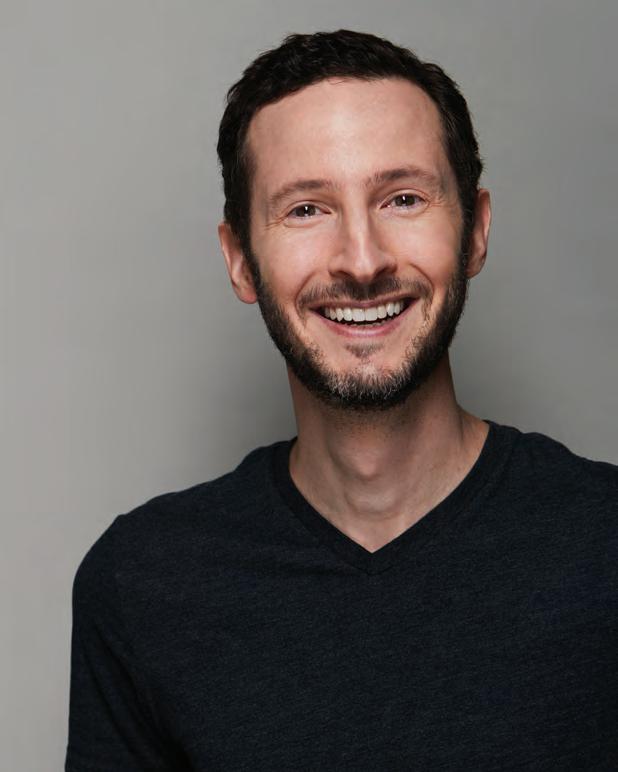
As I’m wondering this, I’m also trying to keep my talk going. I was in the middle of a fun story about a beer company, but now my brain is overwhelmed. I start to lose control. Words become harder.
I’ve experienced a lot of problems onstage, and pride myself on navigating them. I’ve had tech failures. Loud noises. Disruptive audience members. I know how to handle it with grace and humor. But the problem has never been me, and I have no playbook for this.
I stop. I apologize to the audience. I try to keep going, but I
→ Then I realize something. I’m trying to finish my story, and the crowd is nervously rooting for me to just get through it—which means the story is no longer the point. So I fling my clicker onto a nearby chair and I say: “You know what? Fuck it.”
The crowd laughs and claps. The whole room relaxes. I tell everyone I’m exhausted, which is true. I’d slept poorly the night before, woken up early, flown from New York to Las Vegas, and hit the stage at 4:30 p.m. PST, which is 7:30 p.m. for my body. It’s been a long day.
Then I try telling them some other things. My brain is in knots. My body is a mix of adren-
attempt to give some advice about maintaining control in difficult situations, and how every mistake is an opportunity to learn. I apologize. I make a few jokes. I thank them for being so understanding. Then I get off the stage, defeated.
→ That’s when I get clarity. First, the timekeeper runs over to apologize. He is so nice. And he explains what happened. I was supposed to go onstage at 4:30, and his job was to get me offstage at 5:00. But the previous session went long, and the sound guys had to fix something, so I didn’t get going until maybe 4:43. The timekeeper wasn’t sure what to do, so he stuck to his original orders—





have me wrap up by 5:00.
This is why his cues were off. Instead of pacing me for a 30-minute talk, he was pacing me for a 17-minute talk—but I had no idea.
I don’t blame him. I could have paused and asked for clarification—which would have been awkward, sure, but it would have saved the day. I was onstage. I was in charge. It’s a great lesson for next time.
Then attendees start approaching me. They tell me their own stories of blanking out.
“It made me feel better about myself, knowing that you’re not perfect,” one said.
“That was the most real thing I saw today,” another said.
Then I learn that nobody is upset. The event organizers, my dear friends Hal Humphreys and Kim Green, thought I handled it well. (It also taught them a good lesson, they said: Next year, they’re hiring a showrunner to avoid these kinds of miscommunications.) The sponsor, who paid specifically to cover my speaking fee, was also happy— they think my talk was positive and memorable. (Thank you, ServiceLink!)
My brain starts to clear. I am relieved. But still, something nags at me...
→ What could I have done better?
I struggle to fall asleep that night. I keep replaying the situation in my head, and wonder: What else could I have done onstage, after my talk fell apart? How could I have made it more powerful? More memorable?
I start conjuring scenarios—or what psychologists call “counterfactual thinking.” I settle on an alternate reality: I should have asked everyone to raise their hand if they’ve messed up in a big moment,
then had them look around to recognize how universal this experience is. Then I would share some big, powerful lesson.
I can’t get this idea out of my head. I’m so regretful. I need perspective.
I record a voice memo for my friend Katherine Morgan Schafler, who’s a brilliant psychotherapist. I explain what happened, how I handled it, how I’m now stuck imagining all these better ways of handling the moment, and this idea I had for having everyone raise their hand, etc.

Speaking aloud is so helpful. It’s like taking ideas out of your head and putting them on a shelf, where they can be dealt with later. I send Katherine my voice memo. I fall asleep. When I wake up, I have her response.
She says she loves everything I did—except for my fantasy about how I could have handled the moment better. “You’re looking for a ‘perfect’ version of this,” she says, “but your ‘perfect’ version is much less powerful than what ended up happening.”

controllable, and it’s what people will see and remember.
She explains: “Your version of ‘perfect’ is a version where you don’t trust the audience to figure out what everyone in that room knew, and now gets to remember—which is that we all get scrambled, and we all have a choice to make about how we recover. And the speed and efficiency with which we recover isn’t the thing that matters. What matters is that people see us trying, people see us making mistakes, and people see us making reparative measures. The reparative measure is what matters, not whether the reparative measure is immediately efficient.”
This was exactly what I needed. In other words: Don’t measure yourself by how quickly or impressively you recover.
When I get home, I tell my wife, Jen Miller, this story. She has a great perspective too.
“You went to give people a helpful message,” she said. “What happened wasn’t the message you intended to give, but it was an important message anyway. And they’ll remember it.”
→ It’s all true.
Attendees sent me nice messages for weeks after the event.
One wrote: “Earlier today, I was shaking just to stand up and ask a question of a panel in front of my peers, like a fragile child. You were a rock star.” Another wrote: “I know you felt like you bombed BUT literally you were the best speaker by far and I loved how
These messages meant the world to me. But now I also understand what motivates them. You’re not measured against perfection. You’re measured against something deeper, more human, more realistic, and more lasting. So when these moments happen, move toward the humanity in them. Don’t worry about whether you do it well, or quickly, or beautifully. Just worry about doing it. That’s what they’ll remember.

Jason Feifer jfeifer@entrepreneur.com
@heyfeifer subscribe: entm.ag/subscribe



Kickstarter CEO
knows the formula for a successful launch.
recently launched a shoe and athleisure brand. They have a lot to teach each other.
solutions are online sellers with new ways to boost their brands and achieve
Packaging solutions are providing online sellers with new ways to boost their brands and achieve sustainability goals.






In an online shopping market overflowing with millions of digital storefronts, it’s increasingly challenging for brands to rise above the competition. And with 8 trillion online retail sales projected by 20271, it’s only getting harder. To stand out from the crowd — and appeal to shoppers who prioritize sustainability — brands are moving away from plastic and embracing innovative paper packaging.
By increasing recyclability and reducing waste, paper-based shipping and packaging innovations allow brands to meet their sustainability and branding goals. They offer the ideal surface for printing bespoke branding and graphics inside and out and creating memorable unboxing experiences for consumers. Additionally, customized boxes can be designed to fit products perfectly while being lightweight, yet strong and durable enough to withstand transport.
Sustainable paper packaging solutions are evolving beyond the typical cardboard box to meet a growing range of needs. Beyond standard sizes, shipping boxes can be fit-forpurpose in a variety of shapes and sizes, given the flexibility that corrugated cardboard boxes provide, such as rolled corrugated boxes, which are designed to deliver wrinkle-free apparel. Inside the box, paper-based packing material such as packing peanut-replacing paper fillers made from recyclable materials and molded pulp provide a sustainable way to cushion products during shipping.
Paper is sought after by shoppers
Thanks to these solutions, shoppers can feel better knowing their online purchases are delivered to their doorstep in paper packaging and boxes made from tree fiber — a renewable resource that is regenerated naturally and through replanting and can be recycled up to seven times.
A recent Brookmark study for the Paper and Packaging Board indicated that 77%2 of consumers prefer paper-based shipping materials. And, with 69%3 of consumers polled in another survey reporting that sustainable shipping practices influence their purchasing decisions, the smart move for brands that are looking to boost brand loyalty and consumer perception is to switch single-use plastic packaging materials for paper.

A paper shipping bag that’s stylish and aims to make a big impact
Billions of pieces of clothing are produced every year and many of them are packed and shipped in single-use plastic bags that are rarely recycled. Non-recycled poly bags are burned, litter landfills, or end up in the ocean.
Enter Vela™ paper-based transport and packaging bags, a sustainable product packaging alternative that can replace polybags and curb single-use plastic pollution. Seaman Paper launched Vela bags in 2016 to help brands make a meaningful environmental impact.

“We’re strong advocates for paper because of its high recycling rates and its status as a renewable resource,” says Chris Jones, Seaman Paper’s Global Product Manager. “As an ocean lover who’s spent a lot of time on coastlines, I’ve seen firsthand the overwhelming presence of plastic debris around the world, which Vela bags are designed to mitigate.”
Renewable packaging innovations such as Vela paper bags deliver sustainability benefits beyond the material they’re constructed from. Smaller, lighter weight packing materials such as these save space and cut down on the number of truckloads on the road. Removing excess packaging leads to 24 million fewer truckloads annually in the U.S.4 Unique, sustainable paper packaging can also enhance the unboxing experience, leave a lasting impression of brand values, and even encourage repeat business.
“Vela bags allow retailers to blend sustainability with creativity,” Jones says. “They’re not just to protect products — they’re a way for brands to communicate their environmental efforts while using the bags as a customizable marketing tool that strengthens brand recognition. Brands can use them to create a positive customer touchpoint.”
To learn more about innovative paper packaging solutions, visit howlifeunfolds.com/innovations

By choosing paper products, you’re taking a sustainable path forward that also gives back. When you use paper products, you’re doing your part to help the planet. Because the paper, packaging and boxes you rely on every day can be recycled up to 7 times. In fact, paper is one of the most recycled materials in the U.S., and it comes from a natural and renewable resource—trees. Choosing paper products encourages America’s private forest landowners to grow and maintain healthy forests at a rate nearly double the volume needed to make the products you rely on every day. And that’s something we can all feel good about.
CHOOSE PAPER AND PAPER PACKAGING AND BE A FORCE FOR NATURE. Learn more at howlifeunfolds.com








How do you kickstart a new brand when you’re up against deeppocketed competitors?
That’s what Jaylen Brown is considering. NBA fans know him as this year’s reigning Finals MVP, who just led the Boston Celtics to their 18th championship. But shoe dogs know him as a rebel—the star player who turned down $50 million in endorsement deals, publicly sniped at Nike, and then, in September, revealed his big move: He launched his own shoe and athleisure brand called 741, and plans to sign other athletes with competitively generous deals, thereby undercutting the big shoe brands.
To help Brown start, we connected him with Kickstarter CEO Everette Taylor—an exec with deep marketing experience, whose platform has helped founders raise more than $8 billion. The meeting was part of a new series called The Playbook, created by Entrepreneur and Sports Illustrated, where we pair entrepreneurial athletes with the leaders who can help them. Here, you’ll learn Brown’s philosophy on playing the long game, and Taylor’s formula for successful launches.
EVERETTE TAYLOR: You’re living the dream right now. I’m impressed by how you recognize that, no matter how successful you are now, you have a long life and the NBA is just one part of your career. Where did that recognition come from?
JAYLEN BROWN: I got that from growing up playing chess, because there’s three components to a chess game: an opening, a middle, and an endgame. As you approach your strategy, you have to know all three at the same time. Your opening act determines how you’re going to finish the game.
So when I translate that to life, I am positioning my pieces. It’s why I started thinking about the end of my career at the beginning. I know that this is a game.
TAYLOR: Yeah, I have that constantly in my head. I was homeless in high school, and I would go to the local library for shelter, and that’s where I learned about people like Mark Zuckerberg and Jack Dorsey, and I was like, wow. I wasn’t talented enough to be an NBA player, but this tech thing seemed like something I could do. I’m grateful for tech, because it gave me opportunities that my mom didn’t have, and opportunities that my ancestors and people in my neighborhood growing up didn’t have. Technology provided no excuses for me. It was a platform to really learn, grow, and build a career around.
So now, to your point about seeing the whole game at once, I have the vision that I want for my life, and I’m essentially working backward from that. It’s not about certain accomplishments; it’s not about having a certain level of money. It’s about, This is what I want my life to look like. Every move that I make, every job that I take, everything that I do is intentional to get to that path.
BROWN: And that’s the battle of humanity! Because, yeah, you have a mission, you have a purpose that leads you every day, but you still have emotions, you have vices, you have things you want to do. That’s why you need discipline and discernment. At 28, I’m still figuring it out. But I’ve got a clear vision for my future.
TAYLOR: So let’s talk about one of those things you’re building—your brand. What led you to launching it?
BROWN: Honestly, I got the idea from Kobe [Bryant], rest in peace. Before he passed away, he was planning to launch his own shoe brand, sign athletes, and give them better deals and percentages. I remember reading an article about that, and I thought it was dope.
I’ve gone through my own experiences, dealing with major corporations and how they value your creativity, and how they value you. I met with every brand and none of them stood out. They all kind of approach things the same. I was looking for the brand of the future, not the brand of the past. And I couldn’t find it, so I had to start it.
TAYLOR: That’s brave. It’s something a lot of people don’t do, because they’re willing to just take the scraps that other peo-
design. You’re a creative. I know sometimes it’s tough to use that word about ourselves, but I think a true creative doesn’t want to be bound by anything. They don’t want infrastructures that halt their creativity. So yes, money matters, and we want to be able to take care of our families, but when someone really embodies being the creative, they need to be able to put their art form out into the world the way that they see fit.
BROWN: Yeah, and storytelling is so key here. There’s a lot of meaning and purpose and intent that I put into every facet of the brand, and I want to let stuff breathe, and roll it out as people start to ask more questions. I don’t want to force anything. It doesn’t have to be the hottest brand on the street by tomorrow.
that vision. Not to call anyone out, but a lot of bigger corporations have built their companies off the back of a great brand and great storytelling, then dumped billions of dollars into performance marketing instead of creativity, storytelling, and authenticity.
BROWN: That’s the cycle of life. Once you get to be so big and so successful, you’re trying to maintain. You’re just trying to protect what you’ve already built. Then you lose the ability to go forward and to keep breaking barriers.
TAYLOR: That’s why my biggest advice to you is just: Be obsessed with growth and innovation and design, consistently. The moment that you get comfortable—and you
THE MOMENT YOU GET COMFORTABLE, THAT’S WHEN GROWTH STOPS. YOU MIGHT STILL BE MAKING MONEY...BUT IF YOU’RE NOT CREATIVE ANYMORE, IF YOU’RE NOT INNOVATIVE ANYMORE, THEN YOU’RE NOT GROWING.”
ple give them. What do you think most differentiates your brand compared to others?
BROWN: The design. I designed everything myself. I was just at the factory in South Korea, on the line, making sure stuff was done in the way that I see fit. I passed on probably almost $50 million worth of deals [from other brands] in order to start something on my own. And it’s not because I didn’t like the money they offered. It’s because those deals pigeonholed me, and they didn’t allow creativity.
TAYLOR: Man, you lit up when you started talking about the
TAYLOR: I’m glad you have the marathon mentality, because none of the big shoe companies or apparel companies started off with major growth. It happened over time. I think your brand is going to personify authenticity, and people want to see and feel that—especially with Gen Z and new types of consumers. They’re buying things in a completely different way. They want to feel like that brand cares about people, and that it’s aligned with their interests and on the right side of good.
When you look at some of the big corporations in the space, I feel like they’ve lost
don’t seem like the type of person that’s going to get comfortable, but still—that’s when growth stops. I think about that all the time with Kickstarter. The moment we get comfortable, that’s when the company’s dead. You might still be making money, you might still make millions or billions of dollars, but if you’re not creative anymore, if you’re not innovative anymore, then you’re not growing.
But I think you got the right mentality. I’m excited to see what you do.
BROWN: I hope so. Wish me luck, man.

People often say that younger employees are different. But are they? We asked six business leaders what they’ve learned, and how their teams thrive.
1/ Embrace open dialogue.
“I find that younger generations are more forward with communicating their expectations. When I started my career in 1998, being open and vocal was looked down on as being unprofessional, but now I realize open dialogue helps determine if expectations are aligned. During the hiring process, one candidate shared that traveling for work was not preferred. I knew the role required traveling often, so it was easy to determine this person wasn’t compatible.”
—JOYCE DE LEMOS, cofounder, Dieux
2/ Empower younger workers.
“I think about two girls I hired who started off very unsure and shy. They stood around waiting for instructions, and had trouble with the fast-paced atmosphere. I thought about letting them go, but decided on a different approach. I enlisted them to train someone, telling them that they were the best employees to do this. That experience really empowered them. Shortly after, they took ownership of their roles, were self-starters, and one even was promoted to manager.”
—LISA MASTELA, founder, Bumpin Blends
—LISA
3/ Be curious, not judgmental.
“Gen Z is looking for long-term purpose and passion, while older generations built our work culture around long-term professional and personal stability. As a millennial CEO, I created a junior advisory board of Gen Z members to reverse-mentor me, and their perspective influenced how we built this business. I’m at my best when I’m approaching concerns with curiosity rather than judgment.”
—STEPHANIE LEE, founder, Selfmade
4/ Keep on keeping on.
“It’s clear there is a divide in expectations. But the reason the long-standing ways were long-standing is because they worked. There is no substitute for hard work. Get up early and stay late— that’s my motto. I learned hospitality from the ground up, from busboy to founder. If you skip this part, you cannot be an effective leader. Today, as throughout history, it is results, results, results that matter.”
—STEPHEN J.
—STEPHEN J. CLOOBECK, founder, Diamond Resorts International
5/ Make use of mentorship.
“Our company is heavily composed of younger employees, and I’ve noticed that purpose and impact, work-life balance, flexibility, and mentorship come up continuously. Many of the youngest generation started their careers from home, so they didn’t get that ‘first day on the job’ experience. They’re hungry for mentorship, so I think mentors will play a huge role in bridging the gap.”
—MATTHEW ROWEAN, chief creative officer, Matte
6/ Don’t resent their desires.
“Every younger generation has differing expectations. As a ‘boomer,’ I expected to have to travel almost weekly, while today’s digital natives expect state-of-the-art technology, fast promotion growth, flexibility, and continual positive feedback. But wouldn’t we all have wanted that if we could have it? As a working mom, flexibility would have changed my career and life. I still believe in-person meetings are the gold standard for building relationships, but we can all learn from each other.”
—JANE WURWAND, founder, Dermalogica
—JANE
“Fisher does more than manage my investments, they have a holistic approach to enjoying life’s journey.” - John, client since 2009

Investors with $500,000+, let this collection of valuable insights from our successful clients help guide you along the route to financial freedom. Call 888-570-4782 to request your copy and learn:
› 5 tips for building your financial dream team
› 8 tips for having fun with travel and hobbies
› 10 tips for deciding where to put down roots
› And much more to help you along the way


“We’ve learned a lot through Fisher, including when to take Social Security.” - Bill, client since 2016
Clients are uncompensated for testimonials, which reflect their views at the time. Investing in securities involves the risk of loss.
I’ve
Entrepreneurs often think they need PR. Most don’t. Here’s why you’re probably better off not hiring someone like me. by JON
BIER

you’ll know whether your
They’re also gaining valuable insights into their daily operations.
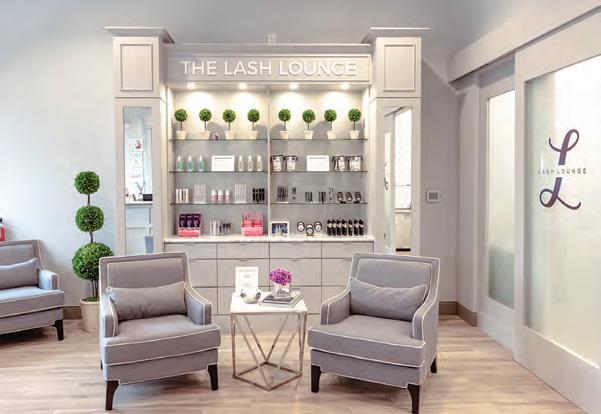
Last year, Kristin Kidd received an email from someone she didn’t recognize. Like most of us, Kidd was inclined to simply delete it. But something compelled her to open it and read it from start to finish.
It’s a good thing she did. The email was from a representative at Amazon Business talking about the ways it helps businesses save money when purchasing office supplies and other goods. Kidd, the COO of Head to Toe Brands, was ready to learn more.
“I never usually reply to email that comes from outside the organization,” Kidd explains. “However, at this point we did not have a unified partner [for ordering supplies]. At the time I was very intrigued and set up a meeting. From there it was an absolute no brainer.”
Established earlier this year by private equity firm The Riverside Company, Head to Toe Brands comprises a trio of beauty/wellness franchise companies: The Lash Lounge, Bishops Cuts/Color, and Frenchies Modern Nail Care.
Working with her Amazon Business rep, Matt Jordan, Kidd started slow, rolling out Amazon Business to several of The Lash Lounge’s 140 franchise units in the U.S. “Every business needs toilet paper, glass cleaner, coffee pods, mops and, in our case, things like Barbicide disinfectant, and other items,” Kidd says.
With prices for many common office supplies on the rise, Kidd was keen to keep prices down for her franchise owners and to generally gain more visibility into the ordering process across all locations. “Many were using personal Amazon accounts while some used other vendors online or just physically went to the stores,” Kidd recalls. “Our job is to constantly be helping our franchisees make their lives easier. The benefit to being in a franchise system is taking advantage of economies of scale.”
Today, thanks to Head to Toe’s Amazon Business Associated Accounts Program, Kidd says its franchisees are saving
money on supplies. Once a main account (corporate franchise) is set up for the brand, its manager can invite other businesses (franchisees) to order via Amazon Business under the same associated account. The result is that all users can share benefits and discounts while operating and ordering independently.
The savings continue to add up for Head to Toe Brands with Business Prime, which offers free one- or two-day shipping on millions of eligible items. Also, depending on the subscription level, a business can also take advantage of features like Spend Visibility and Guided Buying, which helps create policy rules that guide employees to company-approved products.
Big plans for savings across the entire organization
Kidd says the response to ordering supplies via Amazon Business among The Lash Lounge franchisees has been exceedingly positive. So much so that Kidd is in the process of instituting Amazon Business across Head to Toe’s 40+ Bishops Cuts/Color franchises as well as their more than 20 Frenchies Modern Nail Care franchise locations in the U.S.
“The fact that Amazon Business saves even more than a personal prime account is the absolute best part about the program, hands down,” Kidd says. “Layer in the ability to get Amex cards, to have assigned ordering permissions for your employees, and to have multiple locations under one login, and you save time and money.”
Kidd says she isn’t the only one who is excited to complete the company-wide rollout. “Our brand leaders are excited to offer Amazon Business to their franchisees so they can start saving.”


money is being well spent. So how do you start? Here are three things you need to know.
1/ PR has massively changed.
When I started in this industry, a publicist mostly did one thing: They got you press. This meant setting up meetings with reporters and editors, which hopefully led to great coverage in newspapers, magazines, and TV shows. The impact of this coverage could last months, or even change a company’s fortunes.
Now, the impact might last days…or it might have no impact at all.
Everything has changed. Newspaper and magazine readership is declining. In Google searches, sites like Reddit now often rank higher than traditional media sites. A press hit can still be valuable, but in a more nuanced way.
For example: You might get quoted by The New York Times; it’ll drive zero sales but is great for
your brand reputation. Then you might get featured in a random mommy blog; it’ll drive great sales but do nothing for your reputation. Everything’s a trade-off.
Here’s another example: Decades ago, everyone sent a press release. Today, you should run away from anyone who suggests it. Press releases are emailed to reporters who promptly delete them, and they’re distributed to forgotten corners of the internet where nobody reads them.
As a result of all this, a modern publicist must be more than just a press-chaser. PR today is about brand-building, storytelling, and getting you in front of the right customers— whether through influencer marketing, podcasts, social media, viral videos, partnerships, or affiliate marketing. The best publicists do it all. They are an extension of your marketing department.
And this means something important…
2/ You better understand how PR works. Effective PR crafts a narrative around the problem your product or service solves, rather than just promoting the product itself. Often, the most compelling PR stories barely mention the brand at all. Instead, they focus on the larger issues or trends that make your brand relevant and necessary.
Let’s say you’re promoting a health supplement. Instead of just seeking articles about how great your product is (which almost zero reporters will write), more enduring PR might involve having your brand’s medical experts discuss GLP-1-related issues and their impact on metabolic health in America. This creates topical educational content about the broader metabolic health crisis while also positioning your brand as a thought leader in the field.
Maybe you’re thinking, But how will those articles directly
drive sales? The answer: They won’t, and that’s OK.
This is another misconception about PR: Founders often think of it as a silver bullet for sales. They want to hire a publicist to drive attention for the brand, hoping it leads to a sales blast. Instead, PR has to be a long game. It’s the slow grind of building awareness and authority.
If sales is your primary goal, don’t look for traditional media coverage at all—because, as I said above, the outcomes are too varied.
Instead, find a publicist who really understands affiliate marketing. They’ll focus on getting your brand featured in e-commerce-focused articles like “10 Best Shaving Creams for Men,” where your affiliate link will track conversions and give the media outlet a cut of those sales.
3/ Before you hire PR, do it yourself.
Maybe you’re reading this and thinking, This sounds complicated. Isn’t this why I should hire a publicist? The answer is no. This is exactly why you shouldn’t hire a publicist—at least, not yet.
Perhaps you’ve heard this old saying before: The creative is only as good as the brief. In other words, an ad agency can’t make an amazing ad for you unless you give them incredibly specific guidance about what they’re selling.
The same is true here. Many publicists are talented, but they’ll never understand your brand as well as you do. You will always be your brand’s top expert, which means that you need to perfect the way you tell your brand’s story—which means that you should start pitching by yourself. Learn by doing.
How? Put yourself in the
MOST ENTREPRENEURS SHOULDN’T HIRE PEOPLE LIKE US. WHY? BECAUSE PR ISN’T JUST ABOUT GETTING PRESS. IT’S ABOUT TELLING YOUR STORY—AND YOU SHOULD NOT OUTSOURCE THAT WORK UNTIL YOU’VE PERFECTED IT INTERNALLY.”
shoes of a publication you’re targeting. Ask yourself, “What part of my story provides value to their reader?” And be realistic! The answer cannot be, “Because I’m so valuable and inspirational.” Every publication’s readers have some kind of desire—whether it’s to be healthier, more stylish, smarter, or better entertained. How do you and your brand add value to these people?
Once you figure that out, reverse engineer your pitch to tell that story.
This is the core of public
relations. It’s not about the story you want to tell—it’s about finding the part of your brand that connects with that publication’s audience.
I won’t sugarcoat it: You’ll get ignored and rejected a lot. But guess what? Publicists do too.
The difference is that by doing this yourself, you’ll start to understand what resonates and what doesn’t. You’ll begin to see what this effort is worth—and you won’t have spent a dime. Don’t outsource your PR until you feel you’ve gotten as
far as you can without it. But when it’s time…
4 / How to hire PR
Hire PR with the same diligence you’d apply to a lawyer or an accountant. Do some digging. Ask to see their current work, get references from their clients, and read their recent press. Most PR firms are public-facing, so this should be easy to find.
While you’re at it, ask about their client retention. If they’re losing clients every six
months, there’s probably a reason—and not a good one. In our agency, we typically stay with our clients for five to seven years. Long-term relationships allow for deeper understanding and more effective storytelling.
Your PR agency should understand that effective PR is a mosaic that weaves together various elements to tell a cohesive brand story. Don’t settle for someone who only wants to do things one way.
But honestly, by the time you’re ready to hire PR, you’ll know all this already—because after doing your own PR, you’ll be prepared to finally outsource it to the right partner.
Jon Bier is the founder and CEO of Jack Taylor.



















Free to safely use any technology. It’s possible. It’s Okta.



































From the beginning, Okta has focused on securing Identity so your company, employees, partners, and customers can access their digital world.






Today, it’s more than just secure access. With our comprehensive Identity solutions for enterprises and developers, we free you to build your stack your way. So you can grow revenue, increase efficiencies, control IT costs, and strengthen security.
From emerging startups to the largest global enterprises, we’ve got you covered. With Okta:



Developers effortlessly scale SaaS apps. Financial services fend off global cyberattacks.
Local governments build accessible services for all.
And retailers delight millions of customers with seamless experiences.



That’s why nearly 19,000 of the world’s most trusted brands trust Okta.





As a designer for brands, starting my own product company gave me a dose of humility— and it changed the way I relate to clients. by DAVID
PALMER
Ithought I understood my clients’ needs. Then I started doing the same work as them—and realized how much I had to learn. It was humbling, but it also made me better at my job. Back in 2001, I cofounded an agency called Love, which designs brands, packaging, communications campaigns, and experiences for the likes of Jim Beam, Johnnie Walker, and Guinness. Over the years, we’ve come up with a lot of ideas that never saw the light of day; we called them “urchins”— wily ideas without a home. So in 2020, we launched Urchin Spirits, with hopes of filling “fat niches” in the spirits market— or underserved segments with low barriers to entry, but significant growth potential.
But pretty quickly, we realized there were a lot of external factors affecting our clients’ decisions that we’d never had to worry about as designers.
For example, we came in with a distinct vision for our first product, an Irish whiskey-based liquor we’d named Lucky Sod. We wanted it to look short, stubby, and heavy (which meant thicker glass at the bottom), and to top it with a cork stopper instead of a screw cap to help it feel distinct and premium.
But once we took a hard look at the margins for our designs, we saw just how expensive glass can be—so we took some out. And then we took out
some more. We started selling the product, but retailers told us that the bottle was a little too wide, that we were being greedy with shelf space. Then bartenders told us that the cork was annoying, and they’d prefer a screw top.
As all this was happening, I started to think about how I’d advised clients in the past. Like a lot of creatives, I lived in a kind of “design utopia”—a place where design matters more than all other considerations. I’ve pushed clients to adopt the “best” design, even if it made bottling and packaging more complicated. At the time, I genuinely believed I was acting in their best interests.
But we’d never had to put our own money behind our ideas. When making Lucky Sod, I started to see the conflicts of those considerations. If we spent more on a glass bottle, we’d have to spend less on the quality of the liquid. If we held to our original vision, we’d risk annoying the retailers and bartenders we rely upon. Was that the right thing to do, in the name of pure design?
That was just the start; other challenges would follow: Spiraling energy costs and the war in Ukraine have caused a glass supply shortage in Europe. There’s been a rise in duties on alcohol, which has squeezed margins even more. Higher alcoholic percentages (ABV) mean you have to cross higher duty
having better conversations with our clients. We have firsthand learnings about the price sensitivity in the market, or what’s working activation-wise and how consumer tastes are shifting, and we bring those insights into our design projects. We no longer always push for the most bespoke, premium design. We’ll still show clients the “design utopia” version, but if that’s running a little rich, we’ll also show them the silver and bronze options. We try to
packaging—designing it in a way
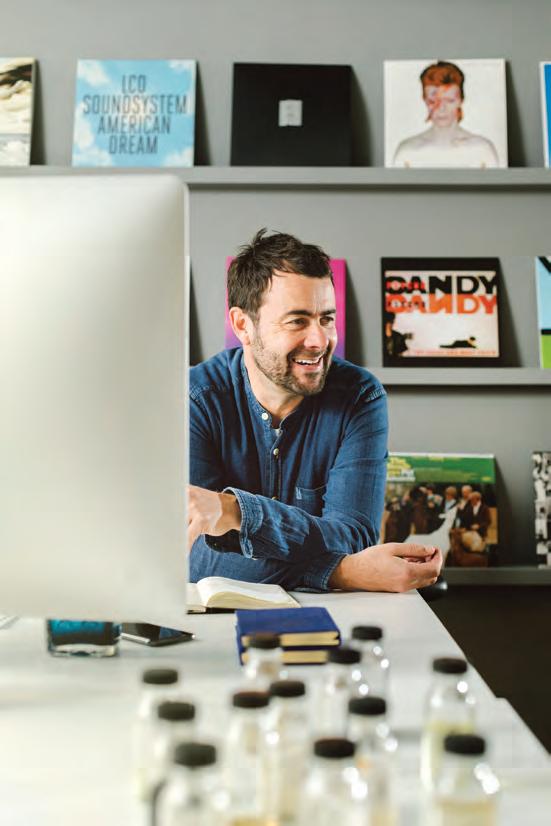
offs on the overall aesthetic. Running a drinks business alongside the agency has sharpened my ability to find balance. Now, I hear the client’s voice on one shoulder and the designer’s on the other, but they’re no longer in conflict—they’re working together. Standing in our clients’ shoes has helped us to see the bigger picture, and how our work fits into it. Clients can see it too. They know we get it, and our work is all the better for it.
One of the world’s most exciting economies over the past two and a half decades, Mexico saw its trade with China increase fortyfold between 2000 and 2021, while achieving the largest increase in goods trade with the US of any world economy except China itself, according to global management consultancy McKinsey. In 2019, the Latin American giant overtook China as the US’s largest trading partner, thanks in large part to the US–Canada–Mexico Trade Agreement, which should continue to support the growth of trade across North America.
Mexico’s economic expansion and the demands of rising trade have boosted activity and investment in its transportation sector. The “transportation infrastructure equipment and services” niche alone is worth upwards of $4bn, according to the US International Trade Administration, presenting a “best prospect industry sector” for investors. The broader road freight transport market is worth $43bn and is expected to grow by 5.37% annually to 2030, Mordor Intelligence estimates. The ITA highlights billions of dollars of investment in infrastructure, including airports, ports, rail, and motorways.
Tresguerras is the oldest transportation company in Mexico, founded in 1930s by a group of so-called “truck men”, who owned their own vehicles and drove them to transport goods and people between the cities of Celaya, Salvatierra and Acambaro. This informal network became a company in June 1935, with the foundation of the Tresguerras Transport Cooperative Society.
“The first 30 years of the company were very difficult, and by the beginning of the 1960s, the company was practically bankrupt,” says Jorge Almanza Mosqueda, president of Tresguerras. “What changed was the arrival of my father Leopoldo Almanza Vera in the company leadership. He took over in the early 1960s and had a vision to change the way the company operated. At that time cargo companies did not have warehouses, but Don Leopoldo proposed to the partners to build distribution warehouses, and he built the first warehouse in 1963, against the opinion of the other partners. That’s when the accelerated growth of Tresguerras began, and more and more warehouses were built. He also convinced the members to liquidate the cooperative and establish an SA [a limited company], which again contributed to the accelerated growth.”
The figures bear out the company’s remarkable success story. Tresguerras’s coverage grew from Mexico City to Ciudad Juarez, and by the end of the 1980s it was already the largest transportation company on the route between the two cities. Another inflection point for the company came in 1989, when the law on cargo transportation was liberalised, with the limitation of only working one route was removed, allowing the company to work across the country; free competition for transportation rates was also introduced, creating a freer market in a radical change.
Jorge Almanza Mosqueda took over the presidency of the board in 1992, and outlined a three-pronged strategy based on investing in quality, technology, and infrastructure. The first pillar of this strategy entailed investment in training and certification, taking the criteria of the ISO 9001 standard as a guide. Tresguerras obtained the first of its several certifications in 2003.
To enhance its technology, Tresguerras invested in automating its processes across the supply chain, bringing all its operations in-house, from documentation onwards. And thirdly, the infrastructure pillar has seen a huge expansion in its warehouses from 20 to 180 across the country, following the certification of its quality system.
Tresguerras now owns 3200 “road” trucks and a further 1100 “last mile”
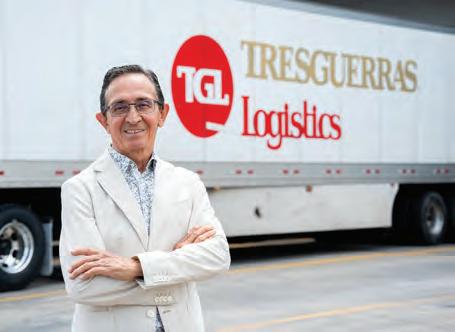
trucks which deliver to end customers, and has 10,000 employees. In 2023 it achieved sales of MXN10bn, around $523mn.
As the market leader, Tresguerras has strategic partnerships with several of the world’s leading logistics and retail companies, including UPS, DHL, Amazon, and online marketplace Mercado Libre, as well as national airlines including Aeromexico. These excellent relationships with a range of multinationals operating in Mexico reflect Tresguerras’s dedication to its three core focuses of quality, technology, and infrastructure; its outstanding corporate culture; and its in-depth knowledge of the local market.
“We’re always ready to establish new alliances with international companies coming to Mexico,” says Almanza Mosqueda. “Tresguerras is a world-class company, delivering 100% customer satisfaction. We can give you the best service, as one of the best companies at what we do anywhere in the world. You’ll be surprised at all we are capable of doing.”
Almanza Mosqueda takes particular pride in the company’s culture, and its commitment to training and developing people. The company is ranked as one of the best places to work in Mexico, and has one of the lowest turnover rates in the country. Its talent-generation programmes include inclusivity schemes to hire more female operators, and flexibility for SME partners. And in 2019, the company founded the Universidad de Tresguerras, a corporate university training Tresguerras’s employees’ children, and anyone who wants to train in this profession, in areas including truck operation.
Tresguerras’s success reflects the youthful dynamism of Mexico’s economy, and its entrepreneurs – and company and country will continue to grow hand-in-hand.
“There are tremendous opportunities in Mexico,” says Almanza Mosqueda. “We have a young population that is willing to work, with an average age of just 27. We have natural resources, a very good climate, we speak the third most-spoken language in the world, we have incredible culture and are very welcoming to tourists. There is great interest from foreign investors.”

It started when I bought one little laundromat. Now I have a whole portfolio of small local businesses that bring in tens of millions in revenue a year. Here’s why following my playbook could be your ticket to financial freedom—and saving America’s local small businesses. by CODIE
SANCHEZ
I’ll never forget the day I bought a laundromat, nearly a decade ago. It was my first real step toward financial freedom. As I turned the key and shoved my shoulder into the jammed door, I paused to breathe it all in. That sweet smell of detergent...and mold. Aah! Then the doubts flashed through my mind: Codie, WTF have you gotten yourself into? You know nothing about washing machines. You barely do your own laundry! I batted the thoughts away. For better or worse, everything was about to change—because I had a theory, and I was putting my own money down to test it.
Here’s the big idea: Buying Main Street businesses is the most underrated path to wealth. If you do it right and are willing to put in the work, it can not only pay you enough money to quit your job, but also allow you to pay someone else to run it with you. By Main Street businesses, I’m talking about small, local businesses that involve minimal intellectual property and provide a needed product or service—like car washes, laundromats, vending machines, storage centers, repair shops, pack-and-ship centers, and more.
Why are these so valuable? Consider this: Thirty-five percent of boomer-owned businesses have been in operation for more than a decade. Nearly 80% are profitable, with steady, loyal customers. And most of these businesses will end

The fourth-largest economy in Sub-Saharan Africa, Kenya strengthens its position as an attractive investment destination for firms looking to enter local, regional, or Pan-African emerging markets.
As a member of the East African Community (EAC) and the Africa Continental Free Trade Area (AfCFTA), as well as other important trade blocs like COMESA, businesses in Kenya benefit from exclusive trade access to a market of over 600 million consumers. Kenya is also one of the strongest economies in Africa, with the IMF estimating economic growth at 5.0% this year.
Kenya’s banking sector has been a crucial driver of the country’s economic growth and its reputation as East Africa’s premier financial hub. There are over 40 commercial banks registered in Kenya. Over the past two decades, the demand for sophisticated financial products has risen substantially due to a rising middle class and increased urbanization. In adapting their services to meet the population’s evolving needs, Kenyan banks have become regional frontrunners in fintech, including blockchain, AI, and digital banking platforms.

Established in 1992, Prime Bank is one of Kenya’s leading banks and a trusted partner for individuals, businesses, and communities across the country. With a nationwide network of 24 branches, Prime Bank offers clients a comprehensive suite of banking products and services tailored to meet their specific needs. The bank is also present in several regional markets, including Malawi, Mozambique, Botswana, Zambia, and Zimbabwe.
According to the bank’s chairman, Dr. Rasik C. Kantaria, the secret to Prime Bank’s success lies in its exceptional customer service philosophy. He explains how the bank’s vision for a personalized service began when it was established as a small shop serving the community in the 1970s by his grandfather. In the 1990s, Prime Bank experienced explosive growth by meeting the demand for a financial institution that understood local business. By providing flexible microfinance services, Prime Bank was able to disrupt the market and compete alongside blue chips and multinational financial institutions.
“At the time, big banks like Barclays dominated the scene,” recalls Dr. Kantaria, “but they lacked understanding about how local business was conducted. We started offering services such as short-term business loans. We understood that with honest people, businesses would succeed, and our operations would grow.”
Today, Prime Bank carries forward this vision through customizable, cutting-edge solutions, whether for personal banking or corporate finance. The majority of the bank’s clients are MSMEs, for whom Prime Bank is their one-stop shop, covering lending, foreign currencies, cash management, and insurance. The bank also offers businesses a stateof-the-art SME platform, flexible credit, and 24/7 customer support.
Meanwhile, Prime Bank’s four-tiered system and highly experienced relationship managers (RMs) provide comprehensive client coverage across the full spectrum of banking services for retail customers. This includes everything from cross-border wealth management and estate planning for ultra-high-net-worth individuals (UHNWIs) to convenient mobile banking and credit card solutions designed for affluent and middle-income individuals. Prime Bank has pioneered two fintech products, PrimeNet and PrimeMobi, in support of Kenya’s inclusive digital transformation journey.
By attracting such a diverse clientele base, Prime Bank has
successfully positioned itself as a leading community bank. “We’re experiencing amazing growth right now,” says Dr. Kantaria, “I credit this to our exceptional range of services and the professionalism of our staff.” In 2023, Prime Bank achieved a remarkable 19% year-over-year increase in profits to KES 4.23 billion and expanded its total assets by 21% to KES 169 billion. Over the next six years, Prime Bank aims to boost its total income to KES 17.99 billion, which represents a CAGR of 42.4%.
Prime Bank’s ambitious growth plan presents a host of new opportunities for investors and partners looking to do business in the region. With its extensive knowledge of the local market and regulatory environment, Prime Bank is well-positioned to support its clients’ business ventures in Kenya and beyond. “We’re more than just a bank,” says Dr. Kantaria, “we actively assist investors in setting up their business and becoming licensed. We also connect them with our client network to help integrate them in the market and provide facilities through a nearby business park.” Prime Bank is currently in correspondence with the likes of Citibank, Deutsche Bank, and the Bank of China.
Besides supporting local businesses, Prime Bank is deeply committed to making a positive impact on the communities it serves. The bank actively engages in various CSR initiatives in education, healthcare, and community development. Last year, Prime Bank donated KES 1 million to M.P. Shah Hospital and the Healing Little Hearts Charity to support the treatment of 80 children with congenital heart disease. Additionally, Prime Bank provided relief food to 20,000 families affected by severe drought in northern Kenya.
“We’re committed to the well-being of the people of Kenya. Our nationwide presence ensures we can respond to distress in any part of Kenya,” says Dr. Kantaria, who himself has been honored with the Head of States Commendation (HSC) civilian award by President Ruto and a healthcare center in his name – Dr. Rasik Kantaria Jalaram Medical Services.

up permanently shutting down. They are too big for their competitors to buy out, yet too small for Wall Street to acquire. So when their owners retire, nobody else will take over. Their children don’t want these businesses. Instead, the owners will simply turn off the lights and put the “closed” sign up one last time. Game over…
Unless you buy them.
I committed myself to this idea. I am a mid-30s Latina woman who wasn’t born into wealth, and spent years working for financial firms like Vanguard, State Street, and Goldman Sachs. Then I started buying small businesses. I made a modest profit in my first year. Now, less than a decade later, I have a portfolio of 24 Main Street businesses that do tens of millions in revenue, and a fund with companies that do hundreds of millions.
So, by this point, you’re probably wondering: How do I find all these mythical owners who might be open to selling?
My answer: The cash goes to the door-knockers, not the mouse-clickers. Buying a business is not like buying a house, where you spend most of your time perusing properties on your laptop. While 90% of homes are sold through online advertising, only about 20% of businesses are. That means despite the growth and popularity of business-selling websites—like bizbuysell.com, loopnet.com, flippa.com, and acquire.com—they are not always the best places to find a good business to buy.
Most business owners are, let’s be honest, old. My dad sure as hell is not on Slack or inputting his valuation and uploading his financials onto an online platform. Also, they don’t want their employees to know they want to sell. They don’t want their customers to know. They don’t want to advertise it online because they don’t
have time to field hundreds of calls from lookie-loos. They are too busy working. In fact, the idea of selling may not ever have occurred to them until you bring it up. This will change in the future as businesses come online, but for now... we go off-market.
1/ Consult the “Four A” club. That’s your accountant, attorney, agent (real estate), and adviser (financial). Call or email them and ask if they know anyone selling a business that’s in your wheelhouse. Then ask your friends for the contact info for their accountants, attorneys, agents, and advisers. Rinse and repeat each month with check-in emails.
2/ Ask entrepreneurs you know.
Fellow business owners are a great source for potential deals. Start with warm leads (people who are your friends) and end with cold leads (local owners you’ve purchased from before).
3/ Find intermediaries. Intermediaries like bankers, business brokers, and mergersand-acquisitions advisers are great sources for leads.
4/ Join your local chamber of commerce.
These people are literally steeped in local boring businesses. Spoiler: The meetings may make you want to gouge your eyes out. These aren’t ragers. But they are full of people who fit your target profile, who show up to nibble shrimp cocktail and drink the house wine. Get to know them.
5/ Visit small business development centers (SBDCs). These are cobweb-filled gold mines of free resources, and they
are all over the place. Oregon, for instance, has 20 regional centers and 26 satellite offices throughout the state. SBDCs offer training, market research, and planning. Their Capital Access teams will help you find financing, and their succession planning advisers provide confidential help to owners thinking about retiring.
You should also adopt what I call “the walking billboard strategy.” It has two parts: First, every time you meet someone, tell them you buy businesses. And second, every time you walk into a small business, compliment them on the biz and ask if they own the place. It might go like this: “Hey, I love this place! Do you own it? Cool! I love meeting owners because I actually buy small businesses like this. If you’ve ever thought about selling under the right terms, obviously. I’d love to stay in touch.”
There are only two inputs to the walking billboard strategy: first, the number of owners you meet, and second, the number of people who know you buy businesses. Increase either of those (ideally both) and you will eventually have so many potential deals it’ll startle you.
Now here’s the most important part: There is often an emotional component to these sales. Do not be a “millennial-splainer.”
Don’t tell business owners all the reasons you will run their business better than them.
Don’t come in hot with the “facts” on what their business is worth. Don’t talk about the new tech and your superiority due to your financial wizardry. Your mantra is going to be “shut up and listen.” The business may have been in one family for a generation or more. The owners may not be as interested in money as they
are in their legacy, their family name. They want the business to go to the right person—someone who will respect and take care of their employees and customers and maintain the quality the business is known for. Developing a relationship with them and convincing them you will do those things is crucial.
If you can do all this, your freedom awaits. You could preserve their legacy, serve your community, gain financial freedom, and help save America’s Main Street businesses. None of this is rocket science. It’s a simple process that you can successfully execute, so long as you remain committed to becoming an owner. I wish you the heartbreakingly beautiful feeling of being in charge of your own destiny. There’s nothing quite like it. Even if it sometimes smells like mold.
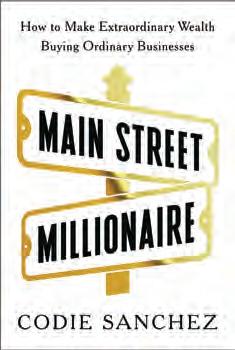
Adapted from Main Street Millionaire: How to Make Extraordinary Wealth Buying Ordinary Businesses by Codie Sanchez, in agreement with Portfolio, an imprint of Penguin Publishing Group, a division of Penguin Random House LLC. Copyright © Codie Ventures LLC, 2024.
Côte d’Ivoire is currently witnessing one of the most remarkable sustained economic growth rates in Sub-Saharan Africa, a trend that has endured for over a decade. This robust growth is fueled by significant public and private investments across key sectors, including digitalisation and transportation. The World Bank anticipates Côte d’Ivoire’s real GDP growth to average a notable 6.5% between 2024-2026.
Côte d’Ivoire stands as the world’s largest producer of cocoa, accounting for nearly half of global cocoa bean production, according to Statista. However, only about a third of these beans are processed locally into products such as cocoa paste and cocoa butter, with the majority exported as raw beans. Looking forward, the cocoa industry will continue to play a pivotal role in Côte d’Ivoire’s National Development Plan, which aims to have at least 50% of the country’s raw export commodities processed domestically.
Founded in 2010, Ivory Cocoa Products (ICP) has emerged as Côte d’Ivoire’s largest local cocoa bean processing company, operating out of the southwestern city of San-Pédro. Providing a wide array of high-quality, value-added products— from cocoa butter and cocoa mass to expeller cake and cocoa powder—ICP has become a cornerstone of the vision underpinning Côte d’Ivoire’s National Development Plan.
The idea for ICP was brought to life by the company’s founder and Chairman, Mr. Ismail El Khalil, with the mission of ensuring a more equitable distribution of wealth derived from Côte d’Ivoire’s cocoa market. At its inception, very few local companies were engaged in advanced cocoa processing. ICP began production in late 2011 with a processing capacity of 25,000 tons. Within five years, that capacity had doubled, according to Mr. El Khalil. Today, ICP targets an annual processing volume of 110-120,000 tons of cocoa beans.
Côte d’Ivoire, the economic leader of Francophone West Africa, is poised to become one of the region’s most digitally advanced nations. The government has committed to investing a staggering USD 3 billion to develop cutting-edge digital infrastructure and build a more transparent, inclusive economy.
At the helm of this transformation is Côte d’Ivoire’s telecommunications sector, which is already the most advanced in West Africa. Contributing 11% to the national GDP, according to the International Trade Administration (ITA), and generating nearly USD 1 billion in tax revenue, this sector is a vital engine of growth. As the market continues its rapid expansion, the ITA predicts a significant surge in demand for service and equipment providers, as well as for data centre and cybersecurity solutions.
Established in 2012, the Autorité de Régulation des Télécommunications de Côte d’Ivoire (ARCTI) stands as the cornerstone of telecommunications and ICT regulation in the country, playing a pivotal role in driving Côte d’Ivoire’s digital transformation. ARCTI’s comprehensive mandate encompasses managing the nation’s digital infrastructure, ensuring fair competition, and overseeing critical intergovernmental issues like cybersecurity and data protection, all while fostering an environment conducive to digital innovation and growth.
ARCTI is actively engaged in a wide range of transformative projects, including national roaming, crowdsourcing, e-learning, and infrastructure sharing, which span across various sectors of Côte d’Ivoire’s dynamic digital economy. Additionally, ARCTI oversees the development of cutting-edge technologies such as 5G and the metaverse, establishing a forward-looking regulatory framework that enhances the appeal of the market to foreign investors.
“Our regulatory practices align with international standards and are guided
Ismail El Khalil Founder & Chairman

In a market typically dominated by multinationals, ICP’s rapid success is attributed to its innovative approach. Mr. El Khalil points out that ICP’s nimble structure provides a strategic advantage in this fastevolving industry. He also shares that the company is actively exploring diversification opportunities across Africa. “There hasn’t been a strong culture of cocoa consumption in Africa, possibly due to the hot climate. Chocolate melts quickly here, so we’re developing products better suited to these conditions.”
ICP’s expansion plans are further supported by strong partnerships with major client like ECOM, one of the largest cocoa traders and processors globally. “We’re open to similar collaborations in other agribusiness domains, whether through joint ventures or technical partnerships,” says Mr. El Khalil, adding, “Inbound businesses need a local partner like us who truly understands the market.”
With the backing of its partners, ICP is poised to unlock Côte d’Ivoire’s full economic potential. “There are countless opportunities here, particularly in the agribusiness sector. We possess abundant raw materials that could be processed locally and then exported,” concludes Mr. El Khalil.
Ivory Cocoa Products’ commitment to local processing and innovation positions it as a key player in Côte d’Ivoire’s economic future. By enhancing local production, ICP not only supports the national economy but also sets a new standard for the global cocoa industry.

by global best practices,” emphasizes ARCTI’s Director General, Mrs. Namahoua Bamba Touré. “We’ve implemented data protection laws comparable to Europe’s GDPR, ensuring a secure and predictable environment for investors.”
As a pivotal force in Côte d’Ivoire’s digital transformation, ARCTI is prioritizing digital inclusion by establishing community centers to educate citizens on essential digital tools. By improving digital accessibility, ARCTI is creating significant economic opportunities and jobs, particularly for the nation’s youth and rural communities.

“My vision is for Côte d’Ivoire to become the digital hub of West Africa. Our goal is to create 20,000 jobs in ICT over the next three years,” says Mrs. Namahoua Bamba Touré.
As the first woman to lead ARTCI, Mrs. Namahoua Bamba Touré also hopes to inspire more women to join the technology sector. “We’ve launched a network to encourage young girls to engage with the digital economy. The sector offers so many opportunities, especially in job creation,” she says.
As well as a role model for female empowerment in the tech sector, ARCTI is playing a crucial role in boosting the country’s international status and investment attractiveness.”Our primary objective is to share experiences and best practices with international regulators. We are determined to position Côte d’Ivoire as a model digital economy in West Africa,” concludes Mrs. Namahoua Bamba Touré.
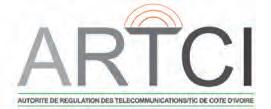
Huge infrastructure projects and the completed expansion of the Panama Canal will “boost and extend” Panama’s growth for years to come, according to professional services company PWC. The company highlighted Panama’s “well-developed service sector” with thriving segments including banking, tourism, and trading. These have driven rapid growth over the two decades to 2019, and the country has since experienced a strong rebound from the pandemic, with GDP expanding by 7.3% in 2023, as the IMF has noted. The country will continue to benefit from its hugely strategic location and openness to the world.
“Our privileged geographic position made us the crossing and meeting point of the Americas,” said President José Raúl Mulino in his September 2024 speech to the UN. “We had the first railroad linking the Atlantic and the Pacific on our continent, the first customs office on the continent, and the first Spanish city on Tierra Firme. Our canal and the airport hub make us strategic partners for all countries in the world. Today, our canal serves a total of 180 maritime routes that connect 1920 ports in 170 countries, constituting a great added value for products from around the world. Aware of our importance as a place of convergence, our doors have always been open to all nationalities who, in a fair fight, want to take advantage of the competitive advantages of being, as our shield says, ‘PRO MUNDI BENEFICIO’ [‘For the Benefit of the World’].”
Mulino, a highly-experienced former minister, assumed office on July 1 2024.
A pro-business figure, he is already pushing forward his multi-faceted policy programme, which places an emphasis on promoting growth, strengthening Panama’s fiscal position, reform of the state sector, and infrastructure development.
He has described a high-speed rail link between Panama City and David, the country’s third-largest city in the west of the country as “the flagship project of my government”.
Situated in the heart of the Americas and home to the Panama Canal, Panama is a prime destination for investors targeting US and Latin American markets. Recognized as a global logistics and re-export hub, Panama boasts one of the highest levels of FDI in Central America, supported by its dollarized economy, pro-investment incentives, and a stable macroeconomic environment. The country’s strategic location and infrastructure make it a critical trade hotspot, especially for commerce and retail, with a rapidly growing middle class that further fuels consumer demand.
Established in 1959 by Jack Btesh, Ben Betesh has grown into a leading retailer and importer of apparel and consumer goods, bringing iconic brands such as Lacoste, Marks and Spencer, Canali, Samsonite, Columbia, Diesel, Le Coq Sportif, Crocs, Speedo, and Armani, among others to the Latin American market. Jack Btesh, alongside his son Salomon Jack Btesh, who now serves as CEO, expanded the company from its initial focus on European goods to a multifaceted enterprise that has captured significant market share.
The company’s success is largely due to its strategic joint ventures with Western suppliers and brands. These partnerships go beyond traditional licensing and distribution; they involve a deeper collaboration where both parties share risks and rewards. “We’ve helped our primary suppliers understand that joint ventures are the best way to penetrate this market,” explains Salomon Jack Btesh. “By combining our local expertise with the strength of established global brands, we create a winwin scenario that benefits both sides.” This approach has allowed Ben Betesh to establish a strong presence in the retail market, solidifying its reputation as more than just a licensee or distributor.
In addition to retail, the entrepreneurial Ben Betesh family has diversified its portfolio into energy and real estate through Gabriel Btesh and technology investments through Mike Btesh. This diversification reflects the company’s commitment to innovation and long-term growth, ensuring that it remains resilient
“With this mega project, we will connect the country in an integral way,” Mulino said in his inaugural address. “The impact on the economy will be enormousinagriculture, movement of goods and transportation of nationals and foreigners, not to mention the thousands of jobs that will be generated in the different stages of its construction.”
Mulino is also rolling out the National Road Reconstruction Plan, which will also create jobs while strengthening the country’s transport network.

To boost the economy in the interior and enhance energy security, the government is planning massive development of the biofuel industry, potentially attracting investment, replacing imported oil, and generating more than 20,000 jobs.
Mulino has also committed to building social housing throughout the country; developing a long-awaited new oncology hospital with capital investment previously calculated at $435mn; and improving government transparency and the rule of law to the benefit of citizens and international businesses alike.
As the new President said at a recent economic forum in New York, Panama welcomes foreign investments, with international partners already engaged in projects including drinking water infrastructure and a new metro tunnel beneath the Panama Canal. With a range of new projects in the offing, and a leader supportive of enterprise at the helm, opportunities to invest in Panama are only likely to grow.
José Raúl Mulino CEO President

and adaptive in an ever-changing market.
“Our track record speaks for itself,” says Salomon Jack Btesh. “We know the market inside out and are always open to new partnerships, including joint ventures, distribution, licensing, and more. We support brands in Panama and the region with real estate, store management, and building economies of scale.”
With its rich history and ongoing contributions, Ben Betesh remains at the forefront of Panama’s evolution as a thriving trade hotspot. “Panama has so much potential, not just because of its strategic location, but due to its free and probusiness economy. We’re proud to be one of the most active entrepreneurial nations in the region,” concludes Salomon Jack Btesh.
INFO: PANAMA HEADQUARTERS MAIN SHOWROOMS
Reception: (507) 280.7600
Email: salomon@benbetesh.com
Address: Ben Betesh Group Oceania Business Plaza Torre 1000, Fl 32 Panama, Republic of Panama

Over the past years, Panama has solidified its position as one of the world’s very few carbonnegative countries, meaning that its forest cover captures more carbon than the country emits, as the World Bank has noted. This makes it an exemplar in combatting the climate crisis, an emerging role that complements its position as “a crucial logistical and financial centre in the region”, in the Bank’s words.
Construction and real estate are two of the most dynamic sectors in this burgeoning economy. The construction market was worth more than $21bn in 2023 and is expected to grow 5% annually between 2025 and 2028, according to research by GlobalData. The value of residential construction alone rose by a striking 18.6% to nearly $750m in 2023, following growth of 21.2% in 2022 and 83.4% in 2021, according to official figures.
Celebrating its 50th anniversary this year, Grupo Shahani is a family office engaged in sectors including real estate, construction, and construction materials.

“We are heavily involved in four sectors,” says Rolando Shahani, Grupo Shahani’s vice president. “Firstly, we develop real estate projects. Secondly, we have a heavy equipment company engaged in engineering and construction, including of infrastructure such as roads. Thirdly, we have the largest land bank in Panama. And fourthly, we are the largest producer of sand in the country. We have a large market share in each area; but in the industrial sector we have 80% of the market for aggregates, stone, and sand.”
Grupo Shahani also had a 46% share of the ready-mix concrete market before selling its subsidiary Concreto y Construcciones to Mexico’s Cemex in 2005.
In its early days, Grupo Shahani was known as “the Kings of Bartering” as the business used to trade high-quality construction materials including concrete, cement, aggregate, and sand for finished real estate units. Through this exchange, the company assembled a portfolio of more than 400 units in Panama City, with a range of property types. Shahani’s raw materials are in place of the major buildings on the capital’s skyline.
The company has now developed more than 50 real estate projects. It is the biggest developer of industrial parks in Panama and has developed more than eight industrial parks among them Parque Industrial de las Américas, which at 200 hectares is the biggest private industrial park in Panama, and Panapark, the country’s biggest private free trade zone. One of its main current focuses is

a logistics hub, Panama Distribution Centre, in the commercial heart of Panama City. With 20 hectares to be developed in three phases, the centre is designed for logistics and light manufacturing, offering a range of warehouse space and industrial units. The project aims to leverage the growth of nearshoring in the United States and other democratic countries in the Americas, which will require greater regional logistics capacity, as well as industrial real estate investments; Grupo Shahani will be delivering both, so businesses can manufacture in Panama as well as storing inventory for rapid delivery across the continent.
Another landmark project is Vista Mar Golf, Beach, and Marina - a large-scale tourism development in San Carlos, on Panama’s Pacific coast in what is known as the “Dry Arc” due to its lower rainfall and sunny climate. The 300-hectare site embraces one of the country’s finest marinas, and its most challenging golf course.
“There is a lot of opportunity for investors in the project, and opportunities for growth in the tourism sector as a whole,” says Víctor Shahani, CEO of Grupo Shahani. “There are as many as ten different big projects in the Dry Arc, and as developers we promote the Dry Arc as the Pacific Riviera with the Ministry of Tourism and other developers of the area with the aim of making it similar to Punta Cana in the Dominican Republic. There is an airport in the region already chartering flights, with tourists from Europe and North America arriving. It’s really enriching Panama’s tourism offering.”
Grupo Shahani welcomes partners looking to participate in its tourism developments, or other areas of business. It is open to a wide range of partnership structures, including joint ventures, collaboration to supply the group’s products, and development of real estate for clients – as well as selling finished properties to investors. Public-private partnerships also offer opportunities. The company will seek out partners that share its values and goals, for long-lasting relationships that deliver mutual success.
“We are a stable company that is in a second generation of management with active involvement” says Víctor Shahani. “We are going to be in Panama forever, generation after generation. And we keep modernising the company. We recognise the value of sustainability, innovation and technology in new methods
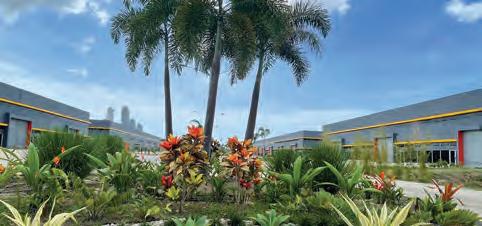
of construction and management processes. And we are always engaged in the community and play an active role in the sustainable economic growth of Panamawe adhere to eight sustainable development goals of the United Nations for Agenda 2030.”
This commitment to Panama and its people reflects the Shahani family’s confidence in the country’s long-term future, particularly as businesses and governments alike put a growing emphasis on sustainability.
“Panama has a big opportunity because we are one of the few carbon-negative countries on earth,” says Shahani. “We can monetise this through a fund to sell to other countries to mitigate emissions there. There are also many opportunities for sustainable investment here, in renewable energy for example. We have something new internationally, we know that we have it, and now we must go and promote it. In addition, we have free zones where industries like pharmaceutical manufacturing can flourish, as we have incentives as a pharmaceutical hub. Lastly, but most importantly we have been using the US dollar as a stable currency since 1904, and have political stability as one of the few democracies in the region.”


Happy holidays! Emmy Award-winning tech expert Mario Armstrong has five recs to get more hours in the day.





1/ Snap the action.
To catch the best shot with virtually no setup time, try the GoPro Hero13 Black [from $400; gopro.com]. It has speedy mounting and accepts HB-Series Lenses [from $70 to $130] with auto-detect that instantly adjusts the camera settings. The waterproof and scratch-resistant lenses include an ultrawide lens, which bumps the camera’s 156-degree field of view up to 177 degrees for more editing and cropping freedom, and a macro lens, which gets four times closer for dramatic detail.
Eat on the go.
In the blur of busy mornings, breakfast can be the first thing on the chopping block, but this powerful, portable blender nourishes you on the run. The stainless steel Nutribullet Flip [$100; nutribullet.com] keeps ice and frozen ingredients solid for 24 hours, so you can pack it with smoothie or protein-shake fixings the night before, then blend it and sip on your commute. The kicker? Fill the cup with soapy water and it cleans itself.
Zap your work sketches.
While tablets make reading easy, doodling in the digital age is trickier (thanks, Slack!) Who wants the hassle of scanning paper drawings or written edits on PDFs to send to colleagues?
The 11.8-inch e-ink reader, reMarkable Paper Pro [from $579; remarkable.com] takes care of all of that beautifully, with a marker and a textured screen that feels more like writing with a Sharpie on paper than ever. When your oeuvre is ready, email to share. Done!
4/ Charge it faster.
If you’re traveling, pop this jewel in your pocket. Not much bigger than an Oreo cookie, the Qi2 Anker MagGo Wireless Charging Station [$90; anker.com] unfurls to handle three devices using a single USB-C cable. With 15 watts of juice, it can recharge a newer iPhone twice as fast as 7.5-watt models, while giving your Apple Watch and earbuds 5 watts each. It also folds to hold the phone in landscape mode for videos on the road.
5/ Remember your plug! Phone? Check. Laptop? Got it. But how often have you left your tech charger behind and had to waste time buying a new one?
The Twelve South PlugBug [from $70; twelvesouth. com] is almost impossible to lose. Available in 50- or 120-watt versions, it’s wired with Apple’s “Find My” feature and will alert you when you leave it behind or let you ring it from your phone if you misplace it. Plus, its USB-C outputs can handle even power-hungry laptops..
Having experienced rapid growth over the past three decades due to an unprecedented construction boom, Panama is now Latin America’s richest country. During this period, poverty decreased from around 48.2% in 1991 to 12.9% in 2023, according to the World Bank. Additionally, the country’s middle class now represents a larger percentage of the total population than the USA’s. Despite the pandemic, Panama’s economy has grown a remarkable 39% since 2020, according to the IMF. And the country’s rapidly improving demographics, excellent regional connectivity as a gateway to LATAM and beyond, and political stability make it a compelling investment destination. Panama’s growing middle class presents a significant commercial opportunity for foreign exporters. This is particularly true of the food retail sector, where companies continually seek out new-to-market products from international brands to gain a competitive edge. According to Statista, the market value of supermarkets rose by 27% between 2018 and 2023, with new investments made by food retailers prioritising a better retail experience and greater convenience through opening new stores in underserved, populated areas.

Alejandro Garuz President and General Manager
Founded in 1961, Super 99 is Panama’s leading supermarket chain. Renowned for its wide selection of local and international brands, Super 99 stands out as one of the few supermarket chains in the country that is entirely Panamanian-owned.
Initially a store dedicated to hardware and the silk trade based in Colón before moving to Panama City, Super 99 – then known as Almacén 99 – was acquired by Importadora Ricamar, one of Panama’s largest private employers, in 1986. The group’s extensive network of local and international suppliers helped to accelerate Super 99’s expansion. The company soon began opening stores across Panama, including in the Metropolitan Area and in Colón, Chiriquí, the Central Provinces, and Western Panama, and now boasts 50 stores nationwide.
According to the company’s president, Alejandro Garuz, the key to Super 99’s success is a combination of competitive pricing and exceptional customer service. “Our main focus has always been to offer our customers the largest assortment of national and international products at the best prices,” he says. During the pandemic, Super 99’s decision to absorb the higher food costs helped to expand its loyal customer base and enabled it to adapt to the new market landscape. “We’re very agile when it comes to making decisions and implementing new strategies,” says Garuz.
A traditional supermarket brand with a Panamanian twist, Garuz explains that Super 99’s unparalleled offering reflects its strength as an import business. He states that the company consistently travels to trade shows from around the world to source the
best products at the best prices for its customers. From home cleaning, hygiene & beauty, and pharmaceutical products to fresh produce, alcoholic and non-alcoholic beverages, baby care, and pet products, Super 99’s mix of international and local brands appeals to Panama’s diverse demographics and has established a commanding market presence.
Garuz reveals the company is executing an ambitious expansion plan, opening around three new stores on average each year. Over the next 20-36 months, Garuz says the company aims to open at least ten further stores. He also discloses that Super 99 is exploring overseas markets. “We’ve been making lots of changes to improve the efficiency of the business, including investing heavily in technologies and systems that will allow us to effectively manage larger operations. If the opportunity from another country presents itself, we’re ready to capitalise on it.”
With a reputation for offering customers exclusive international brands, Super 99 is also open to new partnerships and brand supplier opportunities. Garuz stresses that whilst the company is 100% Panamanian-owned, it welcomes international partnerships and can facilitate new brand entrants in Panama and LATAM through its distribution and import network. “Panama does not have a strong industrial base – we’re mainly a service economy, relying on imports. So, there’s a clear incentive for international brands to sell their products in Panama.”
Garuz adds that there are several affluent but underserved areas in Panama that the company has identified for expansion. With the support of international partners, he believes that Super 99 is well-positioned to unlock demand from Panama’s growing GDP per capita, which is now amongst the highest in the region. “The commercial potential for these kinds of ventures is huge,” he says.
Indeed, Super 99’s ambitious plans reflect the natural advantages of doing business today in Panama. From easy trade access to the US dollar, Garuz says the decision to invest is an easy one. “Panama offers superior connectivity in all types of transportation, including air and sea, making it a gateway to the region. The Colón Free Trade Zone, for example, provides a significant opportunity for brands to establish and commercialise their products throughout the region. Plus, there’s the stability of Panama’s economy and political system, together with the openness and entrepreneurialism of the private sector.”

In a year of disruption, we wanted to know: Whose work will define the years to come? We reviewed hundreds of names and picked 20 leaders across a range of industries and sizes. Meet them on the following pages, and see what it takes to thrive in 2025 and beyond.
reporting by KRISTEN BAYRAKDARIAN,


Notion is changing the way people communicate and collaborate. Cofounder and CEO Ivan Zhao has an unusual philosophy about how to do it—which anyone can follow. by JASON FEIFER
To build a great business, you must change people’s behavior. But…how?
Many entrepreneurs can’t do it. They craft a solution with love and care, enter a marketplace with optimism and expectations, and believe that their idea is so valuable that people will immediately see its genius. But too often, consumers look at the new product or service and think, I don’t need that. And then it dies.
Ivan Zhao has thought a lot about this. Because at first, his product died too. Back in 2013, Zhao believed that lots of people wanted to build apps and websites— but they were too hard to build. That’s why he created a company called Notion, which helped people build digital products easily. But nobody wanted it. Flop.
What happened next has become lore in tech circles: Zhao and his cofounder Simon Last moved from San Francisco to Kyoto, Japan, where they disconnected from the world of hypergrowth tech founders to refocus their startup (and eventually were joined by a third cofounder, Akshay Kothari). They developed a new vision for Notion, rebuilding it as a flexible collaboration and productivity tool. Zhao calls it “Lego for software”—which will make sense to anyone who’s used Notion, and is a little hard to imagine for anyone who hasn’t. In short, imagine a blank page with infinite building capabilities. You can create tables, which means you can make to-do lists or sales trackers. You can create calendars, which means you can make content planners or coordinate with colleagues. And so on. You can design presentations in Notion, schedule social media posts in Notion. And you can add other users to any project, so many people can collaborate in one space. Instead of flipping around between tools (Google Docs, Excel, PowerPoint, Reminders, a calendar), it all lives in one
place, easily organized in a navigation bar, and easily searched or summarized with AI.
This caught on. Then it caught fire. Notion was growing so fast, and earning so much, that its founders were turning away investors. In 2021, Notion reached a $10 billion valuation. In 2024, it reached 100 million users. It is fast becoming the default tool not only for college students and Gen Z, but also collaborative office workers worldwide.
At the start of all this, Zhao says, he didn’t have the words for how to change people’s behaviors and build a great business, or why any of this worked. He just had intuition.
“I can say it a little more clearly now,” he says.
And for Zhao, the clearest explanation has something to do with…the beetle.
Ivan Zhao doesn’t talk like most successful founders.
He has no talking points. He doesn’t try to hype or sell or convince you of anything. Instead, he quotes books and speaks abstractly. He treats business like a philosopher would, talking about it as a thought experiment come to life. For example, consider our first topic of conversation: customer service. It does not go where you’d expect.
Notion is famously user-centric. Its early users started building useful tools on Notion, which they shared on social media. Notion then created a way for users to download templates and sell them on third-party marketplaces. (This fall it launched its own native marketplace too.) Zhao says “many” of those creators now make north of a million dollars a year on it. As a result, Notion users have a lot to say. They have questions. They want new features. They are flooding the company with inquiries. So I wanted to know: How does Notion manage all that?
First, Zhao shows me his phone and
starts scrolling through his notifications. “My mom called me,” he says. “Then there’s a bunch of support tickets.” Honestly, there are more than a bunch. It goes on endlessly. He gets a notification about every ticket. Just to put that in perspective: The cofounder and CEO of a $10 billion company with 100 million users is getting a notification on his personal phone—the same phone his mom calls!— every single time a customer asks the company for something. Every. Time. Why? There are two answers to this.
The first is practical: He watches for trends and makes sure his support team is scaling properly. To him, customer service isn’t just about responding to people whack-a-mole style. It’s about using all their insights as data—which means you need to make sense of it at scale. That’s why Notion created an elaborate system where every customer interaction is tagged and sorted. Product developers can easily see groupings of exactly the feedback that’ll help them, and Notion can maintain ongoing communication with customers.
“We have a process for people who make a request,” Zhao says. “We tag it. So once we release the new product they request, we follow up with you to say, ‘Hey, remember you asked for this a year ago? Now we released it.’ No software company does this.”
I asked: How did he build a system like this? What guided him?
This is when he starts to get philosophical. He recommends a book called Thinking in Systems by Donella Meadows. It teaches that everything is a system—a series of causes and effects—and that a founder’s job is to cultivate that system, understand why it works, and help it thrive. Zhao loves that insight. In his mind, he paired it with another love he has—of biology.
He points to a patch of grass next to us.
“There’s no better system than nature,” he says. “If we dug this grass up, there might be a beetle. It needs to intake information, output something, survive, and replicate. So
if you designed your company like a beetle, how would you design it?”
This might not be a question most founders consider.
But consider it! What does the beetle need? “You need oxygen. You need food,” he says. The food must nourish, be processed in the beetle’s body, and be outputted as waste—and because beetle poop is rich in nutrients, it’s a great fertilizer that helps plants grow. The beetles eat the plants, and the cycle continues in a tidy and renewable way.
Zhao wants his company to be structured like this. “Your customer gives you the oxygen, which is money,” he says. “And you need to create value for them in return. You need to intake with your eyes; you need to have some basic processing of your memory.” He goes on. The point is: Customer service shouldn’t just be a thing It’s not just some department that fulfills a task. It must be part of a system, integrated into the whole like a beetle’s mouth is connected to its guts, so that every part of the system can learn from customers, build based on their feedback, and make the customer happy so they return.
The business is a beetle. The beetle is a business. That’s how Zhao thinks.
And now you can appreciate the two concepts that helped him grow: invariables and the wave. Each practical, each philosophical—as well-balanced as nature itself.
If you want to build a good business, you must understand the invariables
What are they? They’re the limitations you cannot change. They’re the boundaries you must live with. This may sound obvious, but entrepreneurs often overlook them. They become too captivated by their own ideas. They confuse their wants with other people’s needs.
“Business really comes down to understanding human behavior,” Zhao says. “They are the fundamental invariable.”
In 2013, when Zhao first created a website and app builder that nobody wanted, he did not consider one of the fundamental invariables of human behavior. It is this: Most people are not builders. They don’t actually want to create apps, websites, or anything else. They are simply users: They want an existing thing to solve their problems. Zhao had built a great product that solved a problem that few people had.
So he stepped back and reconsidered: What was his goal? Yes, fine, he’d made a
website and app builder. But at a more fundamental level, he tried to build software that improves the lives of knowledge workers. So what were their real problems? What invariables define their needs and lives?
He went back in time. “If you trace back the arc of software, you have to trace back to the arc of the office worker,” he says. The office worker is a product of the Industrial Revolution; this is when work became specialized and geographically concentrated. People clustered in cities, then factories, then in offices to organize and sell what they made in the factories. They needed tools for output (typewriters!) and input (filing cabinets!). “That hasn’t changed,” Zhao says. “The need to communicate, store, and retrieve is always there.” In other words, it’s an invariable.
But over time, these workers’ tasks have become more complicated. Today, we have endless SaaS products to help us communicate, store, and retrieve information. We have a reminder app, a customer relationship management (CRM) tool, a collaboration tool, and so on. Does it have to be this way, endlessly fragmented? No. Zhao thinks of the opening line of Romance of the Three Kingdoms, a historical novel about the rise and fall of Chinese empires. The book starts with this line: “The empire, long divided, must unite; long united, must divide. Thus it has ever been.”
Zhao thinks: Everything unites, fragments, and unites again. In software, it’s called bundling and unbundling. The digital age has been full of unbundling. Notion is really just a re-bundler. It is a singular app to replace many apps. “So that’s the invariable I’m thinking about,” he says. It is the invariable of simplicity—a core human desire to get things done easily.
But here’s the twist that Zhao didn’t see coming: When you build a company, you create new invariables—and you cannot violate them either. Zhao also learned this the hard way.
Here’s what happened: A few years ago, Zhao saw his competitors roll out project management tools, and he got nervous. He pushed his team to create a competitive tool themselves, and then release it as a finished product. Unlike other Notion creations, this product’s features weren’t very flexible. Users and creators alike were upset, because they had come to expect customization. (The company eventually backtracked and changed the product.)
Zhao has thought a lot about this failure, and now he sees his error: He pushed Notion to act in a non-Notion way. “I knew
all the ways that it wasn’t the right decision,” he admits, “but I wasn’t refined enough to listen to myself.” But even worse, he’d violated an invariable. When you start a company, you’re basically telling customers, This is what we do, and this is what you can expect. Those become invariables. “Their needs are fixed, more or less tied with the product,” Zhao says. “You cannot all of a sudden change.”
But a question remains: If you can’t change an invariable, then how does anything ever change? After all, companies do change consumer behavior.
Zhao’s answer: “People can create waves, but it’s really difficult and almost impossible. But what you can do is ride the wave.”
Every few years, people’s behavior changes in some way. Then the invariables shift—sometimes a little, sometimes a lot. Zhao imagines this as a wave. A founder’s job is to go where people are already going, but faster.
Airbnb, for example, is credited with changing users’ behavior—introducing the idea of renting people’s homes instead of hotel rooms. But Airbnb didn’t create this change. The idea was already in the air: People were starting to rent out their possessions in the so-called “sharing economy,” and the 2008 recession left people needing to make money wherever they could. Airbnb rode the wave.
Notion is doing this too, Zhao says. It didn’t create people’s frustrations with a fragmented SaaS market. That was decades in the making. The way Zhao sees it, everyone used Microsoft in the 1990s— and then, once cloud computing became strong enough, competitors flooded the market and chipped away at Microsoft’s dominance. That was good for a while, but now it’s noisy and confusing and people are craving simplicity. The wave was coming. Notion rides it.
I make an admission to Zhao: I use Notion, but I struggle to adopt it fully. I’m 44, grew up in that Microsoft-dominated era, and learned to write on Microsoft Word. My laptop contains decades’ worth of nested Microsoft files, and I don’t exactly know how (or why) to fully migrate my habits and systems into Notion.
“We’re okay with this,” Zhao says, unfazed. “The largest waves are the generational waves.”
The way he sees it, he’s better positioned than Microsoft or Google. These
“THERE’S NO BETTER SYSTEM THAN NATURE. SO IF YOU DESIGNED YOUR COMPANY LIKE A BEETLE, HOW WOULD YOU DESIGN IT?”

companies serve older generations with calcified habits. They can’t make radical changes to chase Notion without pissing off old folks like me. Instead, he’ll focus on college students, who will develop habits in Notion that they’ll take into their future jobs.
That’s not to say he’s disinterested in older generations—but he knows that Notion itself won’t compel them to make a change. So what will? Here comes another Zhao philosophy:
“Vitamins don’t change user behavior,” he says. “Painkillers can.”
To me, Notion is a vitamin: It’s a good and potentially nourishing product that I can also live without. “But if you’re work-
ing in a company of 100 or 1,000 people,” Zhao says, “and you need to use way more tools, then the pain is there, and it increases every year, and now you have your 10th browser tab open—we can solve that pain for you. It requires you to change your behavior somewhat, but it’s worth it because it eases your pain.” Because in this scenario, Notion stops people’s pain. And painkillers change behavior.
To Zhao, these are the fundamentals of business. They are why Notion works, and why any company can work—so long as it understands and accelerates the world that it operates in. You respect the invariables. You build a system. You ride a wave. You serve a painkiller. But whatever
words you use, you must know that none of this happens purely by philosophizing. It happens by taking what you think and what you believe, and then trying something—and watching it fail, and then trying it again, until you truly understand what people want and what they don’t.
At the beginning of this article, I wrote that to build a great business, you must change people’s behavior.
But, no. Not really. To build a great business, you must understand people’s behavior. It’s as simple as a little beetle, and as complex as one too.
Jason Feifer is Entrepreneur magazine’s editor in chief.

Michael Garrett and Ryan Duey took the “ice-bath” trend and transformed it into “cold plunge” gold with their brand Plunge
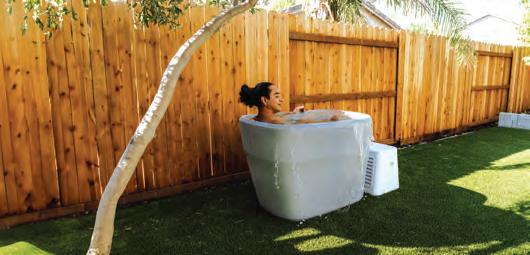
BInfluencer marketing played a big part in Plunge’s growth. What was your strategy there?


ack in 2020, Michael Garrett (left) and Ryan Duey were running float spa therapy centers in California. But when the pandemic shut them down, they found themselves with time on their hands. They’d become fascinated with the ice-bath trend, led by charismatic figures like Dutch motivational speaker Wim Hof, and touted by podcasters Tim Ferriss and Joe Rogan for its wellness benefits. But most people were just dumping ice in their bathtubs; there was no product that offered an ideal, controlled experience.
So Garrett and Duey teamed up. Garrett built out an initial prototype, while Duey built out the brand. Their first question was basic: What should they call this thing? “At the time, the term was ‘ice baths,’” says Duey. “We did our research on Google Trends. Sure enough, ‘ice bath’ was searched about 10 times more than ‘cold plunge.’ So we decided to bet the house on ‘cold plunge.’ We bought the domain, and immediately were the on the first page of Google search results. We didn’t have to put any dollars toward marketing.” Ultimately, they shortened the name (and domain) to Plunge, and this year the company is on track to make $90 million in revenue.
DUEY: “Our first six months, Garrett and I had this plan. We asked, ‘How do we get to these highly influential people that we’re aligned with from a philosophical, interest and character standpoint?’ We put down 40 names on a whiteboard, like [endurance athlete] Rich Roll, [neuroscientist and podcaster] Dr. Andrew Huberman, [biologist and health educator] Dr. Rhonda Patrick. And we went in with a gifting mindset. It wasn’t about a contract or, ‘Hey, we’re going to set you up with this product and you have to do X, Y, and Z.’ It was, ‘Hey, if you love it, share it. That could be going to social, but it could also be telling your mom about it.’ What’s crazy is we were at all of their homes within three to four months. Eventually, we ended up in [skateboarding pioneer] Tony Hawk’s backyard, setting him up for a Plunge. We just knew there would be a big return if they fell in love with the product and it changed their life.”
Ben Goodwin knew soda was in decline, and now his better-for-you brand Olipop is leading its revival.
When Ben Goodwin started a healthier soda company in 2018, a lot of people asked kindly, “Are you sure? Have you considered kombucha?” Soda is a mammoth $42 billion industry, but it’s been losing air for decades, with a 60% collapse in Gen Z and Gen Alpha consumers. The narrative seemed clear: Soda was out, and wellness beverages were in.

But Goodwin saw it differently. “The driver for the decline was the internal conflict folks had around the product,” Goodwin says. “It wasn’t a lack of love for the product.” So he created Olipop, a “functional” soda that’s low in sugar, high in fiber, flavored with botanicals and natural plant fiber, and boasting prebiotics to support the gut’s microbiome and benefit digestive health. He’s been proven right: Last year, Olipop grossed $200 million in sales. It’s on track to pass half a billion this year, and it has helped inspire a booming market of next-generation soda brands.
There’s a distinctly vintage, nostalgic feel about Olipop. How is that key to the company’s identity?
“It goes as deep as the formulation. When I’m building a flavor, I always ensure that there’s something nostalgic for me personally. I grew up consuming the same stuff many other Americans did, so my hope is that it translates. But the nostalgia exists in our branding too. Traditional soda built incredible brands, and their brand framework leans into the lightheartedness. But for a lot of Americans, again, that relationship is more complex. So with Olipop, consumers get to re-experience that lightheartedness and nostalgia without all the dissonance.”


Haley Rosen couldn’t believe how hard it was to get news about women’s sports, so she started Just Women’s Sports for fans like her.
When Haley Rosen retired from pro soccer in 2019, she moved to California’s Bay Area and got “a real job.” But when she tried to continue following women’s sports, she was confused by how hard it was. Even basic information like schedules and game scores were difficult to find. “It didn’t match what I was seeing when I was inside the space,” Rosen says. “I felt like people were excited and wanting to follow along.”
So in January 2020, Rosen started the Just Women’s Sports (JWS) Instagram account, where she posted photos, game highlights, interviews, and other major moments. Since then, she’s raised almost $13 million, and expanded JWS from an Instagram account to a website, newsletter, and multiple podcasts, including one hosted by soccer star Kelley O’Hara. Just Women’s Sports now reaches 80 million people a month, and has grown 150% year over year the past two years, driving 189 million social impressions during March Madness.
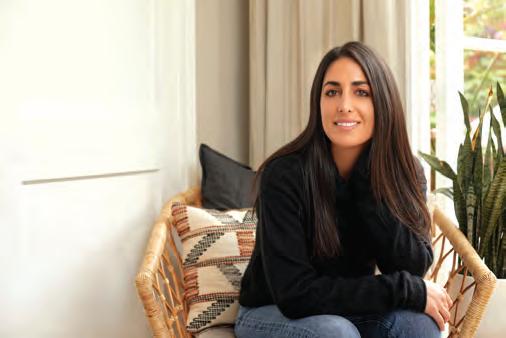
What was pitching a women’s sports news business like?
“Initially, most of the feedback was, ‘Why don’t you make it a charity? This isn’t a real business. People have never been interested in women’s sports, so why now?’ It didn’t matter that we had data and proof. These perceptions were so locked in. Now, finally, we have record-breaking viewership and March Madness numbers that are bigger than the men’s, so people are getting it. I really believe the space can be huge, but to be huge it needs dedicated digital media—and it’s not always going to be rainbows and butterflies. If we’re having real sports conversations, that means covering the fun, the exciting, the wins—but also the good, the bad, the ugly. You are going to get some people who don’t like that. But we want more eyes on women’s sports because we want more resources, more dollars.”
Bill Shufelt fought an uphill battle to make nonalcoholic beer cool with Athletic Brewing Company
When Bill Shufelt gave up alcohol, he began to have a recurring experience. “I’d be standing in a bar thinking, If this bartender could pour a great nonalcoholic beer, I’d gladly pay full price.” A financial trader at the time, Shufelt conducted thousands of consumer surveys—and realized he wasn’t alone. “Fiftyfive percent of adults were saying they would love a great nonalcoholic beer, if only it tasted better and was less stigmatized,” he says.
So in 2017, after many rejections, Shufelt teamed up with acclaimed brewer John Walker, who became his cofounder. Today, Athletic Brewing is the nonalcoholic category leader, outpacing both Heineken and Budweiser’s alcohol-free options. The company’s revenue was over $100 million in 2023, and in July, was reportedly valued at $800 million.
At the start, people didn’t take your business idea seriously. “I quit this great finance job and went out on my own, and there was no interest at all. From finding a brewer, to investors, to retailers, we were pitching the least popular segment ever and just constantly getting made fun of. The nonalcoholic beer trend was at zero, so they drew the line to zero forever. But despite all the noes, I thought, This person has no idea—they don’t have the data. Eventually, I signed up 300 retailers to launch. Fast-forward a year, we had outgrown our facility. “

cash in the hands of homeowners— without interest or debt—with his fintech company Hometap
If you want to get cash out of your house, you can take out a home equity line of credit or loan. But those options require monthly payments and interest. When Jeffrey Glass cofounded Hometap in 2017, he offered an additional option.

When Ishan Patel heard this news, he jumped at it—because he’d seen how, without a hearing aid, his
passed, he quickly reworked the company’s latest product to meet the agency’s guidelines. His hearing aid was priced at $189, but Walmart would only sell it for under $100. So they needed him to drop his price by nearly 50%—and be ready to ship within six months. Patel pulled it off, debuted on Walmart shelves, and is now a market leader. This year, Audien is on track to hit 1 million customers.
How did you solve that Walmart challenge of cutting your retail price almost in half?
“We took a lower profit margin, and we went back to all our supply chain people, for all the components, to get those costs down while maintaining the FDA’s quality standards. We had to figure out who would assemble our patent-pending design in this particular way, and nobody wanted to do it. They would much rather sell a multithousand-dollar hearing aid
with a massive margin through existing distribution channels than rework the component cost and their operational expenses. The way we persuaded them was by sharing the vision of the company. We were one of the highest-volume companies in the space, and 80% of the world market was unserved. That’s how big of a miss has happened in this industry. I got them to drop their margins, and they reconfigured their supply chain processes too.”
The fintech startup gives people debt-free cash for a share of their home’s future worth. Hometap’s 10-year investments come with no costs, no debt, and no hassle until the final payout. Hometap will give you cash for, say, 10% of the current value of your house, betting that a decade from now, that share will be worth more. In January 2024, the company reached $1 billion in home equity investment products, helping over 10,000 customers use their biggest asset to start a business or send their kids to college.
As a novel fintech startup, how did you get customers?
“You can’t be successful in selling a financial product unless somebody trusts you.That means making things as clean and simple—with as few exceptions, provisions, and fine print—as possible.That was critical for us when we built the product.
“It also means training your team to help people understand how and why it works. We are maniacal about getting really strong Trustpilot reviews and testimonials.”
Sandra Abrevaya gives patients with neurodegenerative diseases access to expert neurologists and personalized care through her telehealth startup Synapticure
In 2017, Brian Wallach was diagnosed with amyotrophic lateral sclerosis (ALS).

Doctors said he had six months to live. “What family doesn’t need support to navigate that?” asks his wife, Sandra Abrevaya. Wallach was a prosecutor in the U.S. Attorney’s office and Abrevaya was CEO of a nonprofit. In 2019, the couple founded the nonprofit “I am ALS,” which lobbied to generate over $1 billion in additional public funding for fighting the disease.
Wallach outlived his doctors’ predictions. And in 2021, he and Abrevaya took their mission into the startup space: They teamed up with three others to launch Synapticure, a telemedicine company that provides patients with neurodegenerative diseases like Alzheimer’s and related dementia, Parkinson’s, and ALS to expert care, cutting-edge treatments, trials, and comprehensive support for caregivers. With its 24/7 team of specialists, Synapticure more than doubled its patient base this year and launched a dedicated program for Alzheimer’s.
How did starting the nonprofit inform the way you built the company?
“With ‘I am ALS,’ we advocated for the approval of new therapies.Then Brian and I realized it doesn’t matter what therapies get approved if people can’t access the right doctors to prescribe them.There is no cure yet, but there is a chance that if I’m a patient, and I get on the right cutting-edge treatments, it can extend my life. And during that time, who knows what will be found? Families affected by these diseases don’t want just the current palliative hospice care approach. They want experts who know the clinical trial pipeline, who know the landscape of newly approved FDA therapies.They want someone to provide the right testing for them and to give them really thoughtful guidance on what their treatment plan should be.That’s a moment that Brian and I experienced firsthand, and so we raced to try to create that opportunity.”

business owners to build their own generative AI products.

LTade Oyerinde built Campus to give students access to high-quality, debt-free college educations.
In 2020, it became clear to Tade Oyerinde that the future of community college was online. Four years earlier, he had launched a platform called Campuswire, which allowed teachers to better interact with their students via online discussion forums and real-time virtual lessons. But it wasn’t long before Oyerinde realized: “I wanted to do more. Young people need to have a low-cost, high-quality way to get associate degrees. So I decided to actually acquire a community college and implement my vision and my model within it.” Since then, Campus has raised more than $65 million from investors like Sam Altman, Discord’s Jason Citron, and Shaquille O’Neal. This past spring, their first cohort of students graduated, and in the two years since their launch, enrollment has gone from 100 students to 1,100.

What has made Campus’s concept so successful so far?
“If you think about a four-year university—yeah, it’s education, but it’s also a dating app, it’s a social network, it’s a country club for upper-middle-class kids. Community college is none of those things. You live at home, come to classes, then go back home. So it makes sense online. At Campus, the classes are taught by part-time professors who also teach at schools like Princeton and UCLA, and do it because we pay them really well. For students, our tuition is $7,200 a year, which is lower than a Pell Grant, which about 82% of community college students are eligible for. So 86% don’t pay anything out of pocket. We ensure success by giving them a laptop and connecting them with a career coach to help them understand: Why am I here? What is my purpose? We found that if students can articulate that, they are far more likely to do the work and actually graduate.”
in Qiao saw it coming: As senior director of engineering at Meta, she witnessed how new AI systems were beginning to power just about everything. She also saw that companies would need help customizing AI for their own unique business operations, and she wanted to democratize access in a quick, affordable way.
In October 2022—a month before ChatGPT was released— Qiao launched Fireworks AI. The startup provides tools to help enterprises build and deploy their own generative AI systems, and do it faster than anything else out there, according to Qiao. Since February 2024, Fireworks AI’s user base has grown from 12,000 developers to over 50,000, and this year the company was valued at $552 million.
So how do the tools work?
“We give you the specific threads and needles, and you put them together yourself. Or we give you very simple APIs, which are prompts. Then we handle the threads and needles underneath. Along with our enterprise platform, we offer a ‘self-serve,’ pay-asyou-go option.You don’t even need to talk to us to try it, which brought us a lot of people. It’s interesting, because there’s fear of what AI will do to our lives. Will it be good or bad? But business owners realize if they don’t move fast enough, they’re going to be obsolete.They’re going to lose.”


Congratulations to the 2024 Pepperdine Graziadio Business School’s Most Fundable Companies presented by the Singleton Foundation for Financial Literacy & Entrepreneurship. In our seventh year, more than 2,000 early-stage US startups from across all 50 states vied for a space on the list. All 18 winners are worthy of serious investor consideration based on several variables, including financial projections, market opportunity, intellectual property, competitive advantage, and team-management expertise. Serving as a free resource for startups looking to source capital and accelerate innovation across industries and communities, our program educates founders on investor diligence and provides critical business assessments.
At Pepperdine Graziadio, we believe that developing purpose-driven leaders involves connecting early-stage companies with the resources needed to positively impact the business market. Supporting aspiring entrepreneurs is at the core of Graziadio’s mission, and our Most Fundable Companies assessment provides valuable insights on how businesses will appear to top investors—driving beneficial outcomes for all stakeholders.
All startup submissions generate objective, personalized feedback through our scoring system to improve readiness for funding. Approximately 100 companies proceed to the semifinals, completing a more in-depth qualitative assessment to further refine and verify scores. During the finals round, a panel of judges interviews and selects the winners. View all finalists and semifinalists at bschool.pepperdine.edu/mfc-list.


Disclaimers: The Pepperdine Most Fundable Companies List does not represent an offer to sell securities. It does not constitute investment advice, nor is it an endorsement of any particular product or service. Pepperdine University is not a broker-dealer and does not perform services provided by a broker-dealer, including but not limited to any financial or investment advising.

Company Location

Mesa, AZ
Scottsdale, AZ






Tucson, AZ
Davis, CA
New York, NY
South San Francisco, CA
Arlington, VA





Burbank, CA
Tampa, FL
Ambridge, PA
New York, NY
New York, NY
Chicago, IL ¨ Magnolia, TX



Northville, MI
New York, NY
San Francisco, CA
Norcross, GA





Tom Gauthier
Mark Naufel
Andrew Griffis, Sonny Cray
Cindy McReynolds, Bruce Hammock
Kavi Misri
Matthew Porteus, Maria Grazia Roncarolo, Vali Barsan, Liliana Nordbakk
Brian Hill
Brian Nowac, Rick Belgarde
Amanda Reineke, Richard Pinkerman
Brian Scott, Mont Handley
Stefan Gunnarsson, Joshua Lamerton
Kareen Mallet
Daniel Tu, Vickie Wen
Bret Boudousquie
Adam Stave
Jeremy Balkin
Chelsie Hall, Sheyda Demooei
Lewis Motion, Christopher Oberste
AgTechLogic developed a unique software and hardware AI solution that assists in reducing overuse of chemicals by up to 90 percent, providing significant savings and improving yield in agriculture.
Axio is creating the world’s most adaptive learning system, integrating with institutions to deliver personalized learning through a learning companion that adapts to individual needs.
Delta Thermal’s automated sensing technology protects industrial assets in AI data centers, railroads, utilities, and mining. Delta Thermal is hard tech for critical US infrastructure.
EicOsis is a clinical-stage, leading startup solving neuro-inflammatory diseases, utilizing inhibitors of soluble epoxide hydrolase (sEH) as non-opioid pain relief.
Hibiscus Health uses AI facial scanning technology via smartphone for early detection of diabetes risk and connects users to proactive care from its healthcare professionals.
Kamau Therapeutics is a clinical-stage, next-generation gene correction company harnessing high-efficiency targeted gene integration to develop therapies with the aim of curing life-threatening diseases.
Living MaKa makes MAKA, an award-winning RTD energized wheatgrass beverage in many flavors. MAKA provides “the energy you want with the nutritional benefits you need!”
Magicbox delivers mobile transforming LED studios filled with virtual production technologies to any motion picture, video, or marketing experience production.
Notice Ninja is a digital platform that automates agency notice management, leveraging AI and OCR to streamline compliance, reduce risks, and provide actionable insights.
PittMoss makes peat-free soils from recycled cardboard, creating environmental benefits including carbon reduction and water savings. PittMoss grows bigger plants using less water and fertilizer.
PropTexx is a cutting-edge AI widget for real estate listings, enabling buyers to visualize, customize, and assess renovation costs and value potential seamlessly online.
Replika is a social-selling solution for brands to activate and engage their community of sellers/influencers to inspire online sales and drive ecommerce growth.
Reverse Energy Solutions specializes in eco-friendly PV module recycling, offering innovative, mobile dismantling factories that reduce 90 percent of logistics costs while recovering valuable materials sustainably.
Stratus Medical is a medical device company focused on reducing pain and suffering and improving the quality of life for chronic pain patients through innovation.
Swish Brand Experiences is the first-ever programmatic sampling platform, revolutionizing product sampling with data-driven, targeted, and measurable campaigns that connect CPG brands with grocery shoppers.
TodayPay is the world’s first instant refund payment network, offering merchants and marketplaces an alternative payment method to issue instant refunds to their customers.
ViralMoment is revolutionizing social analytics by using computer vision and ML to detect visual hate speech, track brand mentions, and spot viral content, turning images into actionable insights.
WEAV3D’s patented technology enables significant vehicle weight reduction, reduces concrete and asphalt use, and extends infrastructure life through high-volume, tailored high-performance, cost-effective, lightweight structural reinforcements.
Andrea Lisbona makes hand sanitizers as cool as lipstick with
Way before the pandemic turned disinfectant into a must-have product, Andrea Lisbona and her husband started a line of hand sanitizers in Barcelona, Spain. In 2018, they decided to establish their company, Touchland, in the U.S., and launched with a Kickstarter campaign. Now their hygienic mists—in scents like “salted caramel” and “applelicious”—seem to be everywhere, including Sephora, Ulta Beauty, Kohl’s, and Target, with this year’s revenue expected to exceed $100 million. “We’ve been growing triple digits year over year since 2021,” says Lisbona. “Nobody thought a hand sanitizer company could do that.”

As Touchland was growing, were there opportunities you had to turn down?
“Yes, and it’s very hard to say no. For example, we had a chance to launch internationally with a lot of Sephora stores, and we said no. It would be awesome, but it’s about transparency and planning, and not trying to do more than you can do. We look
first at our obligations with our partners and how we can always exceed their expectations. It’s also important to start in one market and execute. So we chose the United States, and little by little, we’re going to grow.That is a very hard thing to do, but I think if you want to build a brand that is here 20 or 30 years from now, it does not happen overnight.”
Derek Richardson’s company Deako lets you install smart home lighting without calling the electrician.
lets you install smart home without the electrician
When Derek Richardson tried to put light switches in his new home, a mental light bulb went off.

“After shocking myself a couple of times and going down to the circuit breaker,” he says, “I thought, Man, anybody can change a light bulb. Why didn’t somebody make a connector for the switches?”
The answer was Deako, a modular lighting system company that specializes in plug-and-play switches. Since 2015, Deako’s customer base has grown from individuals to commercial home builders like D.R. Horton, one of the largest—if not the largest—in America. In 2023, Deako’s gross revenue rose by 52% compared to 2022, and the company is forecast to grow 81% by the end of 2024.
What’s the value proposition for builders?
“A lot of times, you have one builder right across from the other in the same community. They have access to the same materials, but need to differentiate and stand out. Deako lets a builder put lighting in with the lowest-cost simple on/off switch, and then ask the homeowner, “Do you want smart switches? Dimmers? Motion sensors?” In a D.R. Horton test, we found that people bought homes about 20% faster when it included our smart lighting.”
As the twelfth-largest economy in the world, Mexico has demonstrated remarkable macroeconomic stability and garnered investor confidence over the past two decades. With its potential to lead a nearshoring boom, Mexico is uniquely positioned to attract investments that not only drive economic growth but also generate positive social and environmental impacts.
According to Deloitte, Mexico stands to gain significant rewards from this trend in the coming years. Its extensive network of free trade agreements, including the USMCA with the United States and Canada, coupled with its commitment to inclusive economic reform and modernization, make the country a premier destination for investments that align with long-term sustainability goals. In 2023, Mexico attracted nearly $33 billion in foreign direct investment (FDI), further building on an impressive total of $300 billion from 2011 to 2021, reflecting its growing role in impact-driven economic development.
At the forefront of this transformative movement is Legand, a Monterrey-based company founded in 2021 that blends innovation with sustainability to shape Mexico’s business landscape. Legand is more than just a nearshoring facilitator; it is an engine driving the future of sustainable development in Mexico.

Javier Garza Buffington CEO
Founded in 2021, Legand is leading the charge in this transformative movement. As part of a coalition of companies focused on nearshoring, economic development, infrastructure, and the circular economy, Legand stands at the intersection of innovation and sustainability.
Legand’s business model is built on three pillars: environmental, social, and economic impact. Through Renovex, it drives the circular economy by transforming waste into valuable resources. ICN develops critical infrastructure such as aqueducts and transit systems to improve lives and rebuild social cohesion. REACH accelerates economic growth by attracting foreign investment and supporting global companies thrive within Mexico, creating jobs and fostering development.
“Everything we do is rooted within a purpose—specifically, the purpose of building a sustainable future. For me, and for our team, every successful venture begins with my
The company’s commitment to delivering high-impact projects is not only about driving growth but also about transforming cities, creating resilient infrastructure, and fostering a cleaner, fairer future for all communities. Throughout its work, Legand aims to ensure that economic advancement goes hand in hand with social equity and environmental stewardship.
guiding principle: innovation is important, but what drives us forward is the desire to make a positive impact—on people, communities, and the environment”, says Javier Garza Buffington, Legand’s Founder and Chairman.
Building Tomorrow’s Mexico, Today
“Legand is positioning itself as a regenerative and distributive force in Mexico’s business landscape,” says Garza Buffington. “Our long-term strategy is rooted in creating thriving businesses that operate within the planet’s ecological boundaries while ensuring social equity. We are committed to advancing the circular economy to reduce waste and regenerate resources, fostering infrastructure development that serves communities while regenerating natural systems, and facilitating foreign investment.”
Garza Buffington seeks to inspire others to join this mission, fostering an environment where value creation becomes the norm. This isn’t just a strategic choice— it delivers differentiated and tangible results.
Legand’s journey began in 2013 when Garza Buffington and his team delivered a first batch of solar panels, laying the foundation for what has grown into a visionary leader in sustainable infrastructure. Today, Legand’s focus on high-impact projects spans resource recovery, transit systems, and the development of community spaces, all designed to deliver lasting ecosystemic benefits.
With a focus on long-term value creation, Legand collaborates closely with global partners, particularly from North America and Asia, to foster economic growth and ensure successful investments.
“I’m proud to come from a family with a strong entrepreneurial history—it’s in my blood—and what truly excites me in this chapter, called Legand, is creating a new legacy: one rooted in regenerative choices. We’re proving that companies don’t have to choose between profit and purpose—they can achieve both by breaking conventional
molds and focusing on long-term, impactful solutions.”, says Garza Buffington.
A Business Model Rooted in Sustainability
At Legand, profit is the result, not the goal. The real value it brings is found in the positive changes they are creating in the world around us. Their most recent projects are proof that businesses can thrive while making a tangible difference.
Legand is committed to empowering foreign investors with the resources, expertise, and local insights they need to succeed in Mexico. By providing comprehensive support tailored to each investor’s needs, it aims to foster job creation, stimulate sustainable economic growth, and build long-term partnerships that benefit both our clients and the communities in which we operate. With its deep understanding of Mexico’s market dynamics and regulatory landscape, Legand is a trusted partner for investors looking to navigate opportunities confidently and maximize their impact in the region.
With a portfolio that includes global powerhouses like Tesla, Foxconn, GMC, and Chirey -to name a few- and Garza Buffington’s track record with multi-billion projects, Legand has started to build a reputation for delivering outstanding results.
“What sets Legand apart from its competitors is its impact-driven approach,” says Garza Buffington. “While many companies focus on either economic growth or environmental responsibility, Legand operates with a triplebottom-line framework, ensuring results that generate economic, environmental, and social value”.
One of Legand’s most impressive achievements is its state-of-the-art recycling facility, which processes over 7,000 tons of urban waste daily, additionally, the company processes more than 1,000 tons of recycled metal to key industries: Automotive, Construction and Infrastructure, Machinery and Industrial Equipment, among others. This is not just a milestone in industrial recycling; it’s a model for how businesses can lead with sustainability at their core, setting a new standard for eco-friendly industrial practices in Mexico.
“Our long-term vision and integrated services provide a significant competitive edge by addressing infrastructure development, industrial scrap recycling, and facilitating nearshoring investment in its country. This makes us a one-stop solution for industries looking to operate in Mexico while amplifying their positive impact on local communities and ecosystems.”
Looking Ahead: Legand’s Role in Mexico’s Transformation
Garza Buffington is confident about the future of Legand’s businesses. His leadership team is not only committed to technological innovation, but also to forge strong alliances with key stakeholders. By prioritizing collaborative efforts with government entities at all levels, Legand positions itself as a vital partner in infrastructure development projects that benefit both the economy and local communities.
The company’s focus on sustainable infrastructure, it’s aimed at creating inclusive opportunities for foreign companies while ensuring that local resources and ecosystems are preserved. Through this approach, Legand is helping to make critical infrastructure more accessible, all while contributing to long-term societal well-being and economic resilience.
“For Legand, Mexico’s potential as a global business hub is not only undeniable, but it also represents a unique opportunity to drive change” says Garza Buffington. “One of our core missions is to actively contribute to the country’s evolution as a destination for impact-driven foreign investment. By highlighting Mexico’s commitment to sustainability, innovation, and social equity, we aim to attract investments that not only benefit international corporations but also uplift local communities, creating a shared value for all stakeholders”.
Garza Buffington is optimistic about Mexico’s future opportunities: “With President Claudia Sheinbaum—a technical, studious, committed leader with a deep understanding of environmental and social challenges—Mexico has the potential to implement projects that balance economic growth with environmental and social well- being”.
“Creating long-term solutions with a systemic approach is not an option. Nowadays it’s a must”, he adds

Monica Williams designs menstrual products specifically for tween-sized bodies and souls with her startup RedDrop
“
Hmenstrual products for tween-sized bodies and souls with her startup
ow would you feel if you went into the bathroom and found blood in your underwear?”
Monica Williams asked a group of investors on the podcast The Pitch this year. As some of the men looked befuddled, she added, “We’re redefining feminine hygiene for tweens.” She walked away with $100,000 for her startup.
The company, RedDrop, makes specialized menstrual products for tweens—a growing market, since girls are maturing earlier these days. Williams, a doctor, cofounded it in 2019 with Dana Roberts, a fifth-grade teacher who was informally creating kits for her female students after seeing that they needed more support as they navigated bodily changes. Since then, RedDrop has bootstrapped its way up, with the help of competitions and grants, and has done over $7 million in sales since it started selling products in 2021.

What’s your customer acquisition strategy? And who’s actually buying?
“In 2024, young girls have far more buying power and influence than they did previously. But typically, it’s a mom that buys this, or it could be a dad or a grandma. To communicate to all those audiences on social media, we use a voice of understanding and knowledge without being preachy. But we’re actually leaning into our B2B side. We sell to schools, most of which have some state-apportioned money to buy these products. We’ve also started working with Girl Scouts nationally. If you happen to start your period at a camp, you can get our branded kit. It is a nice Girl Scout moment.”
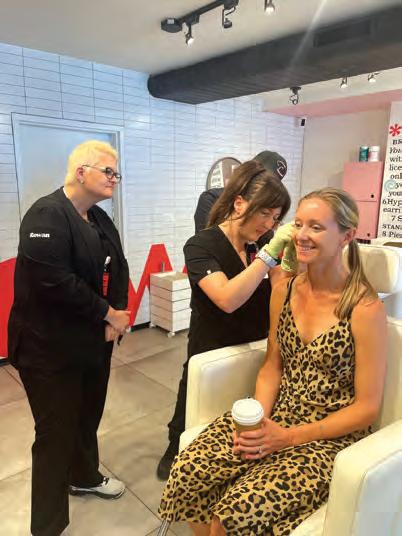
Louisa Schneider is taking piercing beyond hip to super hygienic with Rowan, staffed by licensed nurses
ARussell are the out of bottles with Health
Dthe plastic out



uring a meeting at Deloitte, the question went around: “What is your life’s purpose?” Achal Patel’s mission was something in the healthcare space; Russell Gong (right) said his was to focus on social innovation and climate change. The two had never met, but their answers led them to start a sustainable healthcare company in 2018. Called Cabinet Health, it launched by selling over-the-counter drugs online with reusable glass bottles and compostable pouches for refills. But in the past year, it dramatically expanded its reach. Customers can now get their prescriptions mailed to them in planet-friendly bottles, and the brand is selling in retailers like Target. On the B2B side, it’s helping large organizations fight climate change—for example, bringing sustainable packaging to McKesson’s private brand Foster & Thrive. “We reduced over 50,000 pounds of plastic in just the summer alone with Target,” says Gong. “It was a big step for mission and market fit.”
What are your biggest challenges now?
“One challenge—and a lot of entrepreneurs fighting climate change face this—is having to pay more for a sustainable option. Whether you’re a large business or an end consumer, at some point that becomes a hurdle for adoption. We’ve tried to have the right products and channels for the right customers based on how effectively we can price our products. But where we’re energized is that over time, we know we can bring the cost down to equal or less expensive than the plastic alternatives. That’s what drives me every day: How do we make this a complete no-brainer for the consumer?“
s a girl, Louisa Schneider got her ears pierced at a mall, like everyone she knew. But when the Wall Street exec had a daughter, she wondered, Why isn’t that a medical procedure? In 2017, she made it one by launching Rowan, which sells hypoallergenic earrings and piercing by licensed nurses. It began as a niche concierge service in and around New York City, where nurses pierced in people’s homes with an online earrings subscription option. But Schneider pivoted—moving to brick and mortar, going in and out of Target—to ensure that anyone with a body part to bedeck knows Rowan. This year it’s on track to have 65 stores and an annual revenue run rate of $100 million.
What was the move that put your brand on the map?
“At the end of 2022, we had Rowan kiosks in about 300 Target stores. As a young company, that gave us a tremendous amount of credibility where a nurse might be willing to join us. But our customers didn’t realize they were getting a Rowan piercing; they thought they were getting a Target piercing. Target was a great partner, but I wasn’t going to be able to develop a profitable business doing that. So we stepped away and started opening more of our own studios.”







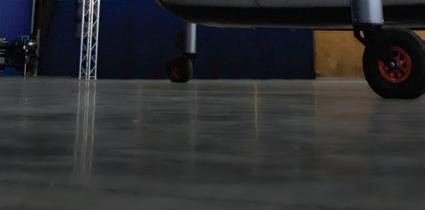



Ali uses AI to make online returns management a breeze for customers and retailers alike with
Selling things online is simple. Handling the returns is not. But with veteran software executive Amena Ali at the helm, Optoro is helping some of the biggest retailers—like Ikea, Gap, American Eagle, and Best Buy—create a seamless returns process. The software-as-a-service company broke through in 2020 with its signature “express return” feature, which lets customers drop off unboxed items at stores like Staples, and has since been rolled out in over 1,000 stores. Optoro has continued to customize the returns experience, and in the summer of 2023, the company launched an at-home pickup service, which is now available in 40 cities.

It’s hard to keep customers happy while reducing costs for retailers. How do you help with this?
“With a one-size-fits-all approach, your policies are either too lenient or too stringent. So we help retailers manage returns thoughtfully. That starts with the shape of the returns portal, and what options are given. For instance, if Rachel is a trusted customer, I want to make it as easy as possible for her to buy product A, and if it isn’t right, exchange it for product B without waiting. So we bring in data science and modeling to say, ‘Let’s actually allow Rachel to immediately ship item B, before she even returns item A. Whereas Shanna, I don’t know what her profile is like, so maybe I offer her more of a standard exchange.’”
Planet, which makes a landmanagement tool to prevent devastation caused by forest fires.
Allison Wolff worked in Silicon Valley for 20 years, establishing sustainability programs at tech giants like eBay, Google, and Facebook. But the vast destruction caused by a 2018 wildfire in Paradise, California, changed her path. Wolff knew that land management is one of the key contributors to preventing forest fires, and she believed technology could help. So in 2020, she cofounded Vibrant Planet, which makes a cloud-based land-management tool that uses data to help land managers, fire districts, counties, utility companies, and other customers create dynamic plans for forest health. Wolff says it wasn’t hard to recruit top talent, because so many people are looking for ways to make a difference. “Some of our people pioneered machine learning at places like Meta,” she says. “They’re like, ‘I don’t want to do that anymore. I want to work on climate solutions.’” The past year has been pivotal for Vibrant Planet, with the platform launching across the entire western U.S. in December 2023.

What are some of the initial hurdles to tackling a massive problem like this?
“With 40% to 60% of land ownership being federal, we have to engage agencies like the Forest Service and the Department of the Interior, and understandably, these are risk-averse people. There’s no blame there, but our government is not set up for innovation.
Plus, they’re not used to working with outsiders, much less a private company. So for the past four years, we’ve been proving ourselves and building trust and credibility. Now we’re at the point where we can really scale up with them.”
keeps the whole family safe online with Aura, his all-in-one cybersecurity solution.
When serial entre-

preneur Hari Ravichandran had his identity stolen in 2014, he realized that, while cybersecurity breaches impacted millions of people each year, there was no clear holistic solution. So in 2017 he launched Aura as a one-stop online safety solution to help customers protect their personal and financial data. The tool has proven especially useful for parents navigating the murky waters of childhood safety in the digital age; it allows parents to block certain apps or websites and to control how much time a child can spend on a device. Aura now has a $1.5 billion valuation, and in the past year, it held its first Digital Parenthood Summit and expanded the app’s family controls.
Were you aware from the beginning that family controls would be such an important element of the app?
“We were always thinking about this intersection between security, family, and safety. I have four kids. My oldest is 15 now, but the first time she crawled, she crawled to an iPad. In excess, [screens] could become fairly detrimental to young people. So we’ve really been thinking about that part of the equation—not just parent-managed time limits, but moderating the security and safety of the content.


Ariela Safira is channeling the power of group therapy with Zeera
Ariela Safira was in college when a friend attempted to take her own life. It was 2013, and visiting her friend at a facility left Safira feeling scared. “It was the first time I had ever seen mental healthcare,” she recalls. “I was horrified by it. How was she supposed to get better there?”
That experience led Safira to open a brick-and-mortar therapy business in 2019 called Real, which offered one-on-one and group therapy. But in June 2024, Safira pivoted Real to become Zeera, a mental healthcare company with audio-only content like anonymous group therapy and other therapist-created tools. Zeera is sold primarily to companies as an employee health benefit, and in the first year, its app gained over 100,000 users in the employer space. “We’ve exceeded the previous engagement rates for company mental health services by 14 times,” Safira says, “and 100% of our customers have renewed their contracts.”
What was the insight that prompted Zeera’s pivot?
“When COVID hit, we learned things we never expected. Everybody wanted group therapy, but with video off and their names hidden.When we followed up with surveys, people said they wanted to hear how other people were dealing with the issue, and they wanted a therapist to tell them what to do for the problem, but they didn’t want people to know they were in the group.And they were requesting recordings [so they can listen on demand].
“This was a phenomenal insight, so we brought in experts from Spotify and Netflix and paired them with clinicians to figure out this audio-only content model. On the back end, we track what each member is doing in the app, and then personalize the experience. We can say, ‘Ariela is in a medium place with body dysmorphia, but a severe place with anxiety related to relationships.’ Then we can recommend sessions that move Ariela from this state of mental health to a healthier state.”
Allison Lee built (Re)vive to save returned clothes from landfills, so brands can resell them.
In 2017, Allison Lee launched a tailoring service called Hemster, which allowed retailers to offer tailoring while collecting customer data. But a few years in, she had a realization: The true need for tailoring was in returns. Every year, an estimated 9.5 billion pounds of returns go into landfills, while brands hemorrhage profits. So in 2024, the company rebranded as (Re)vive. It takes returns and deadstock to clean, repair, and repackage the items to send back to brands, or sellS them on a site like Poshmark. Their back-end technology lets brands track where items end up, and how much they make or save. Now a B Corp, the company has saved over $23 million in inventory from landfills, and grown its revenue more than 10 times over.

How did you gain confidence in your decision to pivot?
“I saw that damaged products were a more universal problem for every brand that we worked on. When we were pitching the Hemster tailoring solutions to brands, it felt like a ‘nice to have.’ They were like, ‘Maybe I’ll slot it in, if we have room in our road map.’ But when I talked to brands about this inventory problem, they were like, ‘I need to fix this yesterday.’ When you feel this shift in urgency, you’re forced to almost reexamine the hypotheses that you were married to.”


•
•















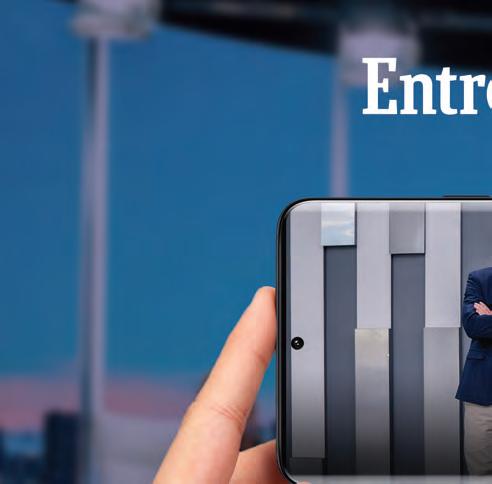

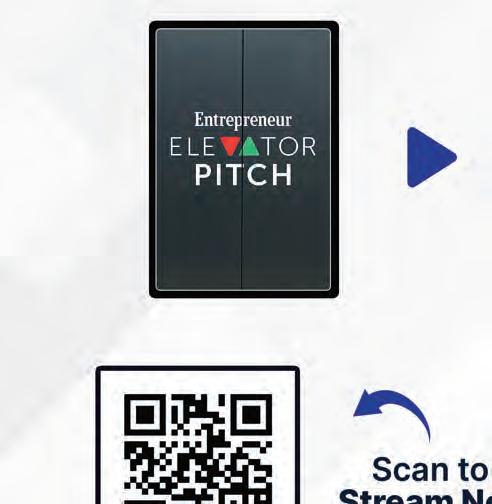





Entrepreneur
here are multiple paths to entrepreneurship. Many people start early. Some hold a regular job for a while, then take a leap into self-employment. Others take a more academic path—learning the fundamentals of business, testing their ideas in a structured setting, and entering the world of entrepreneurship armed with knowledge and connections. There’s no right answer, and formal education isn’t a requirement for success—but if a classroom path sounds appealing to you, then let this ranking be your guide.
For the past 19 years, Entrepreneur has partnered with The Princeton Review to rank the top undergraduate and graduate programs for entrepreneurs. There’s a lot to weigh: The top
schools teach business lessons, of course, but they also build programs that give students hands-on opportunities in startups and experimentation—all while fostering the kind of lasting networks that are crucial for long-term success. The most valuable lessons come from the process, not just the curriculum.
This year’s survey considered hundreds of colleges and universities in the U.S., Canada, Mexico, and Europe, and evaluated them on a multitude of factors including their programming, their available mentors, and their graduates’ success rates in the business world. More about our methodology is below.
To see which schools made the grade, just turn the page.
LAST SUMMER, The Princeton Review surveyed more than 250 colleges and universities to determine which of them best serve future entrepreneurs. Below are a few of the key metrics collected from those schools. For more information on the methodology and details on each ranking, go to: PRINCETONREVIEW.COM/ENTREPRENEUR
→ Academics and requirements
Academics and the classroom
Schools were asked whether they offer a major, minor, concentration, or degree program in entrepreneurship; how many courses in entrepreneurship they offer in topics such as new technology, social entrepreneurship, business analytics, idea development, and venture capital; and whether they provide cross-disciplinary opportunities to interact with students in other majors (e.g., working with computer engineering students to develop a product).
→ Outside the classroom
Schools were asked for the number and value of scholarships available and the number of outside mentors who worked with students. Annual business-plan or new-venture competitions, hackathons, and pitch-deck or startup weekends, among other activities— along with prize money amounts—were also considered. Schools were also asked to report the total dollar amount of prize money won from outside competitions by students enrolled in their entrepreneurship offerings.
→ Students and faculty
Students and
Schools were asked for the total number of full- and part-time students enrolled in entrepreneurship courses in the 2023–2024 academic year, and how many of them had developed an actionable business plan to launch a startup. Then it asked how many companies were started by graduates both over the past five and the past 10 years, and how much money those companies have raised from investors. The Princeton Review also tallied the number of faculty teaching courses on entrepreneurship during the year, and how many faculty members have started, bought, or run a business.

Tecnológico de Monterrey Eugenio Garza Lagüera Entrepreneurship Institute Monterrey, Nuevo León, Mexico
Erasmus University Rotterdam Erasmus Centre for Entrepreneurship, Erasmus Enterprise, Yes!Delft Rotterdam (3 institutes) Rotterdam, Netherlands Drexel





At the University of St. Thomas Schulze School of Entrepreneurship, a top-ranked undergraduate entrepreneurship program, we empower students to take risks and pursue their passions through full-tuition scholarships, business accelerators and annual competitions with cash prizes. And every student is equipped to solve global problems in innovative and socially responsible ways for the common good.
Gabriel Riegert ‘25 (left), double major in entrepreneurship and marketing Georges Macheta ‘25 (right), double major in entrepreneurship and computer science
Co-founders of Converteca, an innovative venture reclaiming raw materials from lithium-ion batteries in a sustainable and efficient manner, diverting them from landfills, rivers and main ecological systems.
















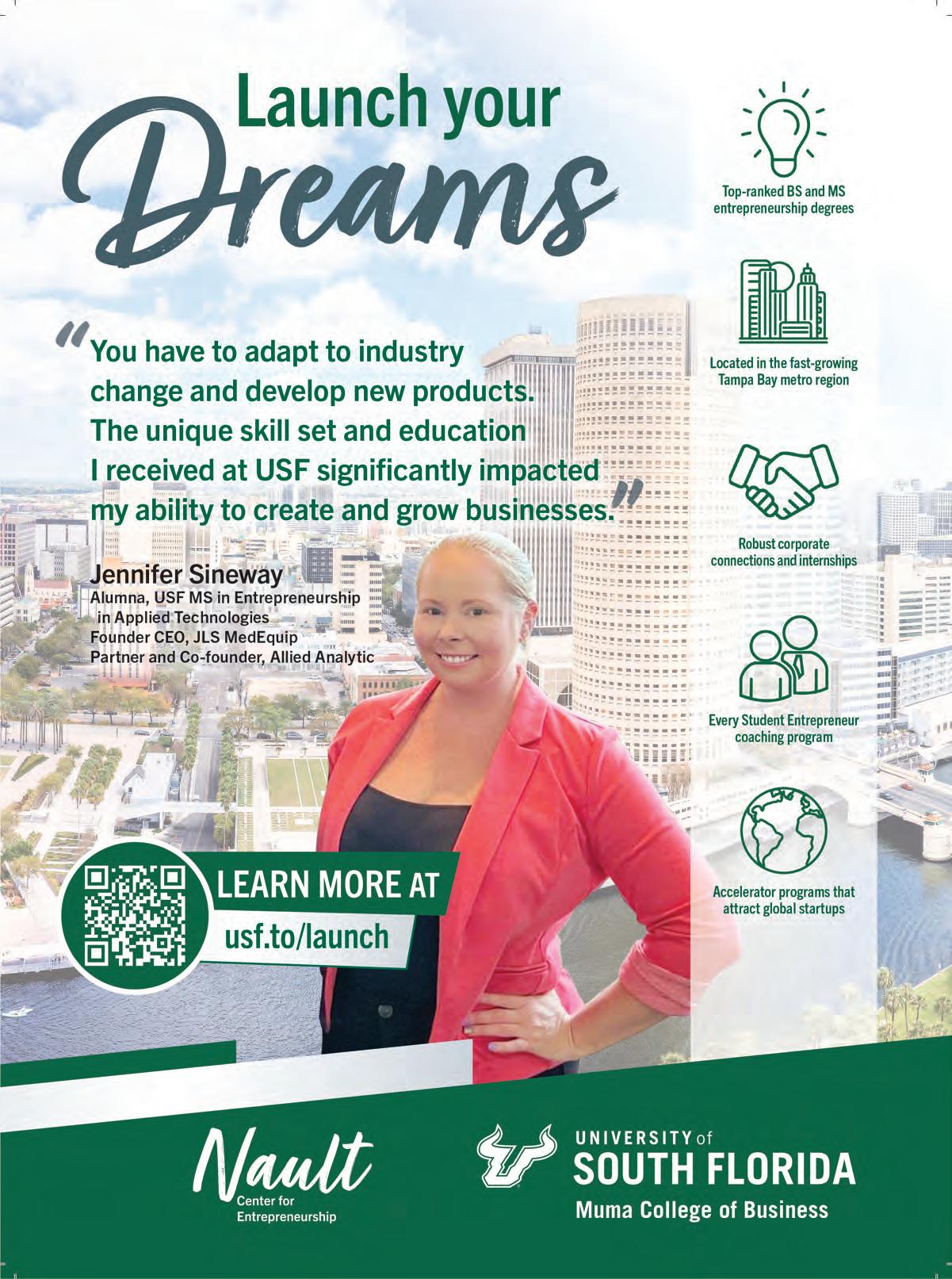






























University of Dayton
Launched by Grads in Past 5 Years
10 2 11 3 13 5 7
L. William Crotty Center for Entrepreneurial Leadership Dayton, OH
Saint Louis
University
12 4 1 6
University of Minnesota
(in-state)
(out-of-state)
(in-state)
Babson College
Arthur M. Blank Center for Entrepreneurship Wellesley, MA
Northeastern University
Syracuse University
Blackstone LaunchPad at Syracuse University Libraries; Couri Hatchery; Center for Digital Media Entrepreneurship; Institute for an Entrepreneurial Society Syracuse, NY
(in-state)
(out-of-state)
State University of New YorkUniversity at Buffalo Startup & Innovation Collaboratory Powered by Blackstone LaunchPad Buffalo, NY
(in-state)
(out-of-state)

(in-state)
(out-of-state)



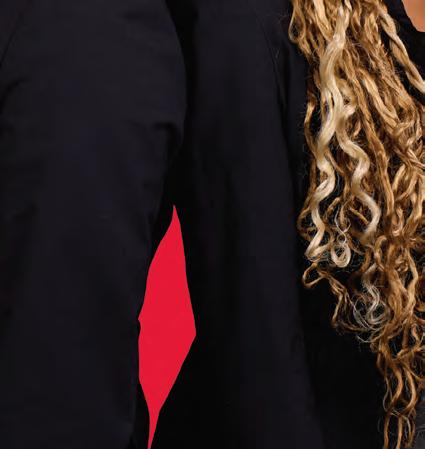


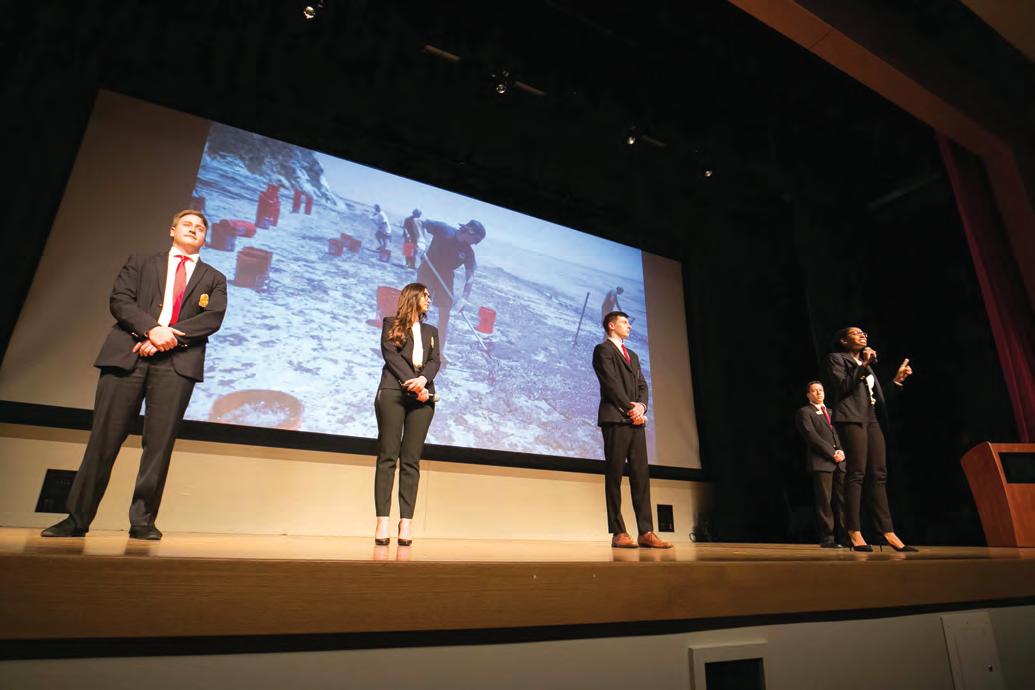
babson.edu/el

#1 in Entrepreneurship, Northeast Graduate and Undergraduate Programs
– Entrepreneur magazine, The Princeton Review,2025
#1 in Entrepreneurship Undergraduate Programs
28 consecutive times – U.S. News & World Report, 2024
#1 MBA in Entrepreneurship
31 years in a row
– U.S. News & World Report, 2024
#2 Best College in the United States
– The Wall Street Journal, 2025

The strategic thinkers, the risk takers, the problem solvers. They are the unifiers, the ones who lead with empathy and create sustainable solutions on a global scale.
entrepreneurial leaders ... ... and we’re educating them at Babson.

(in-state) $41,997 (out-of-state) $12,720 (in-state)
(out-of-state)



Erasmus University Rotterdam Erasmus Centre for Entrepreneurship, Erasmus Enterprise, Yes!Delft (3 locations: Delft, The Hague, Rotterdam) Rotterdam, Netherlands
Concordia University District 3 Innovation Hub, National Bank Initiative in Entrepreneurship and Family Business, Barry F. Lorenzetti Centre for Women Entrepreneurship and Leadership, Dobson Practicum, Bob and Raye Briscoe Centre in Business Ownership Studies, KPMG-JMSB Entrepreneurial Indices
2 4 1 3
Temple University
& Entrepreneurship Institute

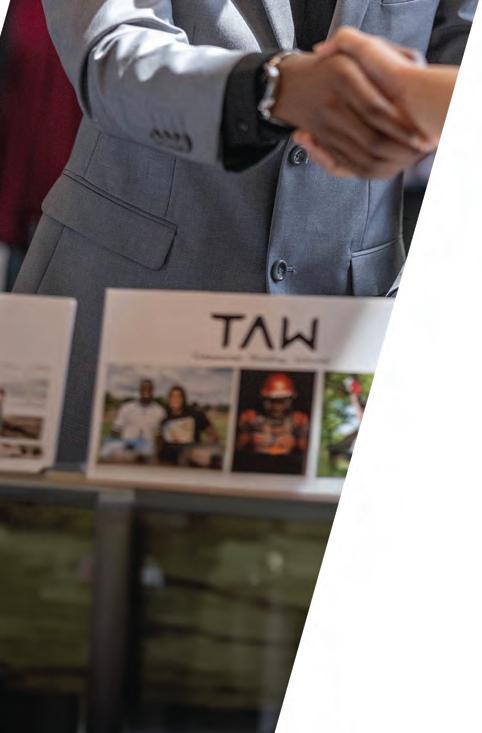
Pioneering an interdisciplinary and hands-on approach to entrepreneurship education that integrates business, strategy, creativity, and innovation.
Providing access to over $50K annually in seed funding opportunities and Rowan’s $25M Innovation Venture Fund.
Home to award-winning experiential learning labs like Studio 231 and Creatives 230, where mentorship and interdisciplinary collaboration drives entrepreneurial success.

3 5 2 4







$28,576 (in-state)
$52,224 (out-of-state)
$16,880 (in-state) $26,868 (out-of-state) $47,169 (in-state) $59,929 (out-of-state)
$17,647 (in-state)
$30,278 (out-of-state)
$71,564

The Princeton Review Top 50 Rankings 2023, 2024, 2025 Undergraduate Entrepreneurship
Everything’s bigger in Texas. Our world-class faculty, innovative programs, and the Harkey Institute for Entrepreneurial Studies give you the tools you need to bring your business ideas to life. We bring together students from across campus — representing 175+ undergraduate majors. That’s why we’re among the most highly ranked entrepreneurship programs in the country. So, if you want to make it big, make it here.

REGIONAL RANK
4 1 6 3 2 7 3 8 5 2 4
Northeastern University
Northeastern University Center for Entrepreneurship Education (NUCEE),Health Sciences Entrepreneurship,The Michael J.and Ann Sherman Center for Engineering Entrepreneurship,Center for Research Innovation (CRI),The Roux Institute (in Maine),The Lab for Inclusive Entrepreneurship,Women Who Empower Boston, MA
Boston University Innovate@BU Boston, MA
Syracuse University
Blackstone LaunchPad at Syracuse University Libraries; Couri Hatchery; Center for Digital Media Entrepreneurship; Institute for an Entrepreneurial Society Syracuse, NY
New Jersey Institute of Technology Martin Tuchman School of Management Newark, NJ
University of Connecticut
Peter J. Werth Institute for Entrepreneurship and Innovation Storrs, CT
The State University of New YorkStony Brook University Innovation Center, Center of Entrepreneurial Finance Stony Brook, NY
University of Vermont Sustainable Innovation MBA Burlington, VT
University of Virginia Batten Institute for Entrepreneurship, Innovation and Technology Charlottesville, VA
University of South Florida Nault Center for Entrepreneurship Tampa, FL
John P.
University of Arkansas Office of Entrepreneurship & Innovation Fayetteville, AR
$17,186 (in-state)
(in-state)
(out-of-state) $44,605 $17,514 (in-state)
$39,033 (out-of-state) varies $17,000 (in-state) $32,000 (out-of-state) $21,152 (in-state) $29,992 (out-of-state) $75,600 (in-state) $78,600 (out-of-state) $51,494
(out-of-state)
In each episode, an entrepreneur opens up about their biggest problem—and the step-by-step way they solved it.


7 1 9 3 5 10 6 11 8 2 4
Clemson University MBA in Entrepreneurship & Innovation Greenville, SC
Florida International University
StartUP FIU, Eugenio Pino and Family Global Entrepreneurship Center, Florida Small Business Development Center at FIU, FIU CARTA Ratcliffe Art + Design Incubator, Blackstone LaunchPad at FIU Miami, FL
University of Louisville Forcht Center for Entrepreneurship Louisville, KY
Nova Southeastern University Alan B. Levan | NSU Broward Center of Innovation Fort Lauderdale, FL
Tulane University
Albert Lepage Center for Entrepreneurship and Innovation, Tulane University Innovation Institute, The Phyllis M. Taylor Center for Social Innovation and Design Thinking New Orleans, LA
Regent University Center for Entrepreneurship Virginia Beach, VA
University of Kentucky Von Allmen Center for Entrepreneurship Lexington, KY
Rice University Liu Idea Lab for Innovation & Entrepreneurship (Lilie) Houston, TX
The University of Texas at Austin Master of Science in Technology Commercialization, Texas McCombs MBA Programs Austin, TX
The University of Texas at Dallas Institute for Innovation and Entrepreneurship
Arizona State University
J. Orin Edson Entrepreneurship + Innovation Institute, The Center for Entrepreneurship and New Business Design, E+I @ Fulton Schools, Innovation Space Tempe, AZ
$34,000 (in-state)
$39,000 (out-of-state)
$38,134 (in-state)
$51,238 (in-state)
$56,814 (out-of-state) $42,579 $74,730 $32,000
$17,959 (in-state)
$32,704 (out-of-state) $59,033 $20,871 (in-state) $33,863 (out-of-state) $30,587 (in-state)
$53,345 (out-of-state) $20,715
$45,495 (out-of-state)




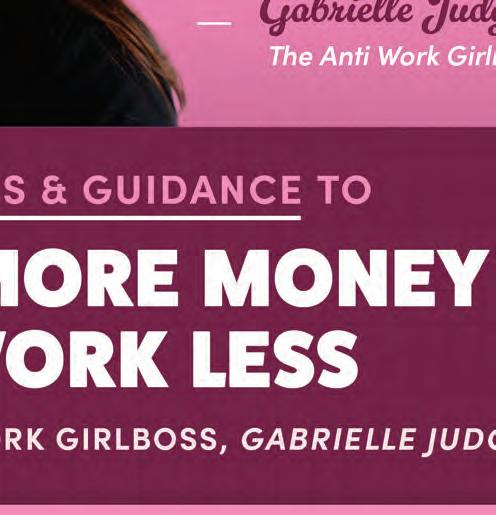
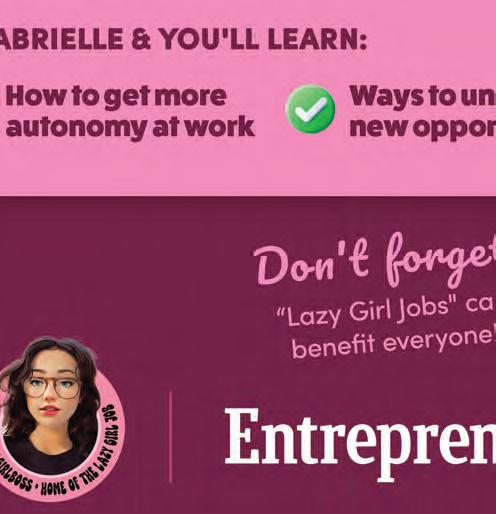



Undertaking a wide-ranging and transformative repurposing of its diverse legacy assets through sustainable initiatives, Jamaica Bauxite Mining (JBM) is taking a leading role in supporting national and global efforts to meet UN Sustainability Development Goals (SDGs).
“Sustainability will drive every part of our make-up; it will be the bedrock of JBM,” says JBM managing director Donna Marie Howe. “We will be repurposing our resources and reusing them in sustainable ways. We deploy sustainable initiatives in our business; the ecosystems of our assets will produce a little sustainable village. The Governance and regulations are becoming increasingly prominent in our sector, and we are taking strident environmental and social initiatives.”
Sustainability runs through JBM’s current projects in real estate, infrastructure, and mining, with the focus on achieving sustainable returns while championing environmental stewardship. Collectively, these projects will be a game-changer for the 100% state-owned company, opening new revenue streams and business models.
“JBM is recharacterising the old into the new paradigm and frontier through the mantra; reclaim, restructure, repurpose,” says Howe.
A priority is building value in JBM’s land bank with green projects. This includes the development of a commercial and logistics park using green materials and an eco-housing project, with potential in eco-tourism as well. The commercial and logistics park lies at the heart of JBM’s sustainable infrastructure development, with 300,000 sq ft of space that will boost connectivity and Jamaica’s presence as a logistics hub, with JBM positioned as the primary partner for those using it. JBM is planning a green bond issue to raise finance, entering an increasingly liquid market with growing investor demand.
Growing net exports driven by a record expansion in tourism and mining drove Jamaica’s GDP beyond pre-pandemic levels in 2023, according to the World Bank, with unemployment reaching record lows.
One of the top two shipping organisations in Jamaica, Ian K (Agencies) has played a key role in developing the country’s trade links for more than four decades.
“We’re a true pioneer in trade in Jamaica, we are always thinking outside the box,” says Hon. Ian Kent Levy, OJ, CD, OD, chairman of Ian K (Agencies). “We have changed the economy, and changed people’s lives. When we started in the 1978, Jamaica was a socialist country, very close to Cuba. The economy was closing down, and there was nothing in the supermarkets. Then I made friends with the vice president of BNP Paribas, one of France’s largest private banks at thatthe time in 1978, who knew Jamaica needed help. He started providing financing to the Jamaican government, and we supplied whatever they wanted from France; I have now represented 31 of the largest French companies.”
Through Levy, Jamaica started importing rubbish trucks, radar equipment, water meters, and Airbus aeroplanes for the national airline, among other goods. The model proved so successful that the company replicated it elsewhere in Latin America and the Caribbean. Levy has been so instrumental in building ties between the region and France that in 2006 he received the National Order of Merit, one of the highest honours that France can bestow upon non-citizens. Ian K (Agencies) also manufactures products for export, and exports a range of Jamaican goods abroad. Levy has also been honoured by the Jamaican gGovernment with three national honours, the highest ranking being the Order of Jamaica (OJ).
One of the company’s next moves will be into the Bahamas market; Levy was recently visiting the country and noticed that grocery shops did not have Jamaican
In a major step towards enhancing its sustainability and efficiency, the company is investing US$130 million overhauling its unique Reynold’s Pier port facility to make it a multi-functional “green port”, using sustainable elements. The development will help leverage the port’s strategic position as a custom multi-purpose breakbulk (limestone) and cruise port that will provide further opportunities for Jamaican export and FDI. JBM is installing a photovoltaic plant with battery storage to deliver 84% of the port’s power and reducing CO2 emissions by around 220,500kg.

Donna Marie Howe Managing Director
The plant will allow shore-to-ship power connections, with ships plugging into the port’s PV system energy instead of using diesel.
Another priority is JBM’s ongoing relationship with Discovery Bauxite, its partner in bauxite mining. The partners are committed to responsible mining that is mindful of biodiversity and emphasises regeneration, aligning to her company’s commitment to the environment and society as a whole.
“Responsible mining is essential as the end use of the mined resources are products that are highly used, e.g. phones ,” says Howe. “Demand for these products will only grow. We will increase our efficiency to grow with that demand. We will continue to be sustainable and innovative, even 50 years from now.”
As JBM looks to the future, the company will continue to seek partnerships with businesses that match its commitment to sustainability, with counterparts benefitting from the public-sector company’s stability, assets, and infrastructure, as well as Jamaica’s PPP structures. Together, they can take a lead in transformation.
products, seeing a gap in the market. Levy hopes to develop trade and shipping between the island nations from currently low levels, with his daughter as the business’s main representative in the Bahamas.
As a central player in the Jamaican economy and exportimport market, Ian K (Agencies) is an ideal partner for companies looking to do business in Jamaica, or import Jamaican products to their own markets.


“We welcome partnerships of all kinds,” says Levy. “We are a successful business with a strong track record of working with many international companies. We are financially strong. We pride ourselves on transparency, consistency, and trustworthiness.”
As well as sitting on the boards of several other companies, Levy is one of the longest-serving directors of JAMPRO, the official trade and investment promotion agency. JAMPRO is a first port of call for investors looking at coming to Jamaica, providing them with a “soft landing” with a full portfolio of services, supporting on every aspect of investment including regulatory approvals and finding local partners.
“Jamaica is placed in the Caribbean at the entrance of the Panama Canal, as if God gave us this perfect spot,” says Levy. “We’re a springboard for other countries. Prime Minister Holness is doing outstanding work strengthening Jamaica’s credibility and trust as an investment destination, and I’m proud to support him in these efforts. There is political stability, financial strength, and it is easy to invest and repatriate capital as a foreign investor. If these things align, why would I not invest?”



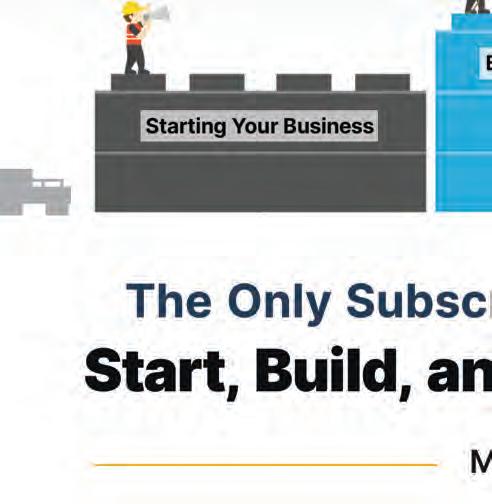

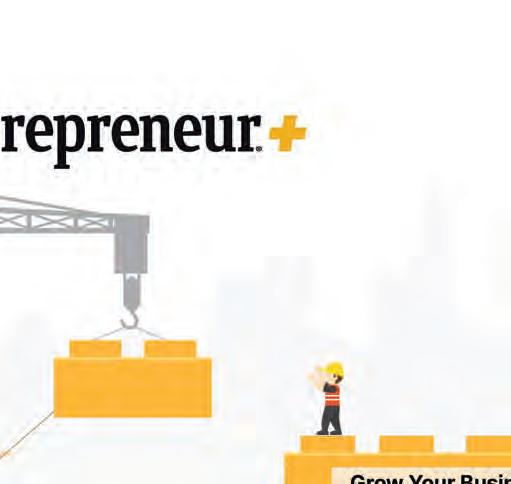






Are you a military vet looking to become a franchisee, or just want to support a brand that supports the troops? Check out these 150 brands.
compiled by TRACY STAPP HEROLD
Veterans make up around 6% of the U.S. population, but according to the International Franchise Association (IFA), they account for around 14% of all franchisees. Why are veterans so well-represented within the franchise industry? Because they’re a perfect fit for franchise ownership, thanks to their leadership skills, ability to follow established procedures, and familiarity with thinking on their feet and adapting to challenges. And many franchisors offer incentives such as franchise fee discounts that make it easier for veterans to start a business with them.
So which franchisors offer the best opportunities for veterans? Each year, we seek to find out by inviting brands to tell us what their veteran incentive is, how many of their units are veteran-owned, whether they hold any franchise giveaways for
veterans, whether they have veterans on their leadership team, and more. We took all of those factors into account—along with each company’s 2024 Franchise 500 score, which is based on an analysis of 150-plus data points in the areas of costs and fees, size and growth, franchisee support, brand strength, and financial strength and stability—to come up with our final ranking of the top 150 franchises for veterans.
Keep in mind that our list is not intended as a recommendation of any particular company, but rather as a starting point for your own research. If you’re a veteran interested in franchise ownership, it’s important to do your homework before investing. Read the company’s legal documents carefully, consult with an attorney and an accountant, and talk to as many franchisees as you can to find out if the opportunity is right for you.
1
Snap-on Tools
Professional tools and equipment
TOTAL UNITS
(Franchised / Co.-Owned)
4,461/213
STARTUP COST
$217.5K-$481.6K
FRANCHISE FEE
$16K
VETERAN INCENTIVE
$20,000 off cost of startup inventory
2
The UPS Store
Shipping, packing, package management, mailboxes, printing, faxing, shredding, notary services
TOTAL UNITS
(Franchised / Co.-Owned)
5,678/15
STARTUP COST
$100.9K-$495.9K FRANCHISE FEE
$9.95K-$29.95K
VETERAN INCENTIVE
$15,000 off franchise fee
3
Dream Vacations Travel agencies
TOTAL UNITS
(Franchised / Co.-Owned)
2,078/0
STARTUP COST
$2.6K-$21.9K
FRANCHISE FEE
$495-$10.5K
VETERAN INCENTIVE
30% off franchise fee; training fee waived for business partner; training fee waived for first veteran/military spouse associate, reduced by 50% for additional veteran/ military associates
4
Matco Tools
Mobile sales of mechanics’ tools and equipment
TOTAL UNITS (Franchised / Co.-Owned)
1,888/15
STARTUP COST
$107.5K-$340.1K
FRANCHISE FEE
$10K
VETERAN INCENTIVE
$10,000 off initial inventory
5 FastSigns Signs, graphics
TOTAL UNITS
(Franchised / Co.-Owned)
779/0
STARTUP COST
$248.1K-$344.6K
FRANCHISE FEE
$49.8K
VETERAN INCENTIVE
50% off franchise fee
6
Tropical Smoothie Cafe Smoothies, salads, wraps, sandwiches, flatbreads
TOTAL UNITS (Franchised / Co.-Owned) 1,463/1
STARTUP COST
$300K-$720.5K
FRANCHISE FEE
$35K
VETERAN INCENTIVE 50% off first-store franchise fee; $7,500 off franchise fee for additional stores
7
Grease Monkey Oil changes, preventive maintenance, brakes, light repairs
TOTAL UNITS (Franchised / Co.-Owned) 268/246
STARTUP COST
$251.8K-$821.1K FRANCHISE FEE
$39.9K
VETERAN INCENTIVE
$10,000 off franchise fee; 50% rebate on royalty fees for first year; 25% rebate on royalty fees for second year
8
Big O Tires Tires, tire services, auto products
TOTAL UNITS (Franchised / Co.-Owned) 463/0
STARTUP COST
$511.5K-$1.9M
FRANCHISE FEE
$10K-$17.5K
VETERAN INCENTIVE Franchise fee waived
9
Budget Blinds Window coverings, window film, rugs, accessories
TOTAL UNITS (Franchised / Co.-Owned) 1,498/0
STARTUP COST
$100.5K-$211.3K
FRANCHISE FEE
$19.95K
VETERAN INCENTIVE 15% off initial franchise and territory fees
10
PuroClean Property damage restoration and remediation
TOTAL UNITS
(Franchised / Co.-Owned) 471/0
STARTUP COST
$95.5K-$245.9K
FRANCHISE FEE
$59K
VETERAN INCENTIVE 25% off franchise fee
11
Sport Clips
Haircuts
Haircuts for men and boys
TOTAL UNITS
(Franchised / Co.-Owned) 1,820/82
STARTUP COST
$276.8K-$463K
FRANCHISE FEE
$30K-$69.5K
VETERAN INCENTIVE 20% off franchise fee
12
Leadership Management International
Leadership and organizational training and development
TOTAL UNITS
(Franchised / Co.-Owned)
495/0
STARTUP COST
$20K-$27.5K
FRANCHISE FEE
$15K
VETERAN INCENTIVE 80% interest-free financing on franchise fee
13
Express Employment Professionals
Staffing, HR solutions
TOTAL UNITS
(Franchised / Co.-Owned) 844/6
STARTUP COST
$132K-$391K
FRANCHISE FEE
$40K
VETERAN INCENTIVE 50% off franchise fee
14
Cruise Planners Travel agencies
TOTAL UNITS
(Franchised / Co.-Owned)
2,961/1
STARTUP COST
$1.9K-$20.5K
FRANCHISE FEE
$695-$10.99K
VETERAN INCENTIVE
$4,000 off $10,995 franchise fee
15
Pearle Vision
Eye care and eyewear
TOTAL UNITS
(Franchised / Co.-Owned)
461/106
STARTUP COST
$70.9K-$1.3M
FRANCHISE FEE
$30K
VETERAN INCENTIVE 20% off franchise fee
Joan Follmann served in the U.S. Navy for 21 years, retiring in 2003 with the rank of Yeoman Senior Chief (YNCS) with the designation of Aviation Warfare Specialist (AW). Now she helps people plan their perfect vacations as a Cruise Planners franchisee.

My choice of Cruise Planners was deeply personal. My husband and I had been working with a Cruise Planners franchisee to book our own cruises, and the seamless experience we had with him built a strong trust in the brand. Quite simply, we never considered another company—it was Cruise Planners all the way.
How has your military experience helped you as a franchisee?
My role as a YNCS(AW) and Flag Writer in the Navy honed my organizational and multitasking abilities. Flag Writers are similar to civilian executive

ments, appointments, and communications for admirals, all while anticipating challenges and setting priorities. These tasks translated perfectly into running a franchise, organizing complex itineraries, and maintaining clear communication with my clients.
What advice would you give to other veterans considering franchise ownership?
Look for a franchise like Cruise Planners that offers flexibility, support, and training. As veterans, we are already trained to follow procedures and protocols, making the transition smoother.

19
PIRTEK
Hydraulic and industrial hose maintenance, repair, and replacement
TOTAL UNITS (Franchised / Co.-Owned)
707/0
STARTUP COST
$216.4K-$619.3K
FRANCHISE FEE
$55K
VETERAN INCENTIVE
$15,000 off franchise fee
20
Ziebart
Auto detailing, films, appearance and protection services
TOTAL UNITS
(Franchised / Co.-Owned)
339/11
STARTUP COST
$370.8K-$566.1K
FRANCHISE FEE
$45K
VETERAN INCENTIVE
Franchise fee waived
24
Servpro Fire, water, and other damage cleanup, restoration, and reconstruction
TOTAL UNITS
(Franchised / Co.-Owned) 2,284/0
STARTUP COST
$241.3K-$301.8K FRANCHISE FEE $90K
VETERAN INCENTIVE 20% off franchise fee
25
ASP-America’s Swimming Pool Company
Swimming pool maintenance, repairs, renovations, and construction
TOTAL UNITS (Franchised / Co.-Owned) 387/0
STARTUP COST
$84.4K-$207.4K
FRANCHISE FEE
$40K-$90K
VETERAN INCENTIVE 30% off franchise fee
25% off franchise fee
29
Kiddie Academy Educational childcare
TOTAL UNITS
(Franchised / Co.-Owned) 336/1
STARTUP COST
$405K-$7.3M
FRANCHISE FEE
$145K
VETERAN INCENTIVE
$25,000 off franchise fee
30
The Goddard School Preschool/educational childcare
TOTAL UNITS
(Franchised / Co.-Owned) 636/0
STARTUP COST
$902.5K-$8.5M
FRANCHISE FEE
$135K
VETERAN INCENTIVE
$20,000 off franchise fee
AAMCO Transmissions and Total Car Care
Auto repair, maintenance, and service
TOTAL UNITS (Franchised / Co.-Owned) 541/4
STARTUP COST
$236.8K-$361.2K
FRANCHISE FEE
$39.5K
VETERAN INCENTIVE
$8,000 off franchise fee
32 Captain D’s Seafood
TOTAL UNITS (Franchised / Co.-Owned) 242/295
STARTUP COST
$898.6K-$1.4M
FRANCHISE FEE
$35K
VETERAN INCENTIVE 50% off first-unit franchise fee; reduced royalty fee for first year
Mountain Mike’s Pizza
Pizza, wings, salad bar, appetizers, desserts
TOTAL UNITS (Franchised / Co.-Owned) 290/0
STARTUP COST
$427.1K-$899.1K FRANCHISE FEE $30K
VETERAN INCENTIVE 50% off franchise fee
34
Bruster’s Real Ice Cream
Ice cream, frozen yogurt, ices, sherbets
TOTAL UNITS (Franchised / Co.-Owned) 210/1
STARTUP COST
$320.5K-$2.6M FRANCHISE FEE $40K
VETERAN INCENTIVE 50% off franchise fee
Homewatch CareGivers Home care services
TOTAL UNITS (Franchised / Co.-Owned) 248/0
STARTUP COST
$92.3K-$154K
FRANCHISE FEE $50K
VETERAN INCENTIVE 30% off franchise fee
36 Right at Home Home care, medical staffing
TOTAL UNITS (Franchised / Co.-Owned) 716/18
STARTUP COST
$88.7K-$160.7K FRANCHISE FEE
$49.5K
VETERAN INCENTIVE 25% off franchise fee
42 PrideStaff Staffing
$99.6K-$227.6K
TOTAL UNITS (Franchised / Co.-Owned) 209/2
STARTUP COST
$214.3K-$342.6K
FRANCHISE FEE
$30K-$40K
VETERAN INCENTIVE 25% off franchise fee, free office technology package, $1,000 marketing product credit, sales training workshop
44 The Cleaning Authority Residential and commercial cleaning
TOTAL UNITS (Franchised / Co.-Owned) 235/3
STARTUP COST
$82.5K-$172.7K FRANCHISE FEE
$15K-$20K
VETERAN INCENTIVE 30% off first-unit franchise and territory fees
45
Postal Annex+ Packing, shipping, postal, and business services
TOTAL UNITS (Franchised / Co.-Owned) 322/0
STARTUP COST
$226.1K-$319.8K FRANCHISE FEE
$29.95K
VETERAN INCENTIVE 25% off franchise fee
46
My Salon Suite
Salon suites
TOTAL UNITS
(Franchised / Co.-Owned) 258/31
STARTUP COST
$984.99K-$1.6M
FRANCHISE FEE
$50K
VETERAN INCENTIVE 50% off franchise fee
47
Pet Supplies Plus Pet food and supplies, bathing/grooming services
TOTAL UNITS (Franchised / Co.-Owned) 500/232
STARTUP COST
$498.3K-$1.98M
FRANCHISE FEE
$49.9K
VETERAN INCENTIVE 20% off franchise fee
48
Jan-Pro Cleaning and Disinfecting
Commercial cleaning
TOTAL UNITS (Franchised / Co.-Owned) 10,654/0
STARTUP COST
$4.8K-$58.1K
FRANCHISE FEE
$2.5K-$44K
VETERAN INCENTIVE 24-month interest-free financing on 50% of franchise fees of $8.1K+
49 Lawn Doctor Lawn, tree, and shrub care; mosquito and tick control
TOTAL UNITS
(Franchised / Co.-Owned) 644/0
STARTUP COST
$133.5K-$149K
FRANCHISE FEE $45K
VETERAN INCENTIVE 10% off franchise fee
50 Checkers and Rally’s Burgers, fries
TOTAL UNITS
(Franchised / Co.-Owned) 530/236
STARTUP COST
$639.99K-$2.3M FRANCHISE FEE $30K
VETERAN INCENTIVE Franchise fee waived
51
The Joint Chiropractic Chiropractic services
TOTAL UNITS
(Franchised / Co.-Owned) 837/127
STARTUP COST
$254.3K-$520.8K
FRANCHISE FEE
$39.9K
VETERAN INCENTIVE
MEET A VETERAN FRANCHISEE/ Jake Whitchurch of
ake Whitchurch went from serving as an Airborne


$6,000 off first-unit franchise fee What advice would you give to




















Weshareour40+ yearsofsuccesswith franchiseownerswhoareVeteransjustlike you.Theythriveonthetenacity,self-reliance, teamwork,discipline,dedicationandleadership theygainedinthemilitary.
Areyoureadytoapplyyourmilitarysuccess toownyourfuture?
Discoverhowthesevetsthriveowninga Neighborly® homeservicefranchise. Go.Nbly.com/Veterans Starthere.

52 Charleys Cheesesteaks & Wings
Philly cheesesteaks, fries, wings, lemonade
TOTAL UNITS
(Franchised / Co.-Owned)
735/57
STARTUP COST
$202.1K-$935.7K
FRANCHISE FEE
$24.5K
VETERAN
53
College Hunks
Hauling Junk & Moving Junk removal, moving, and labor services
$258.1K-$480.5K
$7,500 off franchise fee
54
Phenix Salon Suites Salon suites TOTAL UNITS (Franchised / Co.-Owned) 364/31
STARTUP COST
$740.98K-$1.96M
$52.5K
$17,500
55

VETERAN INCENTIVE $15,000 off franchise fee, reduced royalty fee for first year
Mr. Appliance Residential and commercial appliance installation and repairs
$113.8K-$204.4K FRANCHISE FEE
$63.8K
VETERAN INCENTIVE 20% off franchise fee
56 Wild Birds Unlimited Bird-feeding supplies and nature gift items
TOTAL UNITS (Franchised / Co.-Owned) 361/1 STARTUP COST
$224.3K-$379.3K FRANCHISE FEE
$40K
VETERAN INCENTIVE 15% off franchise fee
60 Ziggi’s Coffee Coffee, specialty drinks, energy drinks, breakfast and lunch items
TOTAL UNITS (Franchised / Co.-Owned) 87/7
STARTUP COST
$526.5K-$2M FRANCHISE FEE $40K VETERAN INCENTIVE 25% off first-unit franchise fee
61 Cornwell Quality Tools Automotive tools and equipment
TOTAL UNITS (Franchised / Co.-Owned) 802/0
STARTUP COST
$69.5K-$298.8K FRANCHISE FEE $0
VETERAN INCENTIVE Interest-free financing on initial inventory purchase
STARTUP COST
$122.3K-$263.8K
FRANCHISE FEE
$42.5K
VETERAN INCENTIVE 20% off franchise fee
65 ServiceMaster Restore
Commercial/residential
disaster restoration
TOTAL UNITS
(Franchised / Co.-Owned) 2,284/0
STARTUP COST
$255.1K-$365.3K
FRANCHISE FEE
$72.5K
VETERAN INCENTIVE 20% off franchise fee
66 1-800 Water Damage
Property restoration
TOTAL UNITS
(Franchised / Co.-Owned) 185/0
STARTUP COST
$210.9K-$316.4K
FRANCHISE FEE
$59K
VETERAN INCENTIVE 20% off franchise fee
67
Dunkin’ Coffee, doughnuts, baked goods
TOTAL UNITS
(Franchised / Co.-Owned) 13,758/32
STARTUP COST
$435.5K-$1.8M
FRANCHISE FEE
$40K-$90K
VETERAN INCENTIVE 20% off franchise fee for first five traditional restaurants
68 Pinch A Penny Pool Patio Spa
Swimming pool and spa retail; pool and backyard maintenance and repair services
TOTAL UNITS
(Franchised / Co.-Owned) 292/1
STARTUP COST
$480.9K-$814.2K
FRANCHISE FEE $50K
VETERAN INCENTIVE 20% off franchise fee
69
Batteries Plus Batteries, light bulbs, and related products; repair services
TOTAL UNITS (Franchised / Co.-Owned) 610/120
STARTUP COST
$252.3K-$493.8K
FRANCHISE FEE
$44.5K
VETERAN INCENTIVE
$10,000 off franchise fee
70
HomeTeam Inspection Service
Home and commercial property inspections and related services
TOTAL UNITS (Franchised / Co.-Owned)
200/0
STARTUP COST
$60.1K-$86.8K
FRANCHISE FEE
$45K-$65K
VETERAN INCENTIVE 15% larger territory
71 Golden Chick Chicken
TOTAL UNITS (Franchised / Co.-Owned) 198/33
STARTUP COST
$810.3K-$1.9M
FRANCHISE FEE
$30K
VETERAN INCENTIVE
33.3% off franchise fee
72 Wireless Zone Wireless devices, services, and accessories
TOTAL UNITS
(Franchised / Co.-Owned)
743/0
STARTUP COST
$190K-$445.5K
FRANCHISE FEE
$1K-$25K
VETERAN INCENTIVE
50% off franchise fee/ transfer fee

$7.6K-$32.5K
$6.5K-$16.5K
$96.7K-$122.5K
78 redbox+ Dumpsters Construction dumpsters with attached portable restrooms
TOTAL UNITS (Franchised / Co.-Owned) 262/0
STARTUP COST
$598.2K-$836.4K FRANCHISE FEE
$59.5K VETERAN INCENTIVE 20% off first-unit franchise fee
79 iCryo Cryotherapy, body sculpting, IV infusions and vitamin shots, light therapy, pain management and recovery services
TOTAL UNITS (Franchised / Co.-Owned) 29/4
STARTUP COST
$474.5K-$1.2M
FRANCHISE FEE
$49.5K
VETERAN INCENTIVE 35% off franchise fee; royalty fee waived for 6 months
80
One Hour Heating & Air Conditioning
Heating and cooling repairs, replacements, and maintenance; indoor air quality services
TOTAL UNITS (Franchised / Co.-Owned) 390/28
STARTUP COST
$129.1K-$270.4K
FRANCHISE FEE
$43K
VETERAN INCENTIVE 30% off first-unit franchise and additional population fees
81
Mr. Electric Electrical services
TOTAL UNITS (Franchised / Co.-Owned) 237/0
STARTUP COST
$152K-$314.5K
FRANCHISE FEE
$42.5K
VETERAN INCENTIVE 20% off franchise fee
$127.5K-$455.4K
Signs, graphics, displays, digital imaging, visual communications
TOTAL UNITS
(Franchised / Co.-Owned)
281/2
STARTUP COST
$132.1K-$522.1K
FRANCHISE FEE
$40K-$45K
VETERAN INCENTIVE 25% off franchise fee
83
USA Insulation
Home insulation and energy-efficient products
TOTAL UNITS
(Franchised / Co.-Owned) 113/1
STARTUP COST
$265.5K-$410K
FRANCHISE FEE
$45K-$55K
VETERAN INCENTIVE 20% off franchise fee
84
Monster Tree Service
Residential and commercial tree and plant care services
TOTAL UNITS
(Franchised / Co.-Owned) 215/3
STARTUP COST
$484.1K-$818.6K
FRANCHISE FEE
$49.5K
VETERAN INCENTIVE 30% off franchise fee
85
Property Management Inc.
Commercial, residential, association, and shortterm rental property management
TOTAL UNITS
(Franchised / Co.-Owned) 383/0
STARTUP COST
$70.1K-$148K
FRANCHISE FEE
$59.9K-$85K
VETERAN INCENTIVE 10% off standard franchise fee ($59,900)
86
Huntington Learning Center
Tutoring and test prep
TOTAL UNITS
(Franchised / Co.-Owned)
264/4
STARTUP COST
$163.5K-$302.2K
FRANCHISE FEE
$36K
VETERAN INCENTIVE 25% off first-unit franchise fee
After the events of September 11th, Todd Pinkler enlisted in the Marine Corps and served as a Reconnaissance Marine. Now he takes orders of a very different kind as owner of Voodoo Brewing Co. in Myrtle Beach, South Carolina.
What drew you to franchising?
A franchise has created its own policies and guidelines, much like the military. If you follow a franchise’s standard operating procedures, you have a great chance of being successful.
Why did you choose Voodoo Brewing Co.?
I stumbled upon Voodoo while preparing for retirement and was intrigued. I had several phone conversations with them and attended their approval day, where I was able to visit two different pubs and try the product. After that, my wife, a good friend, and I decided to take the leap.

and that I must listen to those

same philosophy over to running my pub by listening to and implementing ideas from my employees.
What advice would you give to other veterans considering franchise ownership?
Figure out what interests and excites you and determine what your market needs (or doesn’t need).




To the brave veterans who serve this nation, Huntington extends our deep gratitude for your service. To help you transition from military life to starting your entrepreneurial journey, Huntington offers the following:
• 25% off initial franchise fee to qualified retired and active-duty U.S. military veterans
• Access to a strong network of veteran franchise owners to lean on for support
• A mission-driven purpose to continue serving your community
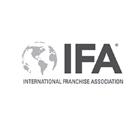

“Huntington has helped me transition from military life to business owner. My military background has given me strong leadership experience and the ability to follow a proven-and-tested system — all of which are skill sets I was able to put into great use as a Huntington franchise owner.”
Steve Moore Air Force Veteran, Owner of Huntington Learning Center – California, MD


87 Paul Davis Restoration Insurance restoration TOTAL
$285.8K-$737.4K
$57.5K-$184K
VETERAN
88
89 PJ’s Coffee of New Orleans Coffee, tea, pastries, sandwiches TOTAL UNITS (Franchised / Co.-Owned) 180/0
$459K-$1.2M
90
FEE
$20K
VETERAN INCENTIVE 50% off franchise fee
91 Real Property Management Property management
TOTAL UNITS (Franchised / Co.-Owned) 449/0
$91.7K-$266.2K FRANCHISE FEE
$59.9K
VETERAN INCENTIVE 15% off franchise fee
92 Handyman Connection
Home repairs, remodeling
TOTAL UNITS (Franchised / Co.-Owned) 69/0
STARTUP COST
$105.6K-$224.8K FRANCHISE FEE
$65K
VETERAN INCENTIVE
$10,000 off franchise fee
93 Rainbow Restoration Restoration and remediation
TOTAL UNITS
(Franchised / Co.-Owned) 380/0
STARTUP COST
$169.3K-$325.9K
FRANCHISE FEE
$40K
VETERAN INCENTIVE 20% off franchise fee
94 Interim HealthCare Medical and nonmedical home care, medical staffing
TOTAL UNITS (Franchised / Co.-Owned) 651/4
STARTUP COST
$125.5K-$199.5K
FRANCHISE FEE
$50K
VETERAN INCENTIVE 10% off franchise fee
95 Superior Fence & Rail
Fence sales and installation
TOTAL UNITS (Franchised / Co.-Owned) 295/2
STARTUP COST
$130.5K-$206.8K
FRANCHISE FEE
$59.5K
VETERAN INCENTIVE 15% off first-unit franchise fee
96 Mr. Handyman Residential and commercial repair, maintenance, and improvement services
TOTAL UNITS (Franchised / Co.-Owned) 350/0
STARTUP COST
$123K-$159.6K
FRANCHISE FEE
$65K
VETERAN INCENTIVE 15% off minimum franchise fee
97
Benjamin Franklin Plumbing Residential and light commercial plumbing services
TOTAL UNITS
(Franchised / Co.-Owned) 332/10
STARTUP COST
$130.4K-$274.1K
FRANCHISE FEE
$43K
VETERAN INCENTIVE 30% off franchise and additional population fees
98
Instant Imprints
Embroidery, signs, banners, promotional products
TOTAL UNITS
(Franchised / Co.-Owned) 41/2
STARTUP COST
$156.4K-$361.6K
FRANCHISE FEE
$39.95K
VETERAN INCENTIVE
$10,000 off franchise fee; free training
99
Two Men and a Truck
Moving, storage, and junk removal services
TOTAL UNITS
(Franchised / Co.-Owned) 361/1
STARTUP COST
$107.1K-$538.7K
FRANCHISE FEE
$30K-$85K
VETERAN INCENTIVE 10% off franchise fee
100 Office Pride
Commercial Cleaning Services
Commercial cleaning
TOTAL UNITS
(Franchised / Co.-Owned) 150/1
STARTUP COST
$80.4K-$126.6K
FRANCHISE FEE
$45K
VETERAN INCENTIVE 25% off franchise fee

101
Ace Handyman Services
Residential and commercial repairs, restoration, and maintenance
TOTAL UNITS
(Franchised / Co.-Owned) 367/13
STARTUP COST
$131.1K-$220.3K
FRANCHISE FEE
$70K
VETERAN INCENTIVE
$7,000 off first-unit franchise fee
102
Concrete Craft Decorative concrete coatings
TOTAL UNITS
(Franchised / Co.-Owned) 74/0
STARTUP COST
$156.3K-$233.5K
FRANCHISE FEE
$19.95K
VETERAN INCENTIVE 15% off initial franchise and territory fees
Aroma Joe’s Coffee, espresso, tea, energy drinks, baked goods
TOTAL UNITS (Franchised / Co.-Owned) 114/0
STARTUP COST
$586.6K-$1.9M
FRANCHISE FEE
$25K
VETERAN INCENTIVE 50% off first-unit franchise fee
104
The Tailored Closet Home organization and storage solutions
TOTAL UNITS (Franchised / Co.-Owned) 165/0
STARTUP COST
$155.2K-$268.7K
FRANCHISE FEE
$19.95K
VETERAN INCENTIVE 15% off initial franchise and territory fees
Fibrenew Leather, plastic, and vinyl restoration and repair
TOTAL UNITS
(Franchised / Co.-Owned) 307/1
STARTUP COST
$100.6K-$120.6K
FRANCHISE FEE $47K
VETERAN INCENTIVE 10% off franchise fee
106 PostNet
Packing, shipping, printing, signs, marketing solutions
TOTAL UNITS
(Franchised / Co.-Owned) 753/0
STARTUP COST
$223.2K-$289.8K
FRANCHISE FEE
$37.9K
VETERAN INCENTIVE 35% off franchise fee


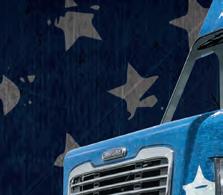


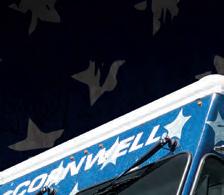

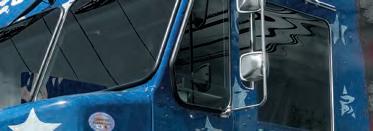































































107
Unishippers
Arrangement of parcel and freight shipping services
TOTAL UNITS (Franchised / Co.-Owned) 205/83
STARTUP COST
$34.6K-$233.3K FRANCHISE FEE $30K
VETERAN INCENTIVE 50% off franchise fee
108
Augusta Lawn Care Services Lawn care and landscaping
TOTAL UNITS (Franchised / Co.-Owned) 151/2
STARTUP COST
$12.99K-$82.5K
$6.99K-$25K
VETERAN INCENTIVE
$5,000 off franchise fee
109
Glass Doctor Auto/residential/ commercial glass installation, repair, and replacement
TOTAL UNITS (Franchised / Co.-Owned) 186/0 STARTUP COST
$152.9K-$317.1K
FRANCHISE FEE
$59.9K
VETERAN INCENTIVE 20% off franchise fee
110
Jeremiah’s Italian Ice Italian ice, gelati, soft ice cream
TOTAL UNITS (Franchised / Co.-Owned) 140/19 STARTUP COST
$350.6K-$721K FRANCHISE FEE $30K
VETERAN INCENTIVE 20% off franchise fee
111 Destination Athlete Equipment, apparel, fundraising, and performance solutions for youth, high school, and college athletic teams
TOTAL UNITS (Franchised / Co.-Owned) 259/0
STARTUP COST
$28.3K-$93.6K FRANCHISE FEE
$20K-$50K
VETERAN INCENTIVE 15% off franchise fee
112
The Honey Baked Ham Co.
Retail specialty foods, catering, cafes
TOTAL UNITS (Franchised / Co.-Owned) 214/229
STARTUP COST
$448.6K-$858.9K FRANCHISE FEE
$15K
VETERAN INCENTIVE
$10,000 off first-store franchise fee
Pop-A-Lock
Mobile locksmith and security services
TOTAL UNITS (Franchised / Co.-Owned)
508/7
STARTUP COST
$137.8K-$170.8K FRANCHISE FEE
$23K-$63K
VETERAN INCENTIVE 10% off franchise fee; special training program for veteran employees
114
NerdsToGo
Technology sales, repair, and services
TOTAL UNITS (Franchised / Co.-Owned) 32/0
STARTUP COST
$115.1K-$172.8K
FRANCHISE FEE
$49.8K
VETERAN INCENTIVE 50% off franchise fee
115
Oxi Fresh Carpet Cleaning Carpet, upholstery, hardwood floor, tile, and grout cleaning; odor control; home disinfection
TOTAL UNITS (Franchised / Co.-Owned) 475/13
STARTUP COST
$52.8K-$82.8K
FRANCHISE FEE
$46.9K
VETERAN INCENTIVE 10% off franchise fee
116 Home Helpers Home Care
Nonmedical/skilled home care; monitoring products and services
TOTAL UNITS (Franchised / Co.-Owned) 332/0
STARTUP COST
$113.4K-$161.6K
FRANCHISE FEE
$49.9K
VETERAN INCENTIVE 20% off franchise fee
117
City Wide Facility Solutions Commercial cleaning and facility maintenance
TOTAL UNITS (Franchised / Co.-Owned) 102/1
STARTUP COST
$173.6K-$372K
FRANCHISE FEE
$70K
VETERAN INCENTIVE 10% off franchise fee
118
Mosquito Joe
Outdoor pest control
TOTAL UNITS (Franchised / Co.-Owned) 440/2
STARTUP COST
$115.6K-$157.5K
FRANCHISE FEE
$42.5K
VETERAN INCENTIVE
$8,500 off franchise fee
119
Fresh Coat Painters
Residential and commercial painting
TOTAL UNITS (Franchised / Co.-Owned) 181/0
STARTUP COST
$81.2K-$120.3K
FRANCHISE FEE
$49.9K
VETERAN INCENTIVE 15% off franchise fee
120
The Junkluggers
Environmentally conscious residential and commercial junk removal
TOTAL UNITS
(Franchised / Co.-Owned) 146/4
STARTUP COST
$96K-$339.2K
FRANCHISE FEE
$50K
VETERAN INCENTIVE 30% off franchise fee
121
Precision Garage Door Service
Residential garage door repair, installation, and service
TOTAL UNITS
(Franchised / Co.-Owned) 133/0
STARTUP COST
$145.4K-$317.9K
FRANCHISE FEE
$67.5K-$135K
VETERAN INCENTIVE 20% off franchise fee


Why did you choose Metal Supermarkets?
The business model made sense, and I already knew I enjoyed working with metal. I also saw the market gap for cut-to-size metal in my area. I was confident in their systems and support. Lastly, there is tremendous flexibility and autonomy in products and services you can offer through Metal Supermarkets. You get to create the “menu”—within reason, of course.
decision-making. Combining that with an unwavering commitment to “do the right thing” has been invaluable to developing our customer relationships.
What advice would you give to other veterans considering franchise ownership? Ask a lot of questions of the franchisor, make sure you are comfortable with their process, and ensure you are confident in the business model and the products or services you will be offering.







Scooter’s Coffee is committed to helping military veterans transition into entrepreneurship – an amazing career option that can leverage your leadership skills.
Ranked No. 32 on Entrepreneur magazine’s Top Franchises for Veterans, here’s what makes our specialty coffee franchise stand out:
Nationwide presence:
Nationwide presence:
We’re experiencing incredible expansion with over 800 locations nationwide and plenty of territory still available for investment.
We’re experiencing incredible expansion with over 800 of territory still investment.
Comprehensive support:
Our franchise partners benefit from extensive training, marketing, and operational support tailored to help you succeed.
Our franchise partners benefit from extensive training, and support tailored to you
Vet-Fran
Vet-Fran member:
Core values:
We’re proud members of VetFran and support our military veterans by offering a $20,000 credit toward their first-year of product.
Extensive network:
Investing in Scooter’s Coffee connects you to a supportive network of fellow franchisees, including many military veterans who understand the unique challenges and opportunities faced by veteran entrepreneurs.
Award-winning brand:
Core values: Integrity, love, humility, and courage are the guiding principles of our brand. These values have shaped our journey, ensuring we stay true to our mission as we grow.
Proven blueprint:
Proven blueprint: Our franchise system is home to many successful multi-unit owners, including new entrepreneurs who have found success with our brand and military veterans transitioning from active duty. for Veterans,
To learn more about our franchise opportunity, visit
We’ve been recognized for our excellence through various industry accolades, including Entrepreneur magazine’s Franchise 500, Franchise Times’ Fast & Serious, and the Inc. 5000.
We’re members of VetFran and support our veterans a credit toward their of magazine’s Franchise 500,



122
Papa Murphy’s Take ‘N’ Bake Pizza Take-and-bake pizza
TOTAL UNITS
(Franchised / Co.-Owned)
1,108/12
STARTUP COST
$367.2K-$670.5K
FRANCHISE FEE
$25K
VETERAN INCENTIVE 50% off franchise fee
123
Pokemoto
Poke bowls, burritos, salads, boba tea
TOTAL UNITS (Franchised / Co.-Owned)
36/3
STARTUP COST
$184.5K-$378.4K FRANCHISE FEE
$30K
VETERAN INCENTIVE
$10,000 off franchise fee
124
ServiceMaster Clean Commercial cleaning
TOTAL UNITS (Franchised / Co.-Owned)
949/0
STARTUP COST
$89.8K-$131.2K
FRANCHISE FEE
$32.5K
VETERAN INCENTIVE 20% off franchise fee
125
Massage Envy Massage therapy, stretch therapy, skincare, aesthetics
TOTAL UNITS
(Franchised / Co.-Owned)
1,028/0
STARTUP COST
$605.9K-$1M FRANCHISE FEE
$45K
VETERAN INCENTIVE
$9,000 off first-unit franchise fee; $7,000 off franchise fee for subsequent units
126 Chem-Dry Carpet & Upholstery Cleaning Carpet, upholstery, wood floor, and area rug cleaning, tile and stone care, granite countertop renewal
TOTAL UNITS (Franchised / Co.-Owned)
1,683/0
STARTUP COST
$72.1K-$253.9K
FRANCHISE FEE
$23.5K
VETERAN INCENTIVE 10% off franchise fee
127
Zerorez Carpet and surface cleaning
TOTAL UNITS (Franchised / Co.-Owned) 65/17
STARTUP COST
$244.1K-$516.3K
FRANCHISE FEE
$15K-$60K
VETERAN INCENTIVE $10,000 off franchise fee
128 Voodoo Brewing Co. Craft brew pubs
TOTAL UNITS (Franchised / Co.-Owned) 22/5
STARTUP COST
$481.5K-$1.5M
FRANCHISE FEE $75K
VETERAN INCENTIVE 20% off franchise fee
129 Aire Serv HVAC services
TOTAL UNITS (Franchised / Co.-Owned) 245/0
STARTUP COST
$107.3K-$253.1K FRANCHISE FEE $45K
VETERAN INCENTIVE 20% off minimum franchise fee
130 Metal Supermarkets Metal stores
TOTAL UNITS (Franchised / Co.-Owned) 119/9
STARTUP COST
$340.5K-$592.5K
FRANCHISE FEE
$44.5K
VETERAN INCENTIVE $5,000 off franchise fee
131 Nextaff Staffing
TOTAL UNITS (Franchised / Co.-Owned) 35/2
STARTUP COST
$121.8K-$156.9K
FRANCHISE FEE
$49K
VETERAN INCENTIVE 20% off franchise fee
132
TeamLogic IT IT managed services for businesses
TOTAL UNITS
(Franchised / Co.-Owned) 293/0
STARTUP COST
$106.9K-$141.3K
FRANCHISE FEE
$49.5K
VETERAN INCENTIVE
$9,500 off franchise fee
133
Teriyaki Madness Asian food
TOTAL UNITS (Franchised / Co.-Owned) 153/1
STARTUP COST
$350.5K-$976.9K
FRANCHISE FEE
$45K
VETERAN INCENTIVE 15% off franchise fee
134
The Grounds Guys
Lawn and landscape design and maintenance
TOTAL UNITS
(Franchised / Co.-Owned) 259/0
STARTUP COST
$88.8K-$234.8K
FRANCHISE FEE
$35K
VETERAN INCENTIVE 20% off minimum franchise fee
135
Zoom Room
Indoor dog training and socialization, pet products
TOTAL UNITS (Franchised / Co.-Owned) 64/5
STARTUP COST
$317.6K-$489.5K
FRANCHISE FEE
$49.5K
VETERAN INCENTIVE 10% off franchise fee
136
Mister Sparky
Residential electrical maintenance, repair, and replacement services
TOTAL UNITS
(Franchised / Co.-Owned)
187/6
STARTUP COST
$121.3K-$264.4K
FRANCHISE FEE
$33K
VETERAN INCENTIVE 30% off franchise and additional population fees
Senior Helpers
In-home senior care
TOTAL UNITS
(Franchised / Co.-Owned)
374/13
STARTUP COST
$127.8K-$171.8K
FRANCHISE FEE
$55K
VETERAN INCENTIVE 15% off franchise fee
138
Tint World
Auto, home, and business window tinting; vehicle wraps, mobile electronics, auto accessories, detailing services
TOTAL UNITS
(Franchised / Co.-Owned)
143/0
STARTUP COST
$279.95K-$439.95K
FRANCHISE FEE
$49.95K
VETERAN INCENTIVE 10% off franchise fee
139
Outdoor Lighting Perspectives
Residential landscape, architectural, holiday, and hospitality lighting
TOTAL UNITS
(Franchised / Co.-Owned)
137/0
STARTUP COST
$99.7K-$214.2K
FRANCHISE FEE
$59.5K
VETERAN INCENTIVE 15% off franchise fee
140
Freedom Boat Club
Membership boat clubs
TOTAL UNITS
(Franchised / Co.-Owned) 280/126
STARTUP COST
$222.5K-$500.5K
FRANCHISE FEE
$50K
VETERAN INCENTIVE 10% off franchise fee
141
Scoop Soldiers Pet waste removal
TOTAL UNITS
(Franchised / Co.-Owned) 95/11
STARTUP COST
$68.6K-$118.8K
FRANCHISE FEE
$39.5K
VETERAN INCENTIVE
$10,000 off franchise fee
142
The Patch Boys
Drywall repair
TOTAL UNITS
(Franchised / Co.-Owned) 290/0
STARTUP COST
$59.4K-$90.4K
FRANCHISE FEE
$29.5K
VETERAN INCENTIVE 20% off first-unit franchise fee
143
Griswold Home Care
Nonmedical home care
TOTAL UNITS (Franchised / Co.-Owned) 183/16
STARTUP COST
$99.1K-$177.1K
FRANCHISE FEE
$49.5K-$54.5K
VETERAN INCENTIVE 20% off franchise fee
144
Happy Joe’s Pizza & Ice Cream
Pizza, pasta, sandwiches, salads, ice cream
TOTAL UNITS (Franchised / Co.-Owned) 37/3
STARTUP COST
$536.9K-$1.3M
FRANCHISE FEE
$35K
VETERAN INCENTIVE
$10,000 off franchise fee
145
Ben’s Soft Pretzels Soft pretzels, dipping sauces, beverages
TOTAL UNITS (Franchised / Co.-Owned) 91/6
STARTUP COST
$86K-$339.5K
FRANCHISE FEE
$30K
VETERAN INCENTIVE 50% off franchise fee
146
Five Star Painting
Residential and commercial painting
TOTAL UNITS (Franchised / Co.-Owned) 260/0
STARTUP COST
$77.4K-$184.5K FRANCHISE FEE
$45K
VETERAN INCENTIVE 20% off minimum franchise fee
147 Aussie Pet Mobile Mobile pet grooming TOTAL UNITS (Franchised / Co.-Owned) 93/0
STARTUP COST
$178.8K-$203.2K
FRANCHISE FEE
$19.95K
VETERAN INCENTIVE 15% off initial franchise and territory fees
148 Two Maids Residential cleaning TOTAL UNITS (Franchised / Co.-Owned) 139/0 STARTUP COST
$93.4K-$149.9K FRANCHISE FEE $19.95K
VETERAN INCENTIVE 15% off initial franchise and territory fees
149
Window Genie Residential window cleaning, window tinting, pressure washing
TOTAL UNITS (Franchised / Co.-Owned) 107/0
STARTUP COST
$141.7K-$267.6K
FRANCHISE FEE
$62.5K-$70.6K
VETERAN INCENTIVE Expanded territory (6,250 additional qualified households)
150 Port of Subs Subs, wraps, salads, desserts, breakfast, catering
TOTAL UNITS (Franchised / Co.-Owned) 119/7
STARTUP COST
$315.5K-$559.1K
FRANCHISE FEE
$25K
VETERAN INCENTIVE 50% off franchise fee


























































THANK YOU TO OUR VETERANS! TO SHOW OUR SUPPORT, WE OFFER 50% OFF THE FRANCHISE FEE FOR VETERANS AND FIRST RESPONDERS
As a growing $29 billion industry, signage and graphics will be in demand as long as businesses need to be seen. FASTSIGNS® will be there to create captivating, high performing visuals for businesses around the world.
• Over 775 locations in 9 countries
• Business-to-Business hours
• Low staffing requirement
• Professional business clientele www.fastsigns.com


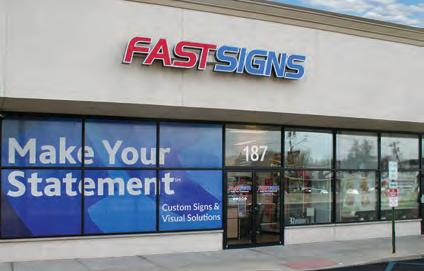
As the leading computer services franchise, NerdsToGo is an executive model franchise with low employee count and a mobile business with productive physical footprint.
• Over 30 locations in 15 states and growing!
• Over 500 markets available nationwide
• Diverse & recurring revenue stream
• Limited nights and weekends
• Low staffing requirement
• Award-winning franchise support
Salon suite franchise opportunities are perfect for entrepreneurially-minded individuals who want to grow their business ventures or explore franchising. A MY SALON Suite franchise owner is the landlord and stylists rent salon space from you.
• Over 325 locations nationwide
• Semi-absentee
• Few to no employees
• Turnkey franchise opportunity
www.mysalonsuite.com

www.nerdstogo.com


There are a lot of franchise resturants. So how do you know which ones are worth buying? This restaurant veteran says it’s all about average unit volume—and here’s why. by KIM
KAVIN
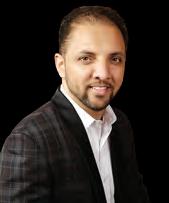
IF YOU WANT to work in restaurants, look at the business through Sonu Chandi’s eyes. His life has been shaped by this business, but he also knows it’s a game of cold numbers.
In 2000, at the age of 16, he moved to America from his small Indian village—then learned English while working at a restaurant his dad managed. In 2003, his dad and two partners opened a restaurant, and Chandi got involved with the front-of-house. “That’s how I learned how the restaurant world works,” he says. Then he got into the business himself. He bought an existing Mountain Mike’s Pizza franchise in 2007. And now Chandi Hospitality Group, a company he founded with his brothers, runs 17 Mountain Mike’s, is opening 10 units of Guy Fieri’s Chicken Guy! and owns a few independent restaurants too.
You might think this makes him sentimental about restaurants, but in truth, it makes him an analytical number cruncher. What makes a good restaurant, in his eyes? “AUV,” he says. Average unit volume. Here’s how this restaurant man evaluates a tasty opportunity.
How do you choose the brands you work with?
We’re really strategic about looking at their AUV—the average unit volume. It’s the average sales for each location. When you have a high AUV, that gives you the bandwidth to do more things. Our strategy is finding concepts with a high AUV and possibility of a good profit margin and a territory that we have experienced.
Guy Fieri’s Chicken Guy! concept is newer; the brand launched in 2018. Is there a trick to evaluating AUV with a newer brand?

Chicken Guy! doesn’t have enough units to give it actual volume from those units, but what we’ve seen is that the comparable competitors are doing really well in that segment. We know Guy has national brand awareness. We really think that’s going
Why do you think AUV is so critical?
that can do more than $2.5 million, like some of the competing chicken concept brands are doing—some of them are doing more than $3 million in average unit volume—that’s important. If you’re doing research as a franchisee, look at that top line.
Do you look only at the top line? Franchisors will say, “The top
then it comes down to whether you have systems to manage the daily labor, the daily food costs.
How do you keep those daily costs down?
In the past year, we invested in a back-office team in India. We’re three brothers in the business, and my youngest brother moved to India to operate that
every little detail without taking anything away from our local workforce, but we can enhance that workforce with things like handling phone calls and better practices on accounting.
It sounds like you have even bigger plans on the horizon. We will definitely grow into being a franchisor in the future.

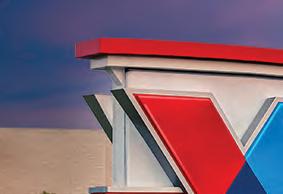
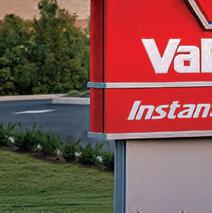


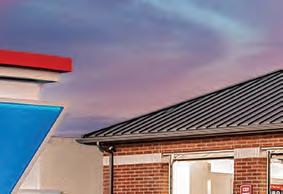





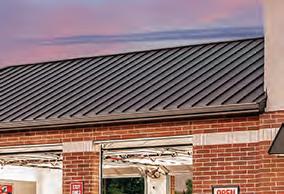


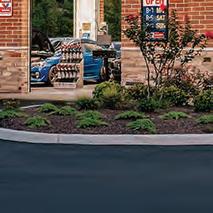
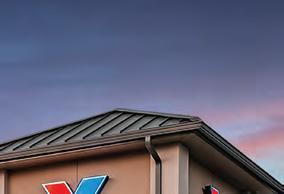





































































































...unless you speak up and tell them! That’s how this franchisee become a CEO, and then transformed herself into a true leader. by
CARL STOFFERS
In 2020, Just Between Friends was facing a crisis. It’s an events-based business, which meant it was hit especially hard by COVID. Meanwhile, the husband of one of its founders became seriously ill, so she needed to step back from day-to-day operations.
The company began looking for a president to take over—and Tracy Panase was sure she’d be considered. She was the brand’s top franchisee, after all. Three of her four locations were among the company’s top 10 earners nationwide. She’d be a perfect president, she thought. But they never called her.
Panase stewed over this. Then she talked it over with her husband.
“Did you raise your hand?” he asked her.
“No, I didn’t,” she realized. She assumed that her hard work and success would speak for itself, but she had never vocalized her ambitions. This was a crucial lesson for her: If you want something, you have to step up and express it. You have to raise your hand.
So she did. She reached out to the company’s cofounder, Shannon Wilburn. What followed was an 18-month conver-

In 2022, Panase officially took over. But when she began, she made the same mistake as before: She thought that because she had been a franchisee, her brand’s franchisees would immediately trust her to be CEO. Instead, franchisees had questions and concerns. Panase realized she’d need to speak up once again.
“The first thing I did was I visited 10 different major metropolitan areas all around the country,” she says, “where we had casual but intentional conversations about franchisees’ concerns, and that was awesome.”
She called it a “Better
Together” roadshow, meeting face-to-face with franchisees and listening to their concerns. It was so successful that she did it again this year, but with a focus on small-market franchises. “I’ll continue to do it on an annual basis, because that’s the number one thing in franchising—establishing those relationships and having that trust with the franchisees.”
Now she’s thinking ahead. Just Between Friends has more than 150 locations, and she wants to grow it to over 200 across all 50 states. But
she knows she won’t achieve this goal through her efforts alone—it will require every franchisee taking initiative and contributing to the larger mission. That means she needs every franchisee to raise their hand, speak up, and share what’s on their minds. Success isn’t just about working hard, after all. It’s about knowing when to step up and say, “I’m ready.”
“I think it’s an excellent reminder for all of us that you’ve got to verbalize what you want,” Panase says.













Be at the forefront of the $50.6 billion urgent care industry with American Family Care, where healthcare meets a healthy investment.












Leverage multi-unit ownership for greater efficiency and profit.




40+ years, 350+ clinics, 28 states. A model of true growth and stability



Make a real difference in health and wellness across communities.













STATE-OF-THE-ART


Modern, efficient, patient-first facilities.






SCAN TO START YOUR AFC MULTI-UNIT FRANCHISE JOURNEY.






Jason Skidmore didn’t have an education degree. Here’s how he thrived as an education franchisee anyway by CARL
STOFFERS
When Celebree School CEO Richard Huffman talks to prospective franchisees, he often hears the same misconception: People think they need a degree in education to run a school. But it’s not true. Huffman himself doesn’t have an education degree! Instead, he believes that franchisees just need to be great operators—so they can hire great educators.
Jason Skidmore is a perfect example. Skidmore’s background is in healthcare; he grew an ambulance service from a single ambulance into a multimillion-dollar operation with more than 130 vehicles and 350 employees. Then in 2019, he became a franchisee for Celebree, an earlyeducation franchise with more than 50 units open. Now Skidmore owns four units, with five more in development, and is bringing in more than $2.5 million in annual revenue—making him the brand’s top performer.
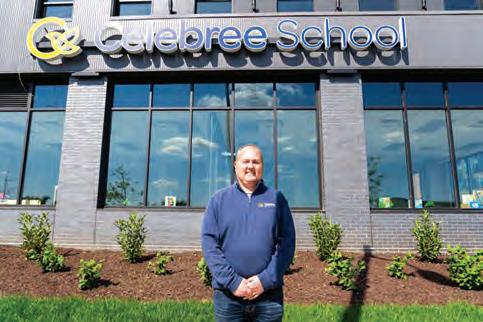
SO, HOW DID A NON-EDUCATOR BECOME THE TOP FRANCHISEE OF AN EDUCATION BUSINESS? HE FOLLOWED THESE THREE RULES/
When you run a school, your customers (parents!) expect a great experience and curriculum—but they’ll judge you equally on your communication. That’s why Skidmore doubles down on it. “Make sure parents always have a voice at the table,” he says, “and build a leadership team that wants to listen and understands the importance of listening.”
If you’re a franchise owner, you can’t just add a second (or third) unit and run things the same. Your systems must adapt. “It’s looking at what those requirements are, building the team, and then constantly reassessing the gaps and opportunities and processes, then building measurables to review with the team every week,” he says.
Skidmore may not be an educator by training, but he connects personally to his brand’s mission—to support children, teachers and families. When you build a culture around your mission, he says, your team’s actions will follow. “It’s knowing and understanding how many lives we touch every day.”

Skidmore proves it: You really don’t need an education degree to run a successful education franchise. But that’s not to say your background isn’t useful—you just need to think about your skills more broadly. According to Celebree CEO Richard Huffman, prospective franchisees often bring a lot of relevant experience as leaders. “Jason [Skidmore] already knew how to build teams and get results through others,” Huffman says. If you’re unsure if you fit into a franchise, consider what skills of yours are transferable across industries. Your versatility could surprise you!


A franchise isn’t just a franchise. It should be a Money Machine, creating profit even while you’re out of the office. Here’s how.
by MARK SIEBERT, founder and CEO, iFranchise Group

When I first met the founders of Buffalo Wild Wings, it was 1991 and they had about six locations. They wanted me to try everything on the menu, so we went to the biggest table in the house and began ordering. The wings were hot. But the business potential was hotter.
I’m a franchise consultant. My job is to help turn brands into franchises, and turn franchises into giant franchises. So when I meet with a potential client, I want to know: Are they ready?
Jim Disbrow and Scott Lowery, the founders of Buffalo Wild Wings, were clearly ready. Their unit-level financials were great. They were eager learners. We had a good growth strategy.
But here’s what really sold me: They understood what they were building. It wasn’t just a great brand. It was a Money Machine. I have consulted with literally thousands of businesses, and not everyone understands this, or is willing to do the work required. But I am telling you: The most successful entrepreneurs I’ve ever worked with all understood that a business is ultimately just a Money Machine.
So what is a Money Machine? Good question.
It’s something that provides a reasonable return on investment (ROI) to you as its owner, regardless of whether you have ever even set foot in an individual operation. You can pay yourself dividends or reinvest in your future growth. But ultimately, your Money Machine should provide you with an ROI that is commensurate with the risk you are taking by going into that business. Franchisors and franchisees both build Money Machines— because even though their businesses are different, the same principles apply. So let’s
make sure you’re building your Money Machine the right way.
Your machine’s core/ There is no universal model of business success. But there are commonalities. I call this the “small business success cycle”— which is in the chart above.
Start at the 12 o’clock position, where the chart says “Ongoing consumer desire or need.” If you’re not solving someone’s desire or need, you have no business—so you must do that, and do it sustainably and repeatably. Then you need ways to convince prospective buyers why you are a better choice than your competitors. Keep going around the cycle. As you do so, you need to fulfill your brand promise at a price
and margin that provides you with adequate profit. You must also maintain a relationship with your clients or customers through communication. and then use their feedback to continuously improve.
These ideas may sound simple, but their execution is complex. Each step requires its own systems and measurements. So before we go further, we should pause on the two most important measurements of all: ROI and Key Performance Indicators (KPIs).
First, ROI. If you go into business, you’re investing money and time—and hoping for a good return. It should be that simple. Ideally, you want that return to be north of 20% annualized (plus a market-rate salary if you plan to work in the business)—although, with many small businesses, you
may not be able to achieve that kind of ROI in the first couple of years. You should adjust that number up or down based on the perceived risk associated with your desired startup. For example, if your Money Machine required a sizable capital investment in an unproven business model, your risk would be substantially higher, and thus your required ROI should also be higher.
Next, KPIs. Think of these as the inputs into your business’s system. Each of them has target ranges that, if achieved and combined successfully, will allow you to manufacture the output of profitability.
KPIs vary substantially depending on your industry, so you need to understand yours.







































For restaurants, a few of the many important KPI measurements include your sales-to-investment ratio, your food costs, your labor costs, your average ticket, your table turns, and your occupancy costs. If you are in the hotel business, some important KPIs include your overall occupancy rate and your average revenue per occupied room.
Moreover, the target numbers for each of these KPIs will likely be different even within the same industry. For example, in the restaurant industry, a steakhouse might aim for food costs in the range of 35%, while for a pizza restaurant that number might be closer to 30%.
If you change your KPIs and target ranges, those decisions will ripple out into other areas of your business. For example, let’s consider a restaurant: The logical assumption is that we want to keep our food costs down. After all, each percentage point saved on food costs, all else being equal, will translate to a significant increase in profitability. But everything is not always equal. If you can reduce your food costs by eliminating waste, improving portion or inventory controls, or establishing better systems for pricing or purchasing, that could improve your Money Machine. On the other hand, if you had to sacrifice quality, raise prices unreasonably high, or make your portions so small that your customers are left dissatisfied, then your reduced food costs KPI could have a severe negative impact on your overall profitability. After all, anyone can decrease food costs to 2% if they charge $50 for a burger. But how many burgers could one sell at that price?
Likewise, you could reduce your labor costs in your restaurant simply by hiring fewer people. But if that results in poor service and unhappy customers,
you may have missed the point of the exercise. So as you start identifying the KPIs and target numbers that will ultimately drive your business, consider the consequences of valuing or adjusting them.
Generally speaking, the KPIs for a franchise or small business can be grouped into several major categories: marketing metrics, sales metrics, production and financial metrics, and client satisfaction metrics. These KPIs generally occur in that approximate order. Marketing drives sales. Sales drive production. Production drives client satisfaction. And client satisfaction (and the word-of-mouth it delivers) drives repeat and new business.
Assemble your machine/ In considering how to create your Money Machine, think about your business as if it were a car going down the assembly line. There are certain things you need to think about first
basic one: your customers. Knowing your customers is the first step toward building any business. You must determine who they are, what they need, and what message will drive them to your door. You also need to figure out how to find them in the most cost-efficient way—and at an acquisition cost that will allow you to make money.
Here’s the next piece to assemble: your price. What will customers pay for your product or service, and how you can differentiate from your competitors enough to capture some of those customers? Essentially, you need to create a reason for your customers to buy from you (and not someone else) at a price point that allows you to make a profit. And like all aspects of your system, you want that customer acquisition element of your process to be simple (so you do not have to do it yourself) and repeatable (as much as possible in today’s rapidly changing world).
Here’s the final piece to
and sequentially, you may build a business that cannot be replicated.
your paradigm/
So far, we’ve talked about the fundamentals of business—whom you serve, how you serve them, and how you make it financially sustainable. You could call this your business paradigm; it’s the set of assumptions, models, or beliefs that ideally guide you to success. Every business is different, which means every business will need a slightly different paradigm. The purpose of this paradigm is to provide you with a simple set of analytical tools that will give you performance benchmarks. So here’s a piece of cautionary advice: Don’t overcomplicate it. Your paradigm should be simple. If your business model paradigm looks like the schematics for building a 747, you will never be able to use the many data points in your analysis to course-correct. Essentially, your business paradigm needs to be actionable— which means that you will want to
ENTREPRENEURS OFTEN START WITH THE PRODUCT OR SERVICE THEY PLAN TO PROVIDE...BUT IF YOU FAIL TO THINK ABOUT YOUR BUSINESS HOLISTICALLY AND SEQUENTIALLY, YOU MAY BUILD A BUSINESS THAT CANNOT BE REPLICATED.
and other things that will come further down the line. Different inputs to your assembly line will occur at each step of the process. You must make the right moves at each step to end up with the best possible result.
Just as Ford has many potential suppliers to source auto parts from, you will have a similar number of choices to make at each step of building your business.
So what parts are you assembling? Let’s start with the most
assemble: How you’ll produce your product or service at a cost that allows you to make a profit while making your customers happy. Do that, and you are well on your way to creating your Money Machine.
Of course, this simple sequential process will be much messier in the real world. Entrepreneurs often start with the product or service they plan to provide, believing they have found that better mousetrap. But if you fail to think about your business holistically
limit it to only the data you need to alert you when you start to go off course. Your primary KPIs will be lead generation, sales, production, and client satisfaction. Under each of those broad categories, you will probably want three to five more granular KPIs to monitor. This will leave you with a maximum of perhaps 20 different measurements to monitor on a regular basis. Some of these KPIs can be found in your profit and loss (P&L) statement, the standard accounting document that measures revenue,

Looking to make a difference in your life, career, and in the community? Now is the time!
• VetFran Opportunity


• ”Top Quarter by Gross Profit”: $2,975,292 Gross Revenue. $1,032,526 Gross Profit for Mature Academies 2023.*
• 340+ Academies operating in 40 states and the District of Columbia
• Opportunity to build a legacy
• Ability to engage in fulfilling and impactful work

Call VP of Franchise Development, Broc Silberzahn to learn more 410-515-5434.
*This information is based on unaudited financial reports as submitted by franchisees for 67 units operating from January 1 to December 31 of 2023. Each of these units had been in operation for 24 full calendar months as of December 31, 2023. This information is published in Item 19 of our Franchise Disclosure Document dated May 23, 2024 (FDD). As of December 31, 2023, there were a total of 327 outlets in operation. Gross Revenue means registration fees, tuition, and other amounts charged to families by the Franchisee. Gross Profit means Gross Revenue minus labor, occupancy and miscellaneous expenses. Some outlets had Gross Revenue and Gross Profit of this amount. Your individual results may differ. There is no assurance that your Gross Revenue or Gross Profit will be as much. Written substantiation for this financial performance representation will be made available to the prospective franchisee upon reasonable request. See Item 19 of our FDD for further information about factors that may affect Gross Revenue and Gross Profit.


Learn what separates us from every other franchise opportunity
expenses, and profits. But many of these KPIs will be measurements you need to create yourself, based on your own needs.
Beyond that, of course, this can’t just be about numbers. It has to be about understanding what changes those numbers. If you cannot glance at your P&L statement and understand each line item (and whether you are performing with appropriate efficiency), you simply do not fully grasp the nature of your business. Likewise, if you do not fully understand your KPIs, you are much more likely to find yourself mired in an unanticipated crisis.
may be particular skills needed to run it, no engineer would take the trouble and expense to design a machine that only worked for one person.
The same is true for a Money Machine. If you are integral to the performance of your business, you have not built a Money Machine. You built a job.
When Henry Ford turned on the conveyor belt at his first assembly line, he did not need to run the welder or stand over his workers to see that things were done correctly. He simply turned the key and let the assembly line run.
so tied up in their business that simply scheduling a 90-minute phone call is a challenge. And when it comes to implementing their expansion plans, their primary concern is often their ability to devote the time and effort to the program—and an unwillingness to delegate to others.
One of the most difficult lessons for many entrepreneurs to learn is that if they want to grow, they need to give up control. If they can’t, they will usually fail. Expansion requires you to create systems, and then recruit and trust talented people to implement them.
are on vacation, at your children’s athletic events, or on the golf course. You can even take the money and reinvest it in a second Money Machine. The formula for growth should become relatively easy to predict, barring an unexpected disaster.
One of the key qualities of a machine is that it is not dependent on one specific individual to operate it. While there
When entrepreneurs come to me looking to franchise, one of the telltale signs that they may not be ready is their inability to break away from their work, even for a day. They are often
Once your Money Machine works without you, you can turn it on and watch it print money. It can run while you
/
Use systems to create a duplicable Money Machine, measure its performance, and harvest the returns. Reinvest those returns in another Money Machine, continue to monitor performance, and harvest the returns. Reinvest in another Money Machine. Lather. Rinse. Repeat. That’s the Multiplier Model.
Like I said earlier: This applies to both franchisors and franchisees. Franchisors are building systems that repeat.

Franchisees are buying units that could eventually run without them. Both can do more. Both can multiply.
Let’s assume that your Money Machine requires an investment of $180,000 in equipment, build-out, and signage. Let’s further assume that you need another $90,000 in working capital until your Money Machine breaks even at the end of the first year. And let’s assume that at the end of year two, your Money Machine will generate revenue of $600,000 and will generate a profit, after paying the salaries of everyone involved, of 20% (maybe 15% after taxes), giving you $90,000 in returns. Let’s further assume that you can live off the manager’s salary while you build the business and can reinvest all the
profits in growth.
If you were to reinvest all your profits, you could open a second Money Machine in year four. And at the end of year four, you would have two Money Machines, generating 15% returns on $1.2 million in revenue. Your timeline now gets cut in half, although at some point you will need to add overhead. In year six, you have enough capital to build a third Money Machine.
Here is where it starts to get interesting. In year eight, you could open a fourth unit, a fifth in year nine, a sixth in year 10, and two more in year 11. By year 20, if you had the fortitude to continue reinvesting at that pace, you would have 65 units in operation, $39 million in revenue, and nearly $5 million in annual profits, with 17 addi-
tional locations scheduled to open the following year.
Of course, that does not account for your need for incremental overhead to support your growth. And it assumes that the business model does not change or evolve over the years—which is unlikely. And, of course, it also assumes that there are no major recessions or other setbacks along the way. So there is some optimistic thinking baked into this analysis. Then again, my example also did not account for any bank financing or tenant improvement allowances that might have been granted. It did not account for any purchasing economies that might have improved margins, or increased buying power on advertising, or stronger name
recognition that might have driven higher revenue. And it did not account for faster growth strategies, such as franchising, that would allow for more aggressive market penetration.
You can’t predict everything. But the point remains the same: If you build a successful business model that works without your direct involvement, duplicating that business model over time will multiply those profits substantially.
Then, as your Money Machine grows, so does your money.
This is an excerpt of Mark Siebert’s book The Multiplier Model, published by Entrepreneur Press. Find it at entrepreneur.com/bookstore.
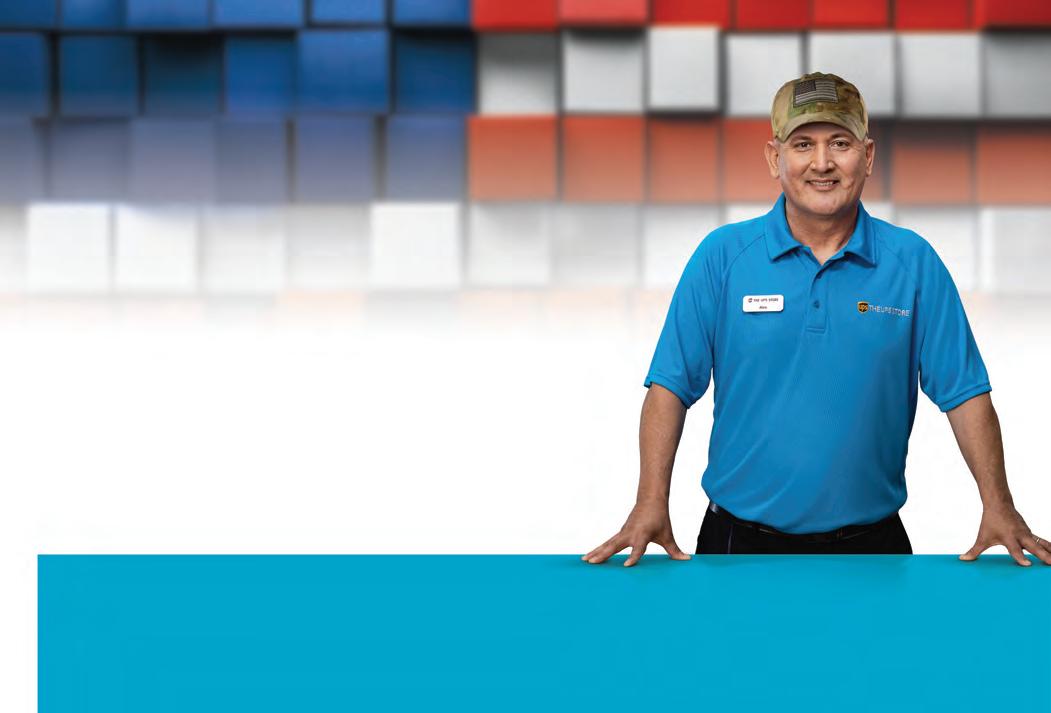







There are successful franchise businesses in virtually every industry and category. This roundup will help you consider which type of business is right for you.


The Next Great American Bake Shop, expanding nationwide with iconic, elevated desserts and signature Midwestern Hospitality. With strong community connections and a proven model, we’re growing coast to coast, offering franchisees a chance to bring sweet traditions to new markets and thrive.
$2,371,122 Total Sales 2023* (Flagship)
Initial Investment: $266,650 – $656,500
Franchise Fee: $30,000
FUN Franchise with Dedicated Support
In a sea of white-walled concepts, Schmackary’s stands out by bringing back community hubs to the $300B dessert industry. As the next great American bake shop, we proudly embody the spirit of new Americana, blending tradition with elevated desserts and offering a modern twist on classics. After more than a decade of success in New York City, we’ve begun expanding coast to coast, bringing our signature Midwestern Hospitality to cities nationwide.
At Schmackary’s, your success is our priority. From the moment you sign the deal to running your shop, our founders provide hands-on training and continuous support. When you join us as a franchisee, you become part of a thriving community of passionate entrepreneurs, all driven by shared growth and success.

Schmackary’s is not your cookie-cutter bake shop. Our efficient, low-overhead model operates in minimal space without complex kitchen equipment. With 2023 introducing our perfected cookie ice cream infusions, along with world-famous cookies, catering, and specialty coffee, we offer multiple revenue streams that set franchisees up for success.
Famously featured in Hulu’s Only Murders in the Building and across pop culture’s premier outlets like The Tony Awards, Apple TV, The Today Show, GMA, USA Today, and Food Network, we’ve earned national recognition. Our partnerships with iconic brands such as Disney and Broadway productions further cement our place in the spotlight.
“We’re breaking the franchise mold with a fun and easy-to-learn model. Our numbers outshine most dessert concepts, and we’ve crafted a model that thrives in the toughest market—New York City. With our hands-on support and nationwide brand recognition, our franchisees don’t just compete—they lead.”
– Zach Schmahl, Founder & Jonny Polizzi, COO
Explore the opportunity. Contact Schmackarys or visit the URL below.


Lightbridge Academy is a leading educational childcare franchise. Supported by core values and cutting-edge technology, families experience peace of mind; generating long-term loyalty and driving future success. Franchisees benefit from the ongoing training and unparalleled support needed to make a positive impact in their own communities
Lightbridge Academy is The Solution for Working Families,® offering a unique and rewarding opportunity for individuals interested in owning a high-quality educational childcare franchise. With over 25 years of experience, Lightbridge Academy has grown into a trusted and recognized brand, offering exceptional year-round early education programs for children from 6 weeks to Pre-K, along with summer camp and back-up care.
With over 150 centers open or in development, Lightbridge Academy goes beyond traditional child care by taking a forward thinking approach. The proprietary Seedlings Early Childhood Curriculum® embraces every moment as an opportunity to unlock children’s academic, social, and emotional potential. The brand’s core values and Circle of Care philosophy brings families, educators, franchise owners, and entire communities

together to support and enrich the health, well-being, and education of children.
The Lightbridge Promise, extends their commitment well beyond early education. setting the gold standard in child care for cleanliness, health, and safety. This commitment includes the use of stateof-the-art technology such as facial recognition and advanced air purification and filtration systems. With flexible programs, extended hours, and cuttingedge communication technology, families enjoy peace of mind, generating long-term loyalty and driving future success.
Franchisees benefit from comprehensive training and ongoing support, including assistance with site selection, construction, marketing, and operations. The unparalleled body of knowledge, insight, and guidance provided empower franchisees to successfully establish Lightbridge Academy
in their own communities. Lightbridge Academy offers a fulfilling opportunity to own a purpose-driven business and be part of a supportive network dedicated to excellence in early childhood education. If you’re passionate about making a difference in the lives of children and families while building a legacy of your own, join Lightbridge Academy.


PuroClean is a leading franchise in property damage restoration, specializing in water, fire, mold, and biohazard cleanup. With a network nearing 500 franchise offices across the U.S. and Canada, PuroClean is committed to providing excellent service to its customers and offering valuable opportunities to its Franchise Owners.
1 in 7 PuroClean Franchise Owners are Veterans
PuroClean is proud to introduce the PuroClean Veterans Forum, also known as the “PuroVet Forum,” a key initiative aimed at strengthening the existing PuroVet program. The PuroVet program offers U.S. military veterans a 25% discount on the initial franchise fee, recognizing their service and facilitating their transition to business ownership with PuroClean. This forum will serve as a vital platform for veteran Franchise Owners and team members, providing an open space for communication and support.
The PuroVet Forum will launch in November 2024 led by President & COO Steve White, U.S. Army veteran. Regular meetings and active collaboration are central to the PuroVet Forum, ensuring its structure continuously adapts to meet the needs of its members. These regular virtual meetings will provide veterans with an opportunity to discuss common challenges, share best practices, and receive targeted support from PuroClean leadership and fellow veteran Franchise Owners.

Recession-resistant business opportunity
25% initial franchise fee discount to qualified veterans
Proven system backed by training and support
“Veterans bring discipline, leadership, adaptability, and a missionfocused mindset—all crucial in the fast-paced, high-stakes world of disaster restoration,” said Tim Courtney, Vice President of Franchise Development. “To veterans considering PuroClean: Your military training has prepared you well for this industry. Leverage your skills, embrace the support system, and approach this new mission with the same dedication you showed in service.”
The PuroVet Forum will serve as the veterans’ voice within PuroClean, addressing various important topics that impact veteran Franchise Owners and their teams. Discussions will focus on mentoring, networking, business development, professional growth, emotional and social support, resource sharing, and advocacy, fostering stronger connections and deeper engagement across the veteran community.
PuroClean thanks you for your service! To find out more about PuroClean’s PuroVet opportunity, contact us today and take the first step to your next rewarding career.
by TRACY STAPP HEROLD

Tin the year to come? To answer that question, we consider what’s trending in the world at large, what types of businesses we’re seeing launch new franchise programs, which types of existing franchises are experiencing growth, and more. All of those factors, along with our 40-plus years of experience covering the franchise industry, help us to come up with our annual list of the 10 categories we think have the most potential to thrive in the year ahead.
This year, we’ve chosen some food categories, as we always do—but specifically, we’ve zeroed in on categories that appeal to both franchisees and customers who are trying to keep costs down: Beverages, Chicken, and Desserts. Care is also a major theme in this year’s list, from Childcare to Senior Care, along with Mental Health and Autism Services. Pets also makes an appearance; it’s one of the longest-running categories on this list, consistently fueled by people’s love of (and willingness to spend on) furry friends. Rounding out this year’s list are Children’s Fitness, Home Improvement, and another frequently included category thanks to its resilient nature, Restoration.
The following pages contain information on more than 400 franchises within these trending categories, from established brands to brand-new ones. Inclusion on the list is not intended as a recommendation of any particular franchise. It’s always vital to do your own careful research before investing in an opportunity. Read the company’s legal documents, consult with an attorney and an accountant, and talk to existing and former franchisees to find out whether the brand is right for you.
Restaurants serving up coffees, teas, juices, smoothies, and other beverages continue to be some of the fastest-growing in the franchise industry, thanks to menus filled with items that generally require less equipment, are easier to prepare, and can often be more profitable than more foodfocused franchises.
A&W Restaurants
Root beer, burgers, hot dogs, chicken, sides, ice cream
STARTUP COST
$287.4K-$1.6M
TOTAL UNITS
(Franchised / Co.-Owned) 863/2
Aroma Joe’s Coffee, espresso, tea, energy drinks, baked goods
STARTUP COST
$586.6K-$1.9M
TOTAL UNITS
(Franchised / Co.-Owned) 114/0
Bad Ass Coffee of Hawaii
Hawaiian coffees, coffee blends, teas, blended drinks, food
STARTUP COST
$514.2K-$980.5K
TOTAL UNITS
(Franchised / Co.-Owned) 31/1
Bambu
Asian dessert drinks, Vietnamese coffee drinks, boba tea, fruit tea, smoothies
STARTUP COST
$159K-$328K
TOTAL UNITS
(Franchised / Co.-Owned) 65/0
Beans & Brews
Coffee, tea, specialty drinks, food
STARTUP COST
$455.5K-$766.5K
TOTAL UNITS
(Franchised / Co.-Owned) 51/28
Beyond Juicery + Eatery
Smoothies, juices, smoothie bowls, wraps, salads, soups
STARTUP COST
$416.2K-$532.2K
TOTAL UNITS
(Franchised / Co.-Owned) 44/3
Biggby Coffee
Specialty coffee, tea, smoothies, energy drinks, baked goods, sandwiches
STARTUP COST
$328K-$792.8K
TOTAL UNITS
(Franchised / Co.-Owned) 405/0
Boba Nation
Bubble tea and other beverages
STARTUP COST
$350K-$495.5K
TOTAL UNITS
(Franchised / Co.-Owned) 1/3
Brass Tap
Craft-beer bars
STARTUP COST
$786.95K-$1.2M
TOTAL UNITS
(Franchised / Co.-Owned) 48/1
Caffe Aronne
Mobile coffee bars and kiosks
STARTUP COST
$98.4K-$267.5K
TOTAL UNITS
(Franchised / Co.-Owned) 0/5
Chatime
Coffee and tea
STARTUP COST
$208.6K-$493.9K
TOTAL UNITS
(Franchised / Co.-Owned) 1,309/28
Clean Juice
Organic juices, smoothies, acai bowls, wraps, sandwiches, salads, toasts
STARTUP COST
$286K-$542.7K
TOTAL UNITS
(Franchised / Co.-Owned) 78/0
Dunkin’
Coffee, doughnuts, baked goods
STARTUP COST
$435.5K-$1.8M
TOTAL UNITS
(Franchised / Co.-Owned) 13,758/32
Dunn Brothers
Coffee
Coffee, baked goods, sandwiches, wraps, desserts
STARTUP COST
$539.6K-$808.96K
TOTAL UNITS
(Franchised / Co.-Owned) 49/3
Ellianos Coffee
Specialty coffee and smoothies
STARTUP COST
$634.5K-$946.5K
TOTAL UNITS
(Franchised / Co.-Owned) 51/0
Fiiz Drinks
Mixed sodas and snacks
STARTUP COST
$232K-$497K
TOTAL UNITS
(Franchised / Co.-Owned) 62/3
The Fresh Monkee Protein shakes
STARTUP COST
$155.2K-$317.2K
TOTAL UNITS
(Franchised / Co.-Owned) 6/4
Gong cha
Bubble tea
STARTUP COST
$174.5K-$619.5K
TOTAL UNITS
(Franchised / Co.-Owned) 1,505/497
The Good Pour Retail wine and spirits STARTUP COST
$350K-$2.3M
TOTAL UNITS
(Franchised / Co.-Owned) 3/3
Hoppin’
Self-pour beer, wine, and cocktail taprooms
STARTUP COST
$1.1M-$1.97M
TOTAL UNITS
(Franchised / Co.-Owned) 2/2
HTeaO
Iced tea and coffee STARTUP COST
$259.9K-$1.98M
TOTAL UNITS
(Franchised / Co.-Owned) 120/7
The Human Bean Specialty coffee STARTUP COST
$562.1K-$1.3M
TOTAL UNITS
(Franchised / Co.-Owned) 160/12
Jamba
Smoothies, juices, and bowls
STARTUP COST
$242.95K-$1M
TOTAL UNITS
(Franchised / Co.-Owned) 789/1
Juice It Up!
Smoothies, raw juices, acai bowls
STARTUP COST
$247.1K-$660.4K
TOTAL UNITS
(Franchised / Co.-Owned) 89/1
Junbi
Matcha and tea STARTUP COST
$268.8K-$576.3K
TOTAL UNITS
(Franchised / Co.-Owned) 5/2
Kale Me Crazy Smoothies, juices, salads, wraps, toasts, bowls STARTUP COST
$324.8K-$642.8K
TOTAL UNITS
(Franchised / Co.-Owned) 20/3
Kung Fu Tea
Bubble tea
STARTUP COST
$169K-$378K
TOTAL UNITS
(Franchised / Co.-Owned) 405/2
Lucky Goat Coffee Company
Coffee
STARTUP COST
$195.5K-$496.9K
TOTAL UNITS
(Franchised / Co.-Owned) 0/5
Maha Juice Bar Juices, smoothies, acai bowls, avocado toast
STARTUP COST
$296K-$451K
TOTAL UNITS (Franchised / Co.-Owned) 0/1
Mariam Coffee Coffee
STARTUP COST
$149K-$283.5K
TOTAL UNITS (Franchised / Co.-Owned) 3/1
Mr Brews Taphouse Craft brew pubs STARTUP COST
$431.5K-$892K
TOTAL UNITS (Franchised / Co.-Owned) 9/5
Nekter Juice Bar
Juices, smoothies, acai bowls, nondairy ice cream
STARTUP COST
$246.6K-$640.8K
TOTAL UNITS (Franchised / Co.-Owned) 182/31
PJ’s Coffee of New Orleans
Coffee, tea, pastries, sandwiches STARTUP COST
$459K-$1.2M
TOTAL UNITS (Franchised / Co.-Owned) 180/0
Planet Smoothie Smoothies and snacks
STARTUP COST
$195.7K-$461.5K
TOTAL UNITS (Franchised / Co.-Owned) 163/0
Pure Green
Smoothies, cold-pressed juices, acai and pitaya bowls STARTUP COST
$177.5K-$446.9K
TOTAL UNITS (Franchised / Co.-Owned) 46/9
Robeks Fresh Juices & Smoothies
Juices, smoothies, bowls STARTUP COST
$325.4K-$505.7K
TOTAL UNITS (Franchised / Co.-Owned) 100/3
Scooter’s Coffee Coffee, espresso, smoothies, pastries, breakfast items
STARTUP COST
$894.5K-$1.4M
TOTAL UNITS (Franchised / Co.-Owned) 776/24
Sip Fresh Juices, smoothies, fruit bowls, teas
STARTUP COST
$233.7K-$420.8K
TOTAL UNITS
(Franchised / Co.-Owned) 1/3
Smoothie Factory + Kitchen
Smoothies, juices, nutritional supplements, sandwiches, salads, wraps, toasts
STARTUP COST
$364.5K-$548K
TOTAL UNITS (Franchised / Co.-Owned) 52/1
Smoothie King Smoothies and smoothie bowls
STARTUP COST
$320.6K-$1.3M
TOTAL UNITS (Franchised / Co.-Owned) 1,212/65
Tapioca Express Tea and snow-bubble beverages, snacks
STARTUP COST
$147K-$556.8K
TOTAL UNITS (Franchised / Co.-Owned) 21/1
Tapster Self-pour beer bars
STARTUP COST
$229.2K-$1.3M
TOTAL UNITS (Franchised / Co.-Owned) 1/4
Tapville Social Self-service beer taproom restaurants/kiosks/mobile units
STARTUP COST
$147.8K-$2.1M
TOTAL UNITS (Franchised / Co.-Owned) 29/2
TeaCupFuls
Boba tea
STARTUP COST
$157.3K-$302.5K
TOTAL UNITS
(Franchised / Co.-Owned) 1/4
ThirsTea
Bubble and milk tea, smoothies, milkshakes
STARTUP COST
$182.6K-$261.2K
TOTAL UNITS
(Franchised / Co.-Owned) 1/2
Travelin’ Tom’s Coffee Coffee and beverages
STARTUP COST
$201.6K-$259.6K
TOTAL UNITS
(Franchised / Co.-Owned) 139/3
Tropical Smoothie Cafe
Smoothies, salads, wraps, sandwiches, flatbreads STARTUP COST
$300K-$720.5K
TOTAL UNITS
(Franchised / Co.-Owned) 1,463/1
Vara Juice
Fresh juices, smoothies, and fruit bowls
STARTUP COST
$251.9K-$647.5K
TOTAL UNITS
(Franchised / Co.-Owned) 10/0
Voodoo Brewing Co.
Craft brew pubs
STARTUP COST
$481.5K-$1.5M
TOTAL UNITS (Franchised / Co.-Owned) 22/5
WineStyles Tasting Station
Wine bar, wine and craft beer retail sales, food, events, wine club memberships
STARTUP COST
$298K-$609.5K
TOTAL UNITS
(Franchised / Co.-Owned) 10/1
Ziggi’s Coffee Coffee, specialty drinks, energy drinks, breakfast and lunch items
STARTUP COST
$526.5K-$2M
TOTAL UNITS
(Franchised / Co.-Owned) 87/7
Chicken is a facet of the food franchise world that continues to shine year after year. It helps that everyone’s favorite white meat is usually cheaper than many other proteins, is perceived as healthier by customers, and can be prepared in many different (and tasty) ways, as the companies on our list demonstrate.
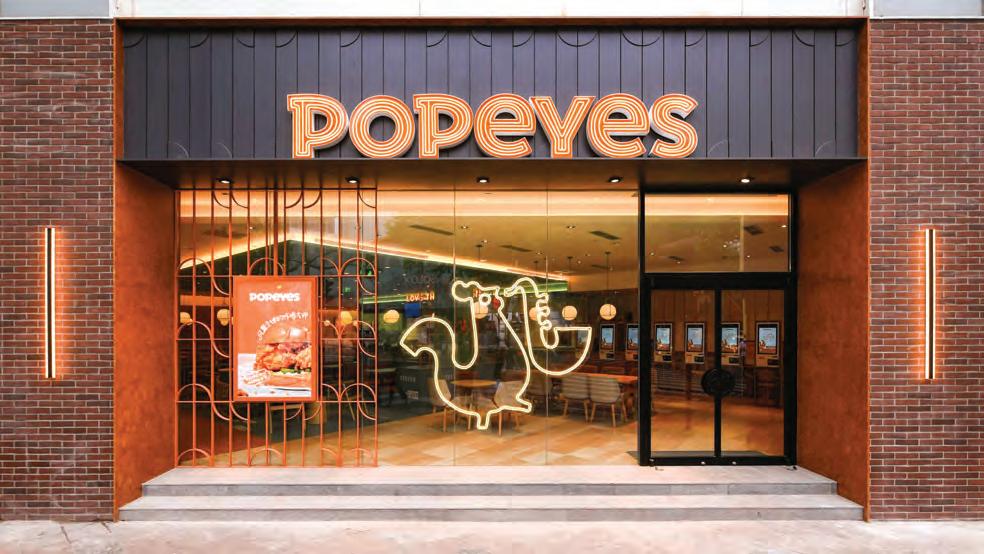
Angry Chickz
Nashville hot chicken
STARTUP COST
$418K-$1M
TOTAL UNITS
(Franchised / Co.-Owned) 0/26
Big Chicken
Chicken sandwiches and tenders, salads, sides, desserts
STARTUP COST
$681.5K-$1.5M
TOTAL UNITS
(Franchised / Co.-Owned) 25/2
Bojangles
Chicken and biscuits
STARTUP COST
$720.2K-$3.8M
TOTAL UNITS
(Franchised / Co.-Owned) 528/285
Bonchon Korean Fried Chicken
Korean fried chicken STARTUP COST
$190.9K-$1.2M
TOTAL UNITS
(Franchised / Co.-Owned) 443/5
Buffalo’s Cafe
Chicken wings and tenders, steaks, burgers, salads
STARTUP COST
$992.3K-$3.1M
TOTAL UNITS
(Franchised / Co.-Owned) 12/0
Buffalo Wild Wings
Wings, bar food, alcohol
STARTUP COST
$2.9M-$4.8M
TOTAL UNITS
(Franchised / Co.-Owned) 598/652
Chester’s
Fried chicken STARTUP COST
$27.5K-$296.5K
TOTAL UNITS
(Franchised / Co.-Owned) 1,062/0
Chicken Salad
Chick
Chicken salads, soups, sides
STARTUP COST
$747K-$994.5K
TOTAL UNITS
(Franchised / Co.-Owned) 190/78
Chick N Max
Chicken wings, tenders, and sandwiches
STARTUP COST
$631.5K-$1.98M
TOTAL UNITS
(Franchised / Co.-Owned) 4/3
Chunky Boss
Taiwanese fried chicken STARTUP COST
$318K-$741.5K
TOTAL UNITS
(Franchised / Co.-Owned) 0/1
Church’s Texas Chicken
Chicken STARTUP COST
$648.9K-$1.9M
TOTAL UNITS
(Franchised / Co.-Owned) 1,372/160
Daddy’s Chicken Shack
Chicken sandwiches and fingers, breakfast, sides STARTUP COST
$725.8K-$1.2M
TOTAL UNITS
(Franchised / Co.-Owned) 5/1
Dave’s Hot Chicken
Nashville-style hot chicken
STARTUP COST
$619.8K-$1.96M
TOTAL UNITS
(Franchised / Co.-Owned) 205/6
Detroit Wing Company
Chicken wings
STARTUP COST
$483.5K-$649.96K
TOTAL UNITS
(Franchised / Co.-Owned) 19/3
East Coast Wings + Grill
Wings, burgers, craft beer STARTUP COST
$408.4K-$1.2M
TOTAL UNITS
(Franchised / Co.-Owned) 29/5
El Pollo Loco
Grilled chicken and Mexican food
STARTUP COST
$779.8K-$2.7M
TOTAL UNITS (Franchised / Co.-Owned) 334/171
Golden Chick
Chicken
STARTUP COST
$810.3K-$1.9M
TOTAL UNITS (Franchised / Co.-Owned) 198/33
Hangry Joe’s Hot Chicken & Wings
Hot chicken sandwiches and wings STARTUP COST
$305.5K-$518K
TOTAL UNITS
(Franchised / Co.-Owned) 78/0
Hurricane Grill & Wings
Chicken wings, tenders, sandwiches, salads
STARTUP COST
$854.2K-$2.97M
TOTAL UNITS
(Franchised / Co.-Owned) 41/0
KFC
Chicken STARTUP COST
$1.9M-$3.8M
TOTAL UNITS
(Franchised / Co.-Owned) 30,246/434
Layne’s Chicken Fingers Chicken tenders STARTUP COST
$446.5K-$1M
TOTAL UNITS (Franchised / Co.-Owned) 13/4
Lee’s Famous Recipe Chicken Chicken, biscuits, sides STARTUP COST
$567.5K-$2M
TOTAL UNITS (Franchised / Co.-Owned) 97/33
Popeyes Louisiana Kitchen Fried chicken, seafood, biscuits STARTUP COST
$471K-$3.9M
TOTAL UNITS (Franchised / Co.-Owned) 4,050/41
Rise Southern Biscuits & Righteous Chicken Biscuits and chicken
STARTUP COST
$634.1K-$827K
TOTAL UNITS (Franchised / Co.-Owned) 17/6
Rooster & Rice Thai chicken rice STARTUP COST
$335.6K-$530.3K
TOTAL UNITS
(Franchised / Co.-Owned) 1/7

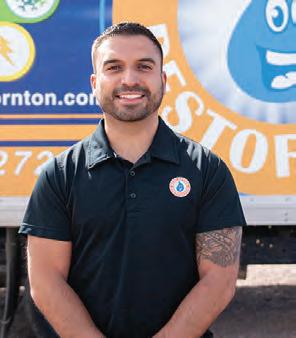

RESTORATION FRANCHISE IN AMERICA RESTORATION FRANCHISE IN AMERICA

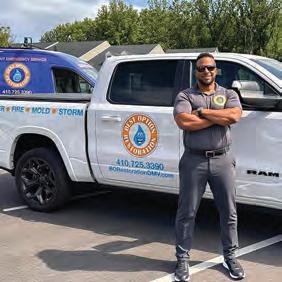

Roots Chicken
Shak
Duck-fat-fried chicken wings, tenders, and sandwiches
STARTUP COST
$393.2K-$748.6K
TOTAL UNITS
(Franchised / Co.-Owned) 0/2
Slim Chickens
Chicken tenders, chicken wings, salads, sandwiches, wraps
STARTUP COST
$1.5M-$4.4M
TOTAL UNITS
(Franchised / Co.-Owned) 240/11
Starbird
Chicken tenders, salads, sandwiches, tacos, wings
STARTUP COST
$1.1M-$1.5M
TOTAL UNITS
(Franchised / Co.-Owned) 0/15
VooDoo Wing Company
Wings, salads, sandwiches, sides, desserts
STARTUP COST
$207.8K-$475.95K
TOTAL UNITS
(Franchised / Co.-Owned) 4/5
Wing It On!
Chicken wings, sandwiches, and tenders
STARTUP COST
$215.5K-$445K
TOTAL UNITS
(Franchised / Co.-Owned) 9/2
Wing Snob
Chicken wings
STARTUP COST
$330.2K-$599.5K
TOTAL UNITS
(Franchised / Co.-Owned) 43/1
Wingstop
Chicken wings, tenders, and sandwiches, fries, sides
STARTUP COST
$259.4K-$912.1K
TOTAL UNITS
(Franchised / Co.-Owned) 2,300/52
Zaxby’s
Chicken wings, fingers, sandwiches, and salads
STARTUP COST
$1.4M-$3.3M
TOTAL UNITS (Franchised / Co.-Owned) 815/145
Despite having higher average startup costs than many other franchises in the children’s space, childcare continues to have some of the most robust growth in the sector. More and more families require childcare, and being part of a trusted brand name in the industry gives franchise owners a leg up.
A Place to Grow
Childcare
STARTUP COST
$56.96K-$315.4K
TOTAL UNITS
(Franchised / Co.-Owned) 3/1
Building Kidz School
Preschool/educational
childcare
STARTUP COST
$266K-$1.3M
TOTAL UNITS
(Franchised / Co.-Owned) 42/7
Celebree School
Early childhood education and childcare
STARTUP COST
$837.6K-$3M
TOTAL UNITS (Franchised / Co.-Owned) 26/26
Children’s
Lighthouse
Childcare
STARTUP COST
$1.1M-$8.9M
TOTAL UNITS
(Franchised / Co.-Owned) 72/0
Creative World School
Early childhood education and childcare for ages 6 weeks to 12 years
STARTUP COST
$4.8M-$9.2M
TOTAL UNITS
(Franchised / Co.-Owned) 24/5
Ducklings Early Learning Center
Early education and childcare
STARTUP COST
$894.4K-$2.1M
TOTAL UNITS
(Franchised / Co.-Owned) 11/3
The Goddard School
Preschool/educational
childcare
STARTUP COST
$902.5K-$8.5M
TOTAL UNITS
(Franchised / Co.-Owned) 636/0
Ivybrook Academy Preschool
STARTUP COST
$461.4K-$798K
TOTAL UNITS
(Franchised / Co.-Owned) 37/1
Ivy Kids Early Learning Center
Childcare and early learning
STARTUP COST
$687.5K-$9.4M
TOTAL UNITS
(Franchised / Co.-Owned) 15/4
Kiddie Academy
Educational childcare STARTUP COST
$405K-$7.3M
TOTAL UNITS
(Franchised / Co.-Owned) 336/1
KidsPark Drop-in childcare, preschool, party/play space
STARTUP COST
$293.3K-$516.5K
TOTAL UNITS
(Franchised / Co.-Owned) 21/1
KLA Schools
Preschool/childcare STARTUP COST
$1.1M-$5.9M
TOTAL UNITS
(Franchised / Co.-Owned) 18/7
The Learning Experience Academy of Early Education
Preschool/educational childcare
STARTUP COST
$685.8K-$5.6M
TOTAL UNITS
(Franchised / Co.-Owned) 360/39
Let Mommy Sleep
In-home newborn and postpartum care
STARTUP COST
$38.7K-$57.4K
TOTAL UNITS
(Franchised / Co.-Owned) 13/0
Lightbridge Academy
Early childhood education and childcare STARTUP COST
$1.1M-$4.9M
TOTAL UNITS
(Franchised / Co.-Owned) 59/19
Marigold Academy Childcare STARTUP COST
$745.8K-$939.6K
TOTAL UNITS
(Franchised / Co.-Owned) 0/2
Montessori Kids Universe
Educational childcare STARTUP COST
$562.2K-$1.1M
TOTAL UNITS
(Franchised / Co.-Owned) 19/0
Primrose Schools
Educational childcare STARTUP COST
$742.9K-$8.6M
TOTAL UNITS
(Franchised / Co.-Owned) 513/0
Tierra Encantada Spanish immersion early education STARTUP COST
$1.5M-$3.1M
TOTAL UNITS
(Franchised / Co.-Owned) 2/10
Parents want their kids to stay active, healthy, and involved— and to meet that demand, you’ll find a multitude of franchise brands offering both mobile programs and brick-andmortar facilities to keep kids fit and entertained with dance instruction, swimming lessons, and almost every sport imaginable.
Amazing Athletes
Educational sports programs
STARTUP COST
$75K-$108.5K
TOTAL UNITS
(Franchised / Co.-Owned) 150/7
Apex Leadership Co.
Elementary-school fundraising and fitness programs
STARTUP COST
$81K-$117.7K
TOTAL UNITS
(Franchised / Co.-Owned) 116/10
Aqua-Tots Swim Schools
Swimming lessons STARTUP COST
$1.6M-$2.6M
TOTAL UNITS
(Franchised / Co.-Owned) 160/1
British Swim School
Swimming lessons for ages 3 months and older
STARTUP COST
$108.9K-$145.2K
TOTAL UNITS
(Franchised / Co.-Owned) 181/0
D-BAT Academies
Indoor baseball and softball training, batting cages, merchandise
STARTUP COST
$536.5K-$1M
TOTAL UNITS (Franchised / Co.-Owned) 163/0
Destination Athlete Equipment, apparel, fundraising, and performance solutions for youth, high school, and college athletic teams
STARTUP COST
$28.3K-$93.6K
TOTAL UNITS
(Franchised / Co.-Owned) 259/0
Ferox Ninja Park Athletic and entertainment activities
STARTUP COST
$2.1M-$3.4M
TOTAL UNITS (Franchised / Co.-Owned) 0/1
Freckled Frog Dance Studio
Children’s dance lessons
STARTUP COST
$49.6K-$115.4K
TOTAL UNITS (Franchised / Co.-Owned) 0/3
Goldfish Swim School
Infant and child swimming lessons
STARTUP COST
$1.7M-$3.7M
TOTAL UNITS (Franchised / Co.-Owned) 167/4
The Gravity Vault
Indoor rock-climbing gyms STARTUP COST
$1.2M-$3.3M
TOTAL UNITS (Franchised / Co.-Owned) 8/4
Hudson Valley Swim
Swimming and water safety lessons for all ages
STARTUP COST
$98.3K-$131.5K
TOTAL UNITS (Franchised / Co.-Owned) 6/8
i9 Sports
Youth sports leagues, camps, and clinics
STARTUP COST
$59.9K-$69.9K
TOTAL UNITS (Franchised / Co.-Owned) 250/0




































































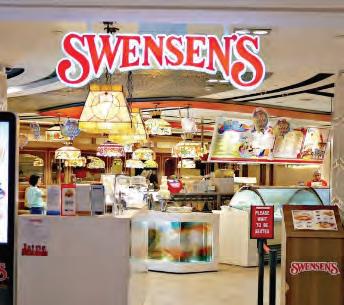







































































































































































Silver Bear Swim

Kidokinetics
Mobile youth sports and fitness programs
STARTUP COST
$110.5K-$144.7K
TOTAL UNITS
(Franchised / Co.-Owned) 151/6
KidStrong
Physical fitness, leadership, and confidence-building training for children
STARTUP COST
$342.7K-$691.2K
TOTAL UNITS
(Franchised / Co.-Owned) 118/8
Kinderdance
Children’s dance, gymnastics, movement, fitness, and yoga programs
STARTUP COST
$24.6K-$59K
TOTAL UNITS
(Franchised / Co.-Owned) 221/4
LiggettVille
Indoor ropes courses, zip rails, and climbing walls
STARTUP COST
$2M-$3.9M
TOTAL UNITS
(Franchised / Co.-Owned) 0/4
The Little Gym Child-development/fitness programs
STARTUP COST
$506.2K-$673.2K
TOTAL UNITS
(Franchised / Co.-Owned) 341/1
Little Kickers
Soccer classes for children
18 months to 7 years old
STARTUP COST
$38.1K-$53.5K
TOTAL UNITS
(Franchised / Co.-Owned) 354/0
Monster Mini Golf
Indoor mini golf and family entertainment centers
STARTUP COST
$793.5K-$956K
TOTAL UNITS
(Franchised / Co.-Owned) 28/2
National Academy of Athletics
Youth sports camps
STARTUP COST
$44.3K-$63.3K
TOTAL UNITS (Franchised / Co.-Owned) 5/13
NinjaTrix
Children’s obstacle courses
STARTUP COST
$224.6K-$381.5K
TOTAL UNITS
(Franchised / Co.-Owned) 0/1
N Zone Sports
Sports leagues and preschool programs for ages 3 to 16
STARTUP COST
$52.3K-$71.95K
TOTAL UNITS
(Franchised / Co.-Owned) 56/0
Overtime Athletics
Youth sports programs
STARTUP COST
$46.4K-$58.5K
TOTAL UNITS
(Franchised / Co.-Owned) 50/0
SafeSplash Swim School
Child and adult swimming lessons, parties, summer camps
STARTUP COST
$58.5K-$1.9M
TOTAL UNITS
(Franchised / Co.-Owned) 108/26
Scary Strokes
Indoor mini golf
STARTUP COST
$439.2K-$1.1M
TOTAL UNITS
(Franchised / Co.-Owned) 0/1
Shoot 360
Basketball training facilities
STARTUP COST
$637K-$2.2M
TOTAL UNITS
(Franchised / Co.-Owned) 42/2
Sportball
Sports enrichment programs for ages 16 months to 12 years
STARTUP COST
$62K-$81K
TOTAL UNITS
(Franchised / Co.-Owned) 31/2
The Starz Program Dance/fitness enrichment classes
STARTUP COST
$27.2K-$95.4K
TOTAL UNITS
(Franchised / Co.-Owned) 3/2
TGA Premier Sports
Golf, tennis, pickleball, and athletic enrichment programs
STARTUP COST
$77.6K-$116K
TOTAL UNITS
(Franchised / Co.-Owned) 54/1
Tippi Toes
Children’s dance classes
STARTUP COST
Family entertainment centers
STARTUP COST
$1.5M-$4.3M
TOTAL UNITS
(Franchised / Co.-Owned) 0/5
Soccer Shots
Soccer programs for ages 2 to 8
STARTUP COST
$42.95K-$54.3K
TOTAL UNITS
(Franchised / Co.-Owned) 303/23
Soccer Stars
Youth soccer programs
STARTUP COST
$73.3K-$106.3K
TOTAL UNITS
(Franchised / Co.-Owned) 127/9
Special Strong
Adaptive fitness for individuals with physical, mental, and cognitive challenges
STARTUP COST
$79K-$96.2K
TOTAL UNITS
(Franchised / Co.-Owned) 8/1
$67.1K-$83.5K
TOTAL UNITS
(Franchised / Co.-Owned) 69/2
Tutu School
Children’s ballet schools
STARTUP COST
$103.9K-$178.3K
TOTAL UNITS
(Franchised / Co.-Owned) 95/4
Twinkle Star Dance Academy
Dance studios for ages 2 to teens
STARTUP COST
$111.6K-$174.9K
TOTAL UNITS
(Franchised / Co.-Owned) 3/4
urSwim
Swim instruction, pool safety education, lifeguard staffing, and pool management services
STARTUP COST
$76.3K-$106.9K
TOTAL UNITS
(Franchised / Co.-Owned) 1/2
USA Ninja Challenge
Youth fitness programs
STARTUP COST
$342.7K-$567.9K
TOTAL UNITS
(Franchised / Co.-Owned) 31/0
Dessert franchises are hot for two big reasons. First, just like beveragefocused brands, their limited menus generally make them easy to operate. Also, when consumers cut back on spending, they often don’t dine out for full meals— but they still want the indulgence of a sweet treat now and then.
Acai Express Superfood Bowls Acai bowls, smoothies, juices, toast STARTUP COST
$158.4K-$431K
TOTAL UNITS (Franchised / Co.-Owned) 54/10
Angelina Italian Bakery
Bakery, pizza, coffee, desserts
STARTUP COST
$439.8K-$1.7M
TOTAL UNITS (Franchised / Co.-Owned) 2/3
Auntie Anne’s Soft pretzels
STARTUP COST
$149.6K-$624.8K
TOTAL UNITS (Franchised / Co.-Owned) 2,006/11
Bahia Bowls Acai Cafe
Acai and other fruit bowls, smoothies, salads, wraps, toast
STARTUP COST
$293.5K-$485.9K
TOTAL UNITS (Franchised / Co.-Owned) 15/3
Bang Cookies Cookies
STARTUP COST
$235.1K-$390.8K
TOTAL UNITS (Franchised / Co.-Owned) 1/4
Re-Bath recently made Entrepreneur Magazine’s “hot franchises to own” list. Our franchisees enjoy the reputation of the nation’s largest bathroom remodeler and a complete, in-place system of operational and sales support.
Re-Bath wants to help motivated entrepreneurs like you build meaningful businesses and join our a growing, thriving brand.













































































































Baskin-Robbins
Ice cream, frozen beverages
STARTUP COST
$307.4K-$657.9K
TOTAL UNITS
(Franchised / Co.-Owned) 7,755/0
Baya Bar
Acai, pitaya, and coconut bowls, smoothies, juices, avocado toast, coffee
STARTUP COST
$160.99K-$340.5K
TOTAL UNITS
(Franchised / Co.-Owned) 27/2
Ben & Jerry’s
Ice cream, frozen yogurt, nondairy frozen desserts, sorbet
STARTUP COST
$155.9K-$549.3K
TOTAL UNITS
(Franchised / Co.-Owned) 550/8
Bowled Healthy Food Company
Acai bowls and smoothies
STARTUP COST
$116.5K-$273K
TOTAL UNITS
(Franchised / Co.-Owned) 8/1
Breadsmith
European-style breads
STARTUP COST
$330.2K-$506.3K
TOTAL UNITS
(Franchised / Co.-Owned) 27/4
Bruster’s Real Ice Cream
Ice cream, frozen yogurt, ices, sherbets
STARTUP COST
$320.5K-$2.6M
TOTAL UNITS (Franchised / Co.-Owned) 210/1
Carvel
Ice cream, ice cream cakes STARTUP COST
$379K-$590.9K
TOTAL UNITS
(Franchised / Co.-Owned) 362/0
Chill-N Nitrogen Ice Cream
Ice cream
STARTUP COST
$471.99K-$630.5K
TOTAL UNITS (Franchised / Co.-Owned) 9/6
Cinnabon
Cinnamon rolls, baked goods, coffee
STARTUP COST
$254.8K-$674.4K
TOTAL UNITS
(Franchised / Co.-Owned) 1,956/28
Cold Stone Creamery
Ice cream, sorbet, ice cream cakes, shakes STARTUP COST
$322.7K-$627.8K
TOTAL UNITS
(Franchised / Co.-Owned) 1,373/1
Crispy Cones
European-style ice cream and fruit cones
STARTUP COST
$284.8K-$543K
TOTAL UNITS
(Franchised / Co.-Owned) 4/2
Culver’s
Frozen custard, specialty burgers
STARTUP COST
$2.8M-$6.9M
TOTAL UNITS
(Franchised / Co.-Owned) 971/7
Dairy Queen
Soft-serve ice cream, burgers, chicken STARTUP COST
$1.5M-$2.5M
TOTAL UNITS
(Franchised / Co.-Owned) 7,395/2
DonutNV
Mini doughnuts, juices, hot and iced coffee
STARTUP COST
$189.6K-$272.9K
TOTAL UNITS
(Franchised / Co.-Owned) 135/1
Doughnuttery
Mini doughnuts
STARTUP COST
$175.4K-$321.7K
TOTAL UNITS
(Franchised / Co.-Owned) 2/4
Duck Donuts
Doughnuts and coffee
STARTUP COST
$444.4K-$653.3K
TOTAL UNITS
(Franchised / Co.-Owned) 156/1
Eiffel Waffle
Ice cream and desserts
STARTUP COST
$264.9K-$387.7K
TOTAL UNITS
(Franchised / Co.-Owned) 0/6
Everbowl
Health food bowls
STARTUP COST
$213.5K-$475.8K
TOTAL UNITS
(Franchised / Co.-Owned) 72/19
Fluffy Fluffy
Souffle pancakes and desserts
STARTUP COST
$188.2K-$496.6K
TOTAL UNITS
(Franchised / Co.-Owned) 28/1
Fosters Freeze
Soft-serve ice cream, burgers, sandwiches, hot dogs, fries
STARTUP COST
$178K-$1M
TOTAL UNITS
(Franchised / Co.-Owned) 61/0
Freddy’s Frozen
Custard & Steakburgers
Frozen custard, steakburgers, hot dogs
STARTUP COST
$897.8K-$2.8M
TOTAL UNITS
(Franchised / Co.-Owned) 497/34
The French Workshop
Bakery cafes
STARTUP COST
$1.5M-$2.2M
TOTAL UNITS
(Franchised / Co.-Owned) 0/4
Frios Gourmet Pops
Frozen pops
STARTUP COST
$66.5K-$95.5K
TOTAL UNITS
(Franchised / Co.-Owned) 113/1
Frutta Bowls
Acai, pitaya, and kale bowls, smoothies, toast, coffee
STARTUP COST
$388.8K-$506.8K
TOTAL UNITS (Franchised / Co.-Owned) 35/2
Goodness Bowls
Fruit bowls, smoothies, toast, salads, wraps STARTUP COST
$281K-$450.2K
TOTAL UNITS (Franchised / Co.-Owned) 0/2
Grain & Berry
Acai, pitaya, and spirulina bowls, smoothies, juices, yogurt, toast, plant-based flatbreads and quesadillas
STARTUP COST
$258K-$673.5K
TOTAL UNITS (Franchised / Co.-Owned) 18/2
Great American Cookies
Cookies, cookie cakes, brownies
STARTUP COST
$308.5K-$484.7K
TOTAL UNITS (Franchised / Co.-Owned) 412/0
Great Harvest
Bakery cafes STARTUP COST
$168.3K-$984.2K
TOTAL UNITS (Franchised / Co.-Owned) 159/0
Handel’s Homemade Ice Cream Ice cream STARTUP COST
$311K-$936K
TOTAL UNITS (Franchised / Co.-Owned) 136/6
Ice Cream Hut Ice cream STARTUP COST
$89.5K-$206K
TOTAL UNITS (Franchised / Co.-Owned) 3/3
Jars by Fabio Viviani
Desserts in a jar, coffee STARTUP COST
$208.95K-$644.95K
TOTAL UNITS (Franchised / Co.-Owned) 6/1
Jeremiah’s Italian Ice Italian ice, gelati, soft ice cream STARTUP COST
$350.6K-$721K
TOTAL UNITS (Franchised / Co.-Owned) 140/19
Kilwins Chocolates, fudge, ice cream STARTUP COST
$239.3K-$870.1K
TOTAL UNITS (Franchised / Co.-Owned) 163/4
King of Pops Ice pop carts STARTUP COST
$20.2K-$68.5K
TOTAL UNITS (Franchised / Co.-Owned) 54/2
Kolache Factory Kolaches, pastries, coffee STARTUP COST
$641.9K-$937.4K
TOTAL UNITS (Franchised / Co.-Owned) 30/30
Kona Ice Shaved-ice trucks STARTUP COST $173.4K-$222.1K
TOTAL UNITS (Franchised / Co.-Owned) 1,810/4
la Madeleine French bakeries and cafes STARTUP COST
$369.7K-$3.1M
TOTAL UNITS (Franchised / Co.-Owned) 64/26




























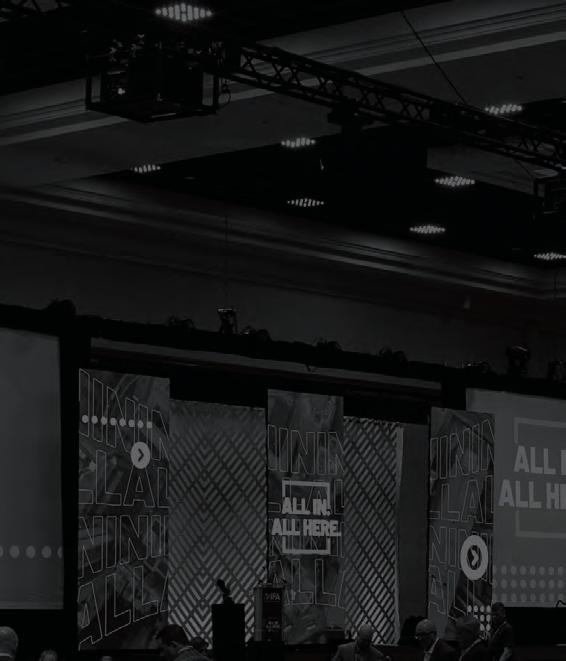





























Le Macaron French Pastries
Macarons, pastries, gelato, chocolates, candies, specialty coffee and tea
STARTUP COST
$154.2K-$454K
TOTAL UNITS
(Franchised / Co.-Owned) 59/5
Marble Slab Creamery
Ice cream
STARTUP COST
$303.5K-$476.7K
TOTAL UNITS
(Franchised / Co.-Owned) 392/0
MidnighTreats
Plant-based cookies and milk
STARTUP COST
$201.9K-$449K
TOTAL UNITS
(Franchised / Co.-Owned) 1/2
MilkShake Factory
Milkshakes, chocolates, caramels
STARTUP COST
$476.7K-$739.5K
TOTAL UNITS
(Franchised / Co.-Owned) 2/11
Morelia Gourmet Paletas
Gelato and sorbet bars
STARTUP COST
$98.1K-$360K
TOTAL UNITS
(Franchised / Co.-Owned) 13/3
Nautical Bowls
Acai bowls
STARTUP COST
$222.3K-$409.4K
TOTAL UNITS
(Franchised / Co.-Owned) 57/0
Negranti Creamery
Sheep’s milk ice cream
STARTUP COST
$248.3K-$475.7K
TOTAL UNITS
(Franchised / Co.-Owned) 0/5
Nothing Bundt Cakes
Bundt cakes and gifts
STARTUP COST
$585K-$1.1M
TOTAL UNITS (Franchised / Co.-Owned) 595/17
OddFellows Ice Cream Co.
Ice cream
STARTUP COST
$234.3K-$591K
TOTAL UNITS
(Franchised / Co.-Owned) 0/5
Orange Leaf Frozen Yogurt
Frozen yogurt, shakes, smoothies, cakes STARTUP COST
$387.5K-$640K
TOTAL UNITS
(Franchised / Co.-Owned) 62/0
The Original Rainbow Cone
Ice cream, ice cream cakes, doughnuts
STARTUP COST
$386.1K-$3.3M
TOTAL UNITS (Franchised / Co.-Owned) 3/20
Paciugo Gelato
Caffe
Gelato, coffee, pastries, smoothies, iced beverages, paninis, flatbreads STARTUP COST
$109.7K-$612.3K
TOTAL UNITS (Franchised / Co.-Owned) 22/0
Paris Baguette
Bakery cafes STARTUP COST
$718.1K-$1.8M
TOTAL UNITS (Franchised / Co.-Owned) 3,883/19
Pecan Jacks Ice cream and candy STARTUP COST
$387.4K-$597.7K
TOTAL UNITS
(Franchised / Co.-Owned) 0/3
Pelican’s SnoBalls
Shaved ice
STARTUP COST
$81.8K-$230.8K
TOTAL UNITS
(Franchised / Co.-Owned) 202/0
Peterbrooke
Chocolatier
Chocolates, candy, gelato, frozen yogurt, baked goods
STARTUP COST
$288.2K-$414.4K
TOTAL UNITS
(Franchised / Co.-Owned) 20/6
Playa Bowls
Acai, pitaya, coconut, chia pudding, and oatmeal bowls, smoothies, juices
STARTUP COST
$188.7K-$636.5K
TOTAL UNITS
(Franchised / Co.-Owned) 239/24
Press Waffle Co.
Belgian waffles, coffee, ice cream
STARTUP COST
$188.4K-$497.3K
TOTAL UNITS
(Franchised / Co.-Owned) 6/2
Pretzelmaker
Pretzels, lemonade
STARTUP COST
$302.5K-$583K
TOTAL UNITS
(Franchised / Co.-Owned)
199/0
Puffles
Hong Kong egg waffles and bubble tea
STARTUP COST
$144.9K-$360K
TOTAL UNITS
(Franchised / Co.-Owned) 0/3
Rainbow Snow
Shaved-ice trailers
STARTUP COST
$99.5K-$122.8K
TOTAL UNITS
(Franchised / Co.-Owned) 0/1
Randy’s Donuts
Doughnuts, breakfast sandwiches, croissants, coffee, tea, lemonades, milkshakes, boba drinks
STARTUP COST
$297K-$1.2M
TOTAL UNITS
(Franchised / Co.-Owned) 31/9
Red Mango Cafe & Juice Bar
Frozen yogurt, smoothies, juices, wraps, salads, flatbreads, toast
STARTUP COST
$378.5K-$620.5K
TOTAL UNITS
(Franchised / Co.-Owned) 57/0
Repicci’s Real Italian
Italian ice, gelato, sorbetto, hot chocolate, Italian coffees and teas, hoagies, pizza
STARTUP COST
$77.9K-$166.3K
TOTAL UNITS
(Franchised / Co.-Owned) 28/0
Rita’s Italian Ice & Frozen Custard
Italian ice and frozen custard STARTUP COST
$293.2K-$782.9K
TOTAL UNITS
(Franchised / Co.-Owned) 561/5
Rocket Fizz Soda Pop and Candy Shop
Candy, soda, and gift stores STARTUP COST
$124.9K-$271K
TOTAL UNITS
(Franchised / Co.-Owned) 98/0
Rocky Mountain Chocolate Factory Chocolates, confections
STARTUP COST
$267.1K-$824.9K
TOTAL UNITS
(Franchised / Co.-Owned) 146/2
Sambazon Acai Bowls
Acai bowls, smoothies, and superfoods
STARTUP COST
$380K-$630K
TOTAL UNITS
(Franchised / Co.-Owned) 0/6
Schmackary’s
Cookies and bakery STARTUP COST
$266.7K-$656.5K
TOTAL UNITS
(Franchised / Co.-Owned) 0/1
Shipley Do-Nuts Doughnuts, kolaches, pastries, coffee
STARTUP COST
$496.4K-$1M
TOTAL UNITS
(Franchised / Co.-Owned) 345/11
16 Handles
Self-serve frozen yogurt and ice cream STARTUP COST
$242.5K-$645K
TOTAL UNITS
(Franchised / Co.-Owned) 33/0
SoBol
Acai bowls and smoothies STARTUP COST
$195.6K-$453.2K
TOTAL UNITS
(Franchised / Co.-Owned) 65/2
Sub Zero Nitrogen Ice Cream
Ice cream, Italian ice, frozen yogurt, custard
STARTUP COST
$47.2K-$284K
TOTAL UNITS
(Franchised / Co.-Owned) 24/2
Sweet Paris
Creperie & Cafe
Crepes, waffles, salads, panini, milkshakes, coffee, alcohol
STARTUP COST
$928.1K-$1.5M
TOTAL UNITS
(Franchised / Co.-Owned) 10/7
The Sweet Spot
Ice cream, milkshakes, churros, funnel cakes, waffles, smoothies, coffee
STARTUP COST
$332.1K-$1.1M
TOTAL UNITS (Franchised / Co.-Owned) 0/2
Swensen’s
Ice cream parlors and restaurants
STARTUP COST
$222.99K-$993.1K
TOTAL UNITS
(Franchised / Co.-Owned) 457/0
Top This Chocolate
Made-to-order chocolate bars
STARTUP COST
$337.3K-$533.7K
TOTAL UNITS
(Franchised / Co.-Owned) 0/1
Totally Nutz Cinnamon-glazed almonds, pecans, and cashews
STARTUP COST
$66.4K-$229K
TOTAL UNITS (Franchised / Co.-Owned) 59/18
Tous les Jours
Bakery cafes
STARTUP COST
$718.2K-$948.9K
TOTAL UNITS (Franchised / Co.-Owned) 1,630/163
Vicky Bakery
Baked goods, breads, pastries, sandwiches, coffee
STARTUP COST
$626.7K-$1.2M
TOTAL UNITS
(Franchised / Co.-Owned) 11/10
Vitality Bowls
Acai bowls, smoothies, juices, wraps, salads, grain bowls, panini
STARTUP COST
$208.8K-$683.1K
TOTAL UNITS
(Franchised / Co.-Owned) 63/6
Wetzel’s Pretzels
Soft pretzels, lemonade, hot dogs
STARTUP COST
$178.5K-$689.8K
TOTAL UNITS
(Franchised / Co.-Owned) 388/38
Yogen Fruz
Frozen yogurt, soft-serve ice cream
STARTUP COST
$285.1K-$754.7K
TOTAL UNITS (Franchised / Co.-Owned) 513/1
HOME IMPROVEMENT
Spending on home improvement projects has increased greatly over the last 10 years, and franchises in the industry are primed to continue to benefit. There are franchise brands offering everything from window treatments and painting to home organization products and services to indoor and outdoor remodeling.
America’s Color Consultants
Paint color consulting STARTUP COST
$14.6K-$44.6K
TOTAL UNITS (Franchised / Co.-Owned) 3/3
Archadeck Outdoor Living Outdoor living space design and construction
STARTUP COST
$120.4K-$139.3K
TOTAL UNITS (Franchised / Co.-Owned) 93/0
Bath Tune-Up
Bathroom remodeling
STARTUP COST
$104.9K-$158.9K
TOTAL UNITS (Franchised / Co.-Owned) 52/0
Blingle!
Holiday, landscape, patio, permanent, and event lighting
STARTUP COST
$177.4K-$243.5K
TOTAL UNITS (Franchised / Co.-Owned) 31/0


$105.7K-$182.1K
TOTAL UNITS
(Franchised / Co.-Owned) 147/4
Brush Masters Painting Contractors
Interior and exterior painting
STARTUP COST
$53.9K-$81.3K
TOTAL UNITS
(Franchised / Co.-Owned) 6/0
Budget Blinds
Window coverings, window film, rugs, accessories
STARTUP COST
$100.5K-$211.3K
TOTAL UNITS
(Franchised / Co.-Owned)
1,498/0
Bumble Bee Blinds
Installation and repair of blinds, shades, and shutters
STARTUP COST
$163.6K-$196K
TOTAL UNITS
(Franchised / Co.-Owned) 45/0
$171K-$320.5K
TOTAL UNITS
(Franchised / Co.-Owned) 359/1
Christmas Decor Holiday, event, landscape, and permanent architectural lighting
STARTUP COST
$23.6K-$110.3K
TOTAL UNITS (Franchised / Co.-Owned) 264/0
Closet & Storage Concepts/More
Space Place
Residential/commercial closet and storage systems; Murphy beds STARTUP COST
$110.3K-$624.9K
TOTAL UNITS
(Franchised / Co.-Owned) 35/5
Closet Factory
Custom closet and storage systems
STARTUP COST
$344.5K-$611.5K
TOTAL UNITS
(Franchised / Co.-Owned) 80/6
STARTUP COST
$154K-$511K
TOTAL UNITS
(Franchised / Co.-Owned) 85/6
Color World Painting
Residential and commercial painting
STARTUP COST
$106.9K-$168K
TOTAL UNITS
(Franchised / Co.-Owned) 41/0
Concrete Craft
Decorative concrete coatings
STARTUP COST
$156.3K-$233.5K
TOTAL UNITS
(Franchised / Co.-Owned) 74/0
CR3 American Exteriors
Roofing and exterior remodeling
STARTUP COST
$73K-$188.3K
TOTAL UNITS
(Franchised / Co.-Owned) 14/4
Decorating Den Interiors
Interior design and decorating services and products
STARTUP COST
$43.8K-$70.4K
TOTAL UNITS
(Franchised / Co.-Owned) 235/0
GarageExperts
Epoxy and polyaspartic floor coatings, garage cabinets, organization products
STARTUP COST
$102.9K-$198.7K
TOTAL UNITS
(Franchised / Co.-Owned) 103/0
Garage Kings
Garage floor coatings, cabinets, and storage solutions
STARTUP COST
$189.5K-$238.3K
TOTAL UNITS
(Franchised / Co.-Owned) 28/5
Garage Living Garage renovation products and services
STARTUP COST
$233.3K-$316.5K
TOTAL UNITS
(Franchised / Co.-Owned) 50/1
Gatsby Glass
Frameless glass showers, shower doors, glass railings, doors, mirrors, commercial glass partitions and walls
STARTUP COST
$198.2K-$251.2K
TOTAL UNITS
Flooring
STARTUP COST
$180.4K-$243.5K
TOTAL UNITS
(Franchised / Co.-Owned) 273/0
Footprints Floors
Flooring installation and restoration
STARTUP COST
$79.96K-$114.5K
TOTAL UNITS
(Franchised / Co.-Owned) 84/1
Fresh Coat Painters
Residential and commercial painting
STARTUP COST
$81.2K-$120.3K
TOTAL UNITS
(Franchised / Co.-Owned) 181/0
The Garage Floor Company
Garage floor coatings and storage
STARTUP COST
$144K-$279.4K
TOTAL UNITS
(Franchised / Co.-Owned) 1/3
(Franchised / Co.-Owned) 28/0
Get A Grip
Resurfacing
Countertop, cabinet, tub, tile, and shower resurfacing; fiberglass repair
STARTUP COST
$48.6K-$97.7K
TOTAL UNITS (Franchised / Co.-Owned) 23/1
Gotcha Covered
Window treatments
STARTUP COST
$103.2K-$136.4K
TOTAL UNITS
(Franchised / Co.-Owned) 159/0
Granite and Trend Transformations
Home remodeling
STARTUP COST
$196.4K-$325.8K
TOTAL UNITS
(Franchised / Co.-Owned) 58/3
Granite Garage Floors
Garage floor coatings
STARTUP COST
$199.3K-$400.4K
TOTAL UNITS (Franchised / Co.-Owned) 50/0
Groovy Hues
Painting, power-washing, soft-washing, gutter and shutter replacement, carpentry
STARTUP COST
$167K-$206.4K
TOTAL UNITS (Franchised / Co.-Owned) 16/0
Honest Abe Roofing Roofing consultations, installations, and repairs
STARTUP COST
$185K-$466.3K
TOTAL UNITS (Franchised / Co.-Owned) 17/5
COST $267.5K-$353.7K TOTAL UNITS (Franchised / Co.-Owned) 35/1
Kitchen Solvers Kitchen and bath remodeling, design, and installation STARTUP COST
$98.8K-$134.9K
TOTAL UNITS (Franchised / Co.-Owned) 54/0
Kitchen Tune-Up Kitchen and cabinetry remodeling STARTUP COST
$129.9K-$188.9K TOTAL UNITS (Franchised / Co.-Owned) 283/0
Kitchen Wise & Closet Wise Home organization solutions STARTUP COST $108.1K-$147K
TOTAL UNITS (Franchised / Co.-Owned) 6/0
Koala Insulation Insulation services STARTUP COST
$183.8K-$219.4K TOTAL UNITS (Franchised / Co.-Owned) 447/0
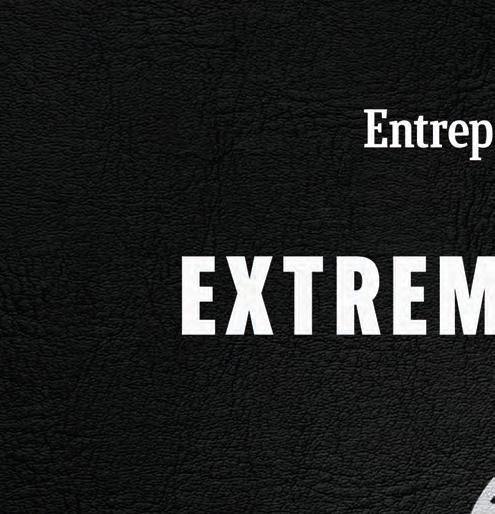



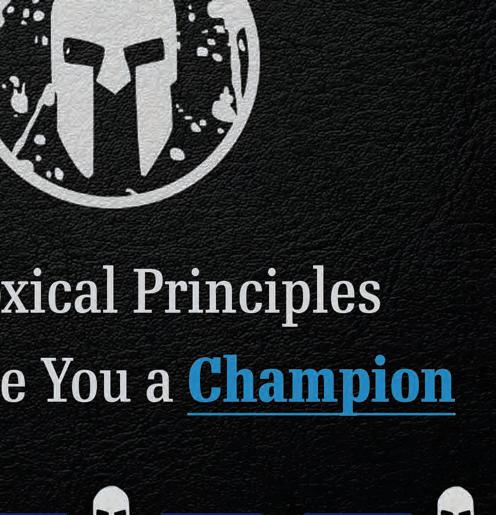



Design and installation of commercial and residential technology modifications and integrations
STARTUP COST
$51.8K-$68.2K
TOTAL UNITS
(Franchised / Co.-Owned) 8/2
LIME Painting
Residential and commercial painting, coatings, and surface restoration
STARTUP COST
$126.7K-$227.1K
TOTAL UNITS
(Franchised / Co.-Owned) 84/2
Linden Creek
Home staging and interior design STARTUP COST
$199K-$299K
TOTAL UNITS
(Franchised / Co.-Owned) 1/1
Made in the Shade
Window coverings
STARTUP COST
$74.5K-$101.2K
TOTAL UNITS
(Franchised / Co.-Owned) 138/0
Mighty Dog Roofing
Residential and commercial roofing services, siding, windows, gutters, and solar
STARTUP COST
$183.9K-$235.9K
TOTAL UNITS
(Franchised / Co.-Owned) 111/0
Miracle Method Surface Refinishing Kitchen and bathroom surface refinishing STARTUP COST
$95.7K-$190.1K
TOTAL UNITS
(Franchised / Co.-Owned) 194/0
MrCool
HVAC equipment and service
STARTUP COST
$776.1K-$2.1M
TOTAL UNITS (Franchised / Co.-Owned) 0/0
N-Hance Wood Refinishing
Cabinet and floor refinishing and color changes, cabinet door replacement, organizational solutions
STARTUP COST
$70.7K-$194.99K
TOTAL UNITS (Franchised / Co.-Owned) 338/0
Outdoor Lighting Perspectives
Residential landscape, architectural, holiday, and hospitality lighting
STARTUP COST
$99.7K-$214.2K
TOTAL UNITS
(Franchised / Co.-Owned) 137/0
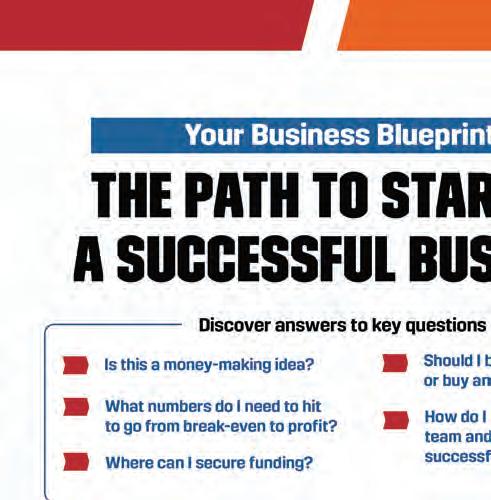
Paint EZ
Residential and commercial painting, drywall repairs, carpentry repairs, concrete coatings, pressure washing, shingle sealing
STARTUP COST
$80.2K-$140.8K
TOTAL UNITS
(Franchised / Co.-Owned) 39/1
Painter Bros
Residential and commercial painting
STARTUP COST
$187.4K-$386.2K
TOTAL UNITS
(Franchised / Co.-Owned) 29/4
Painter1
Residential and commercial painting
STARTUP COST
$71.3K-$153.4K
TOTAL UNITS
(Franchised / Co.-Owned) 45/0
Performance Painting
Commercial painting services
STARTUP COST
$117.8K-$205.4K
TOTAL UNITS (Franchised / Co.-Owned) 0/1
PremierGarage
Garage organizing units, storage, and flooring
STARTUP COST
$185.2K-$298.7K
TOTAL UNITS
(Franchised / Co.-Owned) 168/0
Premier Pools & Spas
Residential pool construction STARTUP COST
$58.95K-$119K
TOTAL UNITS (Franchised / Co.-Owned) 128/1
Preserve Services
Multiservice construction management STARTUP COST
$68.4K-$95.6K
TOTAL UNITS (Franchised / Co.-Owned) 8/1
ProSource Wholesale Wholesale kitchen, bath, and flooring products STARTUP COST
$955.5K-$971.7K
TOTAL UNITS (Franchised / Co.-Owned) 145/3
Re-Bath
Bathroom remodeling STARTUP COST
$276.3K-$609.6K
TOTAL UNITS (Franchised / Co.-Owned) 131/0
Renovation Sells Residential presale renovations
$79K-$171.5K TOTAL UNITS (Franchised / Co.-Owned) 38/1
Richard’s Painting Painting STARTUP COST
$60.2K-$109.5K
TOTAL UNITS (Franchised / Co.-Owned) 25/1


The Roof Resource
Roof replacement
STARTUP COST
$89.1K-$115.7K
TOTAL UNITS
(Franchised / Co.-Owned) 8/1
SaaviHome
Smart home and home automation services
STARTUP COST
$169.1K-$274.1K
TOTAL UNITS (Franchised / Co.-Owned) 2/1
ShelfGenie
Custom pull-out shelving for cabinets and pantries
STARTUP COST
$45.3K-$137.1K
TOTAL UNITS
(Franchised / Co.-Owned) 296/17
Shoppers Drapes & Blinds
Window treatments
STARTUP COST
$108.8K-$208K
TOTAL UNITS
(Franchised / Co.-Owned) 0/1
Simply Cabinetry
Cabinetry design and sales
STARTUP COST
$294.7K-$378.8K
TOTAL UNITS
(Franchised / Co.-Owned) 0/3
Softroc
Rubber safety surfacing
STARTUP COST
$85.1K-$170.5K
TOTAL UNITS
(Franchised / Co.-Owned) 30/0
Spray Foam Genie
Spray foam insulation services
STARTUP COST
$323.5K-$545.2K
TOTAL UNITS (Franchised / Co.-Owned) 40/0
Spray-Net
Exterior and interior home renovation
STARTUP COST
$175.8K-$236.8K
TOTAL UNITS (Franchised / Co.-Owned) 87/2
Stand Strong Fencing
Fencing, railing, staining, and sealing
STARTUP COST
$160.6K-$226.5K
TOTAL UNITS (Franchised / Co.-Owned) 24/0
Superior Fence & Rail
Fence sales and installation
STARTUP COST
$130.5K-$206.8K
TOTAL UNITS
(Franchised / Co.-Owned) 295/2
Surface Experts
Interior hard surface repairs
STARTUP COST
$140.8K-$227.5K
TOTAL UNITS
(Franchised / Co.-Owned) 80/1
Surface Specialists
Bathtub repair and refinishing, tub liners, bath remodeling
STARTUP COST
$43.2K-$56K
TOTAL UNITS
(Franchised / Co.-Owned) 48/0
The Tailored Closet
Home organization and storage solutions
STARTUP COST
$155.2K-$268.7K
TOTAL UNITS
(Franchised / Co.-Owned) 165/0
That 1 Painter
Residential and commercial painting and cosmetic repairs
STARTUP COST
$113K-$189K
TOTAL UNITS
(Franchised / Co.-Owned) 51/6
360 Painting
Interior and exterior painting
STARTUP COST
$101.4K-$145K
TOTAL UNITS
(Franchised / Co.-Owned) 141/0
Tile Liquidators
Floor & Design
Flooring stores
STARTUP COST
$79.7K-$167.2K
TOTAL UNITS (Franchised / Co.-Owned) 16/0
Top Rail Fence
Residential and commercial fencing
STARTUP COST
$112.9K-$213.4K
TOTAL UNITS (Franchised / Co.-Owned) 166/0
UBuildIt
Construction consulting STARTUP COST
$78.4K-$220.2K
TOTAL UNITS (Franchised / Co.-Owned) 58/15
Up Closets
Custom closets and home organization services
STARTUP COST
$67.3K-$169.8K
TOTAL UNITS
(Franchised / Co.-Owned) 16/0
USA Insulation Home insulation and energy-efficient products STARTUP COST
$265.5K-$410K
TOTAL UNITS (Franchised / Co.-Owned) 113/1
Window World Residential windows, doors, siding, roofing, and other exterior remodeling products
STARTUP COST
$123.4K-$331.2K
TOTAL UNITS (Franchised / Co.-Owned) 212/0
Wise Coatings Floor coatings
STARTUP COST
$102.96K-$122K
TOTAL UNITS (Franchised / Co.-Owned) 27/1
Wonderly Lights
Holiday and exterior lighting services
STARTUP COST
$80.6K-$114K
TOTAL UNITS
(Franchised / Co.-Owned) 24/1
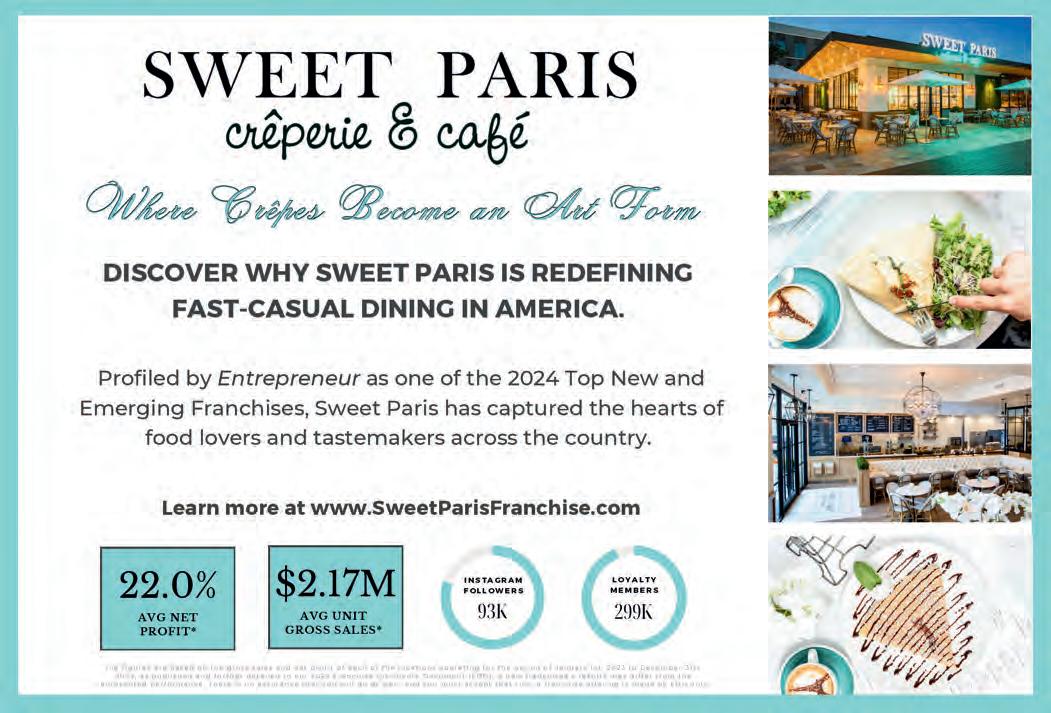
U.S. POSTAL SERVICE STATEMENT OF OWNERSHIP, MANAGEMENT, AND CIRCULATION REQUIRED BY 39 U.S.C.
3685. 1) Title of Publication: Entrepreneur® 2) Publication No. (ISSN): 0163-3341. 3)
Date of Filing 10/1/2024. 4) Frequency of Issue: Bi-Monthly. 5) No. of Issues Published Annually: 6. 6) Annual Subscription Price: $19.97. 7) Complete Mailing Address of Known Office of Publication: Entrepreneur Media, Inc., 1651 East Fourth Street, Suite 125, Santa Ana, CA 92701. 8) Complete Mailing Address of Headquarters of General Business Office of Publisher: Entrepreneur Media, Inc., 1651 East Fourth Street, Suite 125, Santa Ana, CA 92701. 9) Full Names and Complete Mailing Addresses of Publisher, Editor, and Managing Editor. Publisher: James Clauss, 1651 East Fourth Street, Suite 125, Santa Ana, CA 92701. Editor in Chief: Jason Feifer, 1651 East Fourth Street, Suite 125, Santa Ana, CA 92701. Managing Editor: Monica Im, 1651 East Fourth Street, Suite 125, Santa Ana, CA 92701. 10) Owner: Entrepreneur Media, Inc., 1651 East Fourth Street, Suite 125, Santa Ana, CA 92701. 11) Known Bondholders, Mortgagees, and Other Security Holders Owning or Holding 1 Percent or More of Total Amount of Bonds, Mortgages or Other Securities: None. 12) Tax Status: Not Applicable. 13) Publication Title: Entrepreneur®. 14) Issue Date for Circulation Data: July/Aug 2024. 15) Extent and Nature of Circulation (Average No. Copies Each Issue During Preceding 12 Months. No. Copies of Single Issue Published nearest to Filing Date); A. Total Number of Copies (Net Press Run): 313,823; 300,054; B. Paid Circulation: 1) Mailed Outside-County Paid Subscriptions Stated on PS Form 3541: 235,766; 225,443; 3) Paid Distribution Outside the Mails Including Sales Through Dealers and Carriers, Street Vendors, Counter Sales, and other Paid Distribution Outside USPS: 7,460; 7,000; C. Total Paid Distribution (Sum of 15B-1 and 15B-3): 243,226; 232,443; D. Free or Nominal Rate Distribution: 1) Free or Nominal Rate Outside-County Copies Included on PS Form 3541: 44,824; 42,861; E. Total Free or Nominal Rate Distribution: 44,824; 42,861; F. Total Distribution (Sum of 15C and 15E): 288,050; 275,304; G. Copies Not Distributed: 25,773; 24,750; H. Total (Sum of 15F and 15G): 313,824; 300,054; I. Percent Paid (15C/15F x 100): 84.4%; 84.4%. 16) A. Requested and Paid Electronic Copies: 133,987; 106,928; B. Total Requested and Paid Print Copies and Requested/Paid Electronic Copies (Line 15c): 377,213; 339,371; C. Total Requested Copy Distribution (Line 15F) and Requested/ Paid Electronic Copies: 422,036; 382,232; D. Percent Paid and/or Requested Circulation (Both print & Electronic Copies): 89.4%; 88.8%. 17) Publication of Statement of Ownership: If the publication is a general publication, publication of this statement is required. Will be printed in the November/December 2024 issue of this publication. 18) Signature and Title of Editor, Publisher, Business Manager, or Owner: I certify that all information furnished on this form is true and complete. I understand that anyone who furnishes false or misleading information on this form or who omits material or information requested on the form may be subject to criminal sanctions (including fines and imprisonment) and/or civil sanctions (including civil penalties). James Clauss, Publisher
MENTAL HEALTH & AUTISM SERVICES
This is an emerging franchise category that didn’t exist just a few years ago, and is still small—but it’s already seeing great growth. Franchises offering general mental health services have paved the way, and those with a focus on helping customers on the autism spectrum are now beginning to follow their lead.
Neurotechnology to help the brain relax and reset
STARTUP COST
$104.4K-$226.6K
TOTAL UNITS
(Franchised / Co.-Owned) 61/1
Changing the Spectrum
ABA therapy
STARTUP COST
$112.5K-$206.5K
TOTAL UNITS
(Franchised / Co.-Owned) 0/2
Ellie Mental Health
Outpatient mental health services
STARTUP COST
$290.3K-$508.9K
TOTAL UNITS
(Franchised / Co.-Owned) 252/24
Essential Speech and ABA Therapy
ABA, speech, and occupational therapy for children 18 months to 6 years diagnosed with autism
STARTUP COST
$209.5K-$669.1K
TOTAL UNITS
(Franchised / Co.-Owned) 9/4
RCG Behavioral Health
Therapy services for children on the autism spectrum
STARTUP COST
$284.1K-$588.1K
TOTAL UNITS
(Franchised / Co.-Owned) 0/3
Success on the Spectrum
Autism treatment services for children and young adults
STARTUP COST
$315K-$842.7K
TOTAL UNITS
(Franchised / Co.-Owned) 41/1
Spending on our furry friends rises every year, and is projected to reach $150.6 billion in 2024, according to the American Pet Products Association. Many people consider pets a part of the family now, so franchises offering pet care, training, grooming, supplies, and more have become indispensable.
All American Pet Resorts
Pet boarding, daycare, and grooming
STARTUP COST
$668K-$1.5M
TOTAL UNITS
(Franchised / Co.-Owned) 10/0
Aussie Pet Mobile
Mobile pet grooming
STARTUP COST
$178.8K-$203.2K
TOTAL UNITS
(Franchised / Co.-Owned) 93/0
Bombs Away!
Pet waste management
STARTUP COST
$51.7K-$113K
TOTAL UNITS
(Franchised / Co.-Owned) 2/1
Camp Bow Wow
Dog daycare, boarding, training, grooming
STARTUP COST
$1.1M-$1.7M
TOTAL UNITS (Franchised / Co.-Owned) 219/1
Central Bark
Dog daycare, boarding, grooming, training, and retail
STARTUP COST
$522.5K-$1M
TOTAL UNITS
(Franchised / Co.-Owned) 40/0
The Dog Stop
Dog care services and products
STARTUP COST
$543K-$1M
TOTAL UNITS
(Franchised / Co.-Owned) 18/6
Dogtopia
Dog daycare, boarding, and spa services
STARTUP COST
$607.8K-$1.3M
TOTAL UNITS
(Franchised / Co.-Owned) 259/6
Dog Training Elite
Dog training
STARTUP COST
$173.6K-$203.3K
TOTAL UNITS (Franchised / Co.-Owned) 395/0
DoodyCalls
Pet waste management STARTUP COST
$64K-$83.5K
TOTAL UNITS (Franchised / Co.-Owned) 97/2
EarthWise Pet
Pet food and supplies, grooming, self-wash, and veterinary services
STARTUP COST
$288K-$828K
TOTAL UNITS
(Franchised / Co.-Owned) 138/60
FairyTail Pet Care
Pet care at weddings and special events
STARTUP COST
$23.3K-$43.5K
TOTAL UNITS
(Franchised / Co.-Owned) 5/2
Fetch! Pet Care
Pet-sitting, dog-walking STARTUP COST
$88.6K-$103.7K
TOTAL UNITS
(Franchised / Co.-Owned) 143/18
Furry Land Mobile Grooming Mobile pet grooming STARTUP COST
$136.5K-$309.2K
TOTAL UNITS (Franchised / Co.-Owned) 73/0
GoDog Pet boarding, daycare, bathing, grooming, wellness services, training, and dog parks
STARTUP COST
$1.99M-$3.7M
TOTAL UNITS (Franchised / Co.-Owned) 0/4
Happy Cat Hotel & Spa Luxury cat boarding, grooming, and retail STARTUP COST
$470.1K-$725.6K
TOTAL UNITS (Franchised / Co.-Owned) 4/2
Hounds Town USA Dog daycare, pet boarding, pet grooming STARTUP COST
$542.1K-$1.1M
TOTAL UNITS (Franchised / Co.-Owned) 65/1
K9 Resorts Luxury Pet Hotel Luxury dog daycare and boarding STARTUP COST
$1.5M-$2.4M
TOTAL UNITS (Franchised / Co.-Owned) 27/7
Onyva Dog grooming STARTUP COST
$384.9K-$784.7K
Pet Evolution
Healthy pet food, pet products, grooming, selfwash stations
STARTUP COST
$800.6K-$1.3M
TOTAL UNITS (Franchised / Co.-Owned) 14/2
Petland
Pets, pet supplies, boarding, daycare, grooming
STARTUP COST
$313K-$1.1M
TOTAL UNITS
(Franchised / Co.-Owned) 280/27
Pet Passages
Pet funeral and cremation services and products
STARTUP COST
$71.2K-$448.9K
TOTAL UNITS
(Franchised / Co.-Owned) 14/3
Pet Supplies Plus Pet food and supplies, bathing/grooming services
STARTUP COST
$498.3K-$1.98M
TOTAL UNITS
(Franchised / Co.-Owned)
500/232
Pet Wants
Natural pet-food stores/ delivery
STARTUP COST
$137.9K-$219K
TOTAL UNITS (Franchised / Co.-Owned) 134/0
PetWellClinic
Walk-in pet clinics
STARTUP COST
$274.2K-$655.5K
TOTAL UNITS (Franchised / Co.-Owned) 20/8
PottyPro
Dog waste management
STARTUP COST
$8.3K-$81.5K
TOTAL UNITS (Franchised / Co.-Owned) 1/1
Puparazzi Mobile
Pet Spaw
Mobile grooming services
STARTUP COST
$70K-$96.7K
TOTAL UNITS (Franchised / Co.-Owned) 1/1
Salty Dawg Pet
Salon + Bakery
Dog grooming, food, treats, and accessories
STARTUP COST
$185.3K-$460.95K
TOTAL UNITS
(Franchised / Co.-Owned) 3/0
Salty Paws
Dog ice cream shops and trucks
STARTUP COST
$73.3K-$200.7K
TOTAL UNITS (Franchised / Co.-Owned) 7/4
Scenthound
Routine hygiene and wellness care for dogs
STARTUP COST
$318.7K-$499.97K
TOTAL UNITS
(Franchised / Co.-Owned) 96/6
Scoop Soldiers
Pet waste removal
STARTUP COST
$68.6K-$118.8K
TOTAL UNITS
(Franchised / Co.-Owned) 95/11
Sit Means Sit Dog Training
Dog training
STARTUP COST
$31.8K-$128.9K
TOTAL UNITS
(Franchised / Co.-Owned) 160/0
Tip Top K9
Dog training
STARTUP COST
$78.1K-$153.3K
TOTAL UNITS
(Franchised / Co.-Owned) 19/0
Vanity Fur
Mobile pet grooming services
STARTUP COST
$78.2K-$96.9K
TOTAL UNITS
(Franchised / Co.-Owned) 2/1
Wagbar
Off-leash dog parks and bars
STARTUP COST
$472.5K-$1.1M
TOTAL UNITS
(Franchised / Co.-Owned) 0/1
Wag N’ Wash
Self-service pet bathing, grooming, pet supplies
STARTUP COST
$513.3K-$1.3M
TOTAL UNITS
(Franchised / Co.-Owned) 19/6
Wild Birds Unlimited
Bird-feeding supplies and nature gift items
STARTUP COST
$224.3K-$379.3K
TOTAL UNITS
(Franchised / Co.-Owned) 361/1
Woof Gang Bakery & Grooming
Pet stores and pet
grooming
STARTUP COST
$179.2K-$419.3K
TOTAL UNITS
(Franchised / Co.-Owned) 212/0
Woofie’s
Pet sitting, dog walking, mobile pet grooming
STARTUP COST
$160.1K-$274.4K
TOTAL UNITS
(Franchised / Co.-Owned) 47/0
Zoomin Groomin
Mobile pet grooming
STARTUP COST
$95.9K-$188.1K
TOTAL UNITS
(Franchised / Co.-Owned) 134/0
Zoom Room
Indoor dog training and socialization, pet products
STARTUP COST
$317.6K-$489.5K
TOTAL UNITS
(Franchised / Co.-Owned) 64/5
Unfortunately, natural disasters have become an increasingly common fact of life. That creates a lot of need for franchises that respond to those disasters. These brands help get customers’ homes and businesses back to normal as quickly as possible—which makes them more important (and more recessionproof) than ever.
AdvantaClean
Mold removal and remediation and water damage restoration
STARTUP COST
$116.9K-$197.4K
TOTAL UNITS
(Franchised / Co.-Owned) 92/0
All Dry Services
Water and mold remediation and restoration
STARTUP COST
$105.9K-$311.95K
TOTAL UNITS
(Franchised / Co.-Owned) 125/1
Best Option
Restoration
Disaster restoration
STARTUP COST
$185.9K-$230.5K
TOTAL UNITS
(Franchised / Co.-Owned) 68/0
Blue Kangaroo Packoutz
Contents restoration
STARTUP COST
$241.2K-$518.6K
TOTAL UNITS
(Franchised / Co.-Owned) 129/1
Content Recovery Specialists
Personal property restoration
STARTUP COST
$135.5K-$294K
TOTAL UNITS
(Franchised / Co.-Owned) 22/1
DRYmedic Restoration Services
Disaster restoration
STARTUP COST
$187.97K-$311.8K
TOTAL UNITS
(Franchised / Co.-Owned) 54/22
FRSTeam
Restoration of textiles, electronics, and contents
STARTUP COST
$44.4K-$411K
TOTAL UNITS
(Franchised / Co.-Owned) 38/11
Lightspeed
Restoration
Residential and commercial
water and fire restoration
STARTUP COST
$154.2K-$252.5K
TOTAL UNITS
(Franchised / Co.-Owned) 24/0
Mold Medics
Mold mitigation and indoor environmental health
STARTUP COST
$148.4K-$267K
TOTAL UNITS (Franchised / Co.-Owned) 4/0
911 Restoration
Residential and commercial property restoration STARTUP COST
$102.1K-$246.9K
TOTAL UNITS
(Franchised / Co.-Owned) 330/6
1-800-Packouts
Contents packing, cleaning, storage, and restoration
STARTUP COST
$239.2K-$442.5K
TOTAL UNITS (Franchised / Co.-Owned) 47/0
1-800-Textiles
Textile restoration STARTUP COST
$57.7K-$939K
TOTAL UNITS (Franchised / Co.-Owned) 47/0
1-800 Water Damage
Property restoration
STARTUP COST
$210.9K-$316.4K
TOTAL UNITS (Franchised / Co.-Owned) 185/0
Paul Davis
Restoration
Insurance restoration STARTUP COST
$285.8K-$737.4K
TOTAL UNITS (Franchised / Co.-Owned) 316/0
Prism Specialties
Restoration of electronics, art, textiles, and documents STARTUP COST
$149.99K-$322.3K
TOTAL UNITS (Franchised / Co.-Owned) 165/0
PuroClean
Property damage restoration and remediation STARTUP COST
$95.5K-$245.9K
TOTAL UNITS (Franchised / Co.-Owned) 471/0
Rainbow Restoration Restoration and remediation
STARTUP COST
$169.3K-$325.9K
TOTAL UNITS (Franchised / Co.-Owned) 380/0
Restoration 1 Residential and commercial water, fire, smoke, and mold restoration STARTUP COST
$103.7K-$271.8K
TOTAL UNITS (Franchised / Co.-Owned) 310/0
Rytech Restoration Water, mold, fire, and smoke restoration; COVID sanitation STARTUP COST
$166.5K-$258.1K
TOTAL UNITS (Franchised / Co.-Owned) 94/2
ServiceMaster Restore Commercial/residential disaster restoration STARTUP COST
$255.1K-$365.3K
TOTAL UNITS (Franchised / Co.-Owned) 2,284/0
Servpro Fire, water, and other damage cleanup, restoration, and reconstruction STARTUP COST
$241.3K-$301.8K
TOTAL UNITS (Franchised / Co.-Owned) 2,284/0
Steamatic Insurance/disaster restoration, cleaning, mold remediation, air quality control
STARTUP COST
$216.5K-$444.8K
TOTAL UNITS (Franchised / Co.-Owned) 130/3
True North Restoration Restoration services STARTUP COST
$115K-$233.3K
TOTAL UNITS (Franchised / Co.-Owned) 18/0

United Water
Restoration Group
Water, fire, and mold restoration
STARTUP COST
$214.3K-$627.4K
TOTAL UNITS
(Franchised / Co.-Owned) 38/11
Voda Cleaning & Restoration
Restoration and floor cleaning
STARTUP COST
$176.2K-$257.9K
TOTAL UNITS
(Franchised / Co.-Owned) 41/1
The National Council on Aging reports that nearly 58 million Americans are 65 or older. With that number expected to climb to 88 million by 2060, the demand for assisted living facilities, placement services, and in-home care for those wishing to maintain independence has nowhere to go but up.
Acti-Kare
Nonmedical home care
STARTUP COST
$32.5K-$57.6K
TOTAL UNITS
(Franchised / Co.-Owned) 145/0
Always Best Care
Senior Services
In-home care, assistedliving referral services, home health care
STARTUP COST
$89.7K-$145.9K
TOTAL UNITS
(Franchised / Co.-Owned) 260/0
Amada Senior Care
Home care, medical staffing, assisted-living placement
STARTUP COST
$116.8K-$278K
TOTAL UNITS
(Franchised / Co.-Owned) 197/6
AmeriCare
Nonmedical home care
STARTUP COST
$167.3K-$206.9K
TOTAL UNITS
(Franchised / Co.-Owned) 33/0
A Place At Home
Nonmedical home care, care coordination, seniorliving placement, staffing solutions
STARTUP COST
$89.99K-$168.1K
TOTAL UNITS
(Franchised / Co.-Owned) 45/1
Assisted Living Locators
Senior-living placement and referral services
STARTUP COST
$74.6K-$94.5K
TOTAL UNITS
(Franchised / Co.-Owned) 152/4
Assisting Hands Home Care
Home care
STARTUP COST
$94.5K-$176.4K
TOTAL UNITS
(Franchised / Co.-Owned) 197/5
At Home Eldercare
In-home nonmedical senior care
STARTUP COST
$66.9K-$115.7K
TOTAL UNITS
(Franchised / Co.-Owned) 8/0
Boost Home
Healthcare
Home healthcare
STARTUP COST
$155.1K-$310.3K
TOTAL UNITS
(Franchised / Co.-Owned) 7/0
BrightStar Care
Medical/nonmedical home care, medical staffing
STARTUP COST
$112.5K-$231.5K
TOTAL UNITS
(Franchised / Co.-Owned) 365/35
CarePatrol
Senior living placement, referral, and consulting
STARTUP COST
$60.1K-$130.97K
TOTAL UNITS
(Franchised / Co.-Owned) 193/0
Care with Love
In-home senior care
STARTUP COST
$132K-$207.3K
TOTAL UNITS (Franchised / Co.-Owned) 2/2
Caring Senior Service
Nonmedical home care
STARTUP COST
$97.9K-$131.7K
TOTAL UNITS
(Franchised / Co.-Owned) 45/5
Chefs For Seniors
In-home meal preparation service for seniors
STARTUP COST
$16.9K-$35K
TOTAL UNITS
(Franchised / Co.-Owned) 88/1
ComForCare
Nonmedical home care
STARTUP COST
$72.98K-$163.9K
TOTAL UNITS (Franchised / Co.-Owned) 250/0
Comfort Keepers
In-home senior care
STARTUP COST
$105.1K-$176.2K
TOTAL UNITS
(Franchised / Co.-Owned) 660/64
Executive Home Care
Home healthcare
STARTUP COST
$101.95K-$144.7K
TOTAL UNITS (Franchised / Co.-Owned) 22/0
FirstLight Home Care
Nonmedical home care
STARTUP COST
$125.7K-$199.7K
TOTAL UNITS (Franchised / Co.-Owned) 231/0
Griswold Home Care
Nonmedical home care STARTUP COST
$99.1K-$177.1K
TOTAL UNITS (Franchised / Co.-Owned) 183/16
Home Helpers Home Care
/
/ Co.-Owned) 1,263/10 Homewatch CareGivers
TOTAL UNITS (Franchised / Co.-Owned) 248/0 HomeWell Care Services Home care STARTUP COST
$54.4K-$234.9K
TOTAL UNITS (Franchised / Co.-Owned) 170/0
Keep Safe Care In-home care services STARTUP COST $20.9K-$41.1K TOTAL UNITS (Franchised / Co.-Owned) 1/0
Legato Living Residential assisted living and memory care
STARTUP COST
$255.4K-$1.3M TOTAL UNITS (Franchised / Co.-Owned) 5/0
Nurse Next Door Home Care Services Medical/nonmedical home care
STARTUP COST
$115.1K-$211.6K
TOTAL UNITS (Franchised / Co.-Owned) 209/1
Oasis Senior Advisors
$67.2K-$111.99K
TOTAL UNITS
(Franchised / Co.-Owned) 120/20
1Heart Caregiver Services
Nonmedical senior care STARTUP COST
$91.8K-$138.8K TOTAL UNITS
(Franchised / Co.-Owned) 24/2
One You Love Homecare
Nonmedical personal care and companion care STARTUP COST
$95.4K-$170.8K TOTAL
(Franchised / Co.-Owned) 23/1
Qualicare
$92.6K-$204.5K TOTAL UNITS (Franchised / Co.-Owned) 73/5
Right at Home Home care, medical staffing STARTUP COST
$88.7K-$160.7K
TOTAL UNITS (Franchised / Co.-Owned) 716/18
Right Hand Senior Care
Nonmedical home care for seniors and people with disabilities STARTUP COST
$83.1K-$138.8K TOTAL UNITS (Franchised / Co.-Owned) 0/1 Senior Care Authority
$60.4K-$105.6K
UNITS (Franchised / Co.-Owned) 102/2
Senior Helpers
$127.8K-$171.8K TOTAL UNITS (Franchised / Co.-Owned) 374/13
Synergy HomeCare
Nonmedical home care
STARTUP COST
$48.1K-$150.5K TOTAL UNITS (Franchised / Co.-Owned) 519/0
Talem Home Care & Placement Services
$80.8K-$210.5K TOTAL UNITS (Franchised / Co.-Owned) 8/2
Touching Hearts At Home Senior home care
STARTUP COST
$63.9K-$93.1K
TOTAL UNITS (Franchised / Co.-Owned) 64/0
Visiting Angels
Nonmedical home care
STARTUP COST
$125.5K-$171.2K
TOTAL UNITS (Franchised / Co.-Owned) 717/0


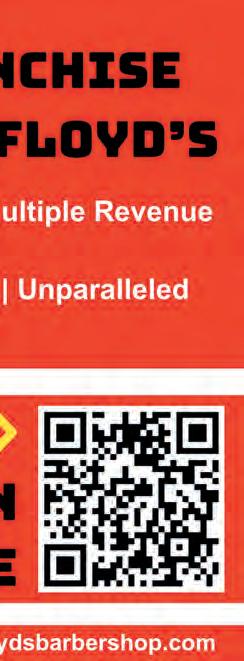








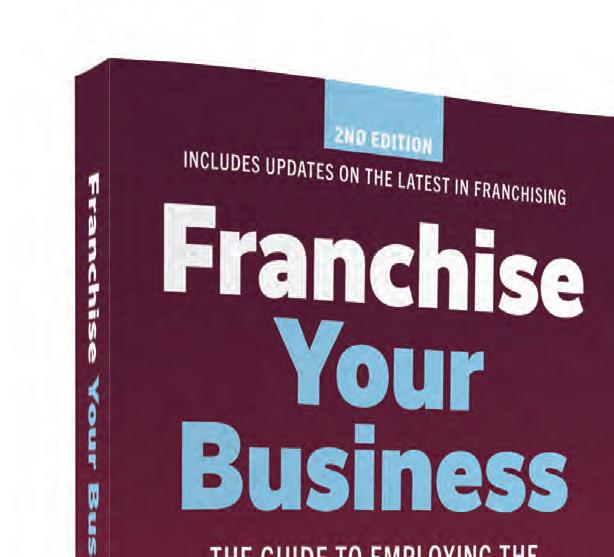



One of these
Then make your first call.














by Christina Barsi, founder, Avant Haüs Media and Boss-Goddess.co
Iworked the same job for 19 years. I hated it, but it paid the bills. Then, in 2017, I entertained an exciting but terrifying question: Could I be an entrepreneur? I wasn’t sure, so I needed something that felt like a guarantee. I searched for signs that would feel like a big, clear “yes!” Instead, what I found was a tarot card deck. I wasn’t especially interested in tarot, but I spotted it in a store and was desperate for answers. So I bought the deck. Maybe this could…tell my future or something? I quickly learned that tarot does not, in fact, make predictions. Instead, it does something real and actually valuable: It prompts questions.
I’d pull a card. It would have, say, a bear on it. (This was an “animal spirit” deck.) The bear would represent things like new beginnings, growth, and growing pains—which would prompt me to think more deeply about my needs, and pull me out of whatever granular worry I had that day. I started to realize something critical: There was no single answer to my question, and no way to guarantee future success. Instead, I just needed to ask: “What will serve me and the situation the best right now?” That allowed me to trust myself. I may not have had all the answers for my life, but I knew my needs now. And I needed change.
By the fall of 2017, I finally took that leap. I quit my day job, started a podcast production company, and now also run a coaching business. Each day, with each big challenge or hard decision, I rely upon the insight I gained from those tarot cards: There is no such thing as a perfect answer. But there is such a thing as an answer that feels right to you because it came from your gut. It’s an exercise in self-trust. I lacked that after 19 years of being an employee, but I found it once I had to rely on myself.
I don’t need a tarot deck to know this, but I bought four more decks anyway. They sit on a table in my office. And every time I embark upon something new, I know that bear card is waiting for me. It won’t have the answers. But that’s fine; I do.

→ BEAR WITH ME
The author holds her tarot deck, which helped her ask the most important question.
WHAT INSPIRES YOU?
Tell us about a story, person, object, or something else that pushes you forward, and we may include it in a future issue. And we may make you photograph it, too. Email INSPIRE@ENTREPRENEUR.COM with the subject line “WHAT INSPIRES ME.”











